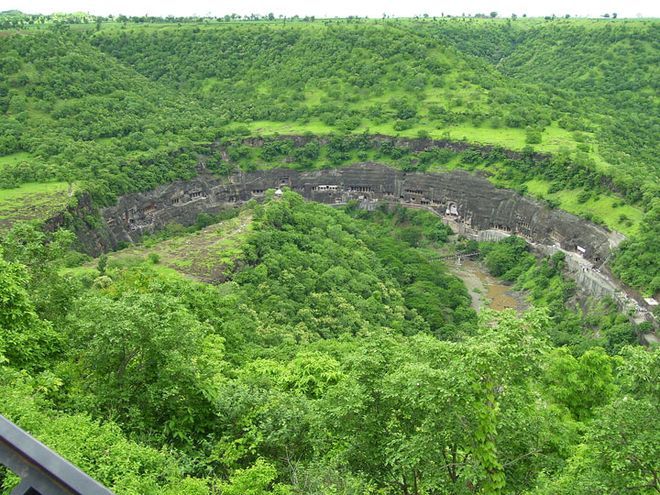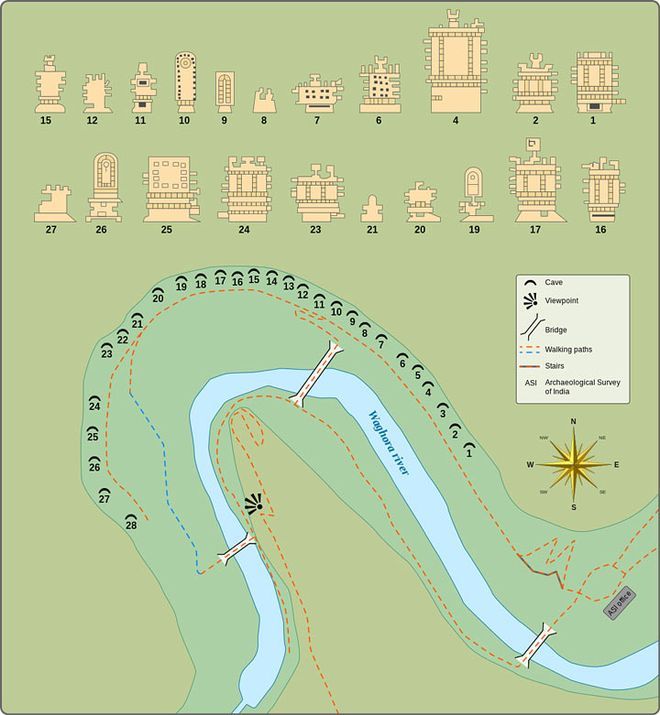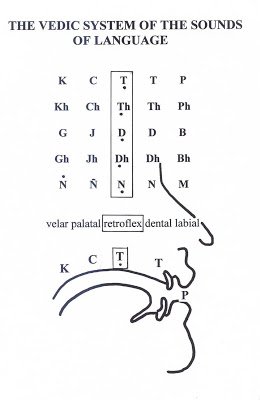Halil Rud Civilization; Intercultural Style; Chlorite Hand-bag; Meteoritic Iron
http://ijas.usb.ac.ir/article_1442.html
Jiroft, Cradle Of Human Civilization In Iran?For centuries, Mesopotamia was thought to be the world's oldest civilization. This was generally accepted by most people until a 5,000-year old temple was discovered in Jiroft Historical Site in Iran's southern Kerman province, prompting archaeologists to identify the region as the world's oldest cradle of human civilization.
![Jiroft, cradle of human civilization in Iran? Jiroft, cradle of human civilization in Iran?]() | One of the mounds at Jiroft Historical Site
[Credit: Ali Shahryari] |
Jiroft has undergone different phases of archeological excavations since 2002. Although many valuable objects, including two clay inscriptions carrying the oldest human scripts, have been unearthed during authorized excavations in the region, many more such objects have been found by pillagers and smuggled abroad to become the centerpieces in museums across the world.
Nader Alidad Soleimani, the manager of Jiroft's Cultural Heritage Site, has been studying the location for the past 20 years. He has greatly contributed to safeguarding the cultural and historical remains of Jiroft.
Iran Daily conducted an interview with him to get detailed information about the ongoing studies.
Excerpts follow:
ID: Please explain the various phases of excavations that have been conducted in Jiroft.
SOLEIMANI: The first phase of official archaeological studies was conducted during 2002-2007. The studies resumed in the region in 2014 after a seven-year pause. However, I have been exploring the Jiroft region since 1995, since I was aware of the historical importance of Jiroft, years before official studies began. Currently, the second season of excavations is underway in Esfandagheh Plains in Jiroft. The first season was completed last summer.
![Jiroft, cradle of human civilization in Iran? Jiroft, cradle of human civilization in Iran?]() | Excavations at site B - thought to be a citadel
[Credit: National Geographic] |
Valuable architectural items have been unearthed during the first and the second excavation seasons, including evidences of Neolithic settlement and the remnants of ancient buildings in red and yellow colors. In addition to archaeological excavations, the joint three-month research studies were conducted in collaboration with a delegation from German University of Tübingen International and Iranian experts during Feb. 20-May 20, 2015. The research yielded positive outcomes and raised our knowledge about the historical site.
ID: American archaeologists have described Jiroft's excavations as the largest excavation projects of its kind ever conducted in the Middle East. The importance of Jiroft's human civilization has been accepted by French, British and Italian experts as well. Many experts also believe that if any important event were to occur in the field of archaeology within the next 50 years, it would definitely occur in Jiroft. Please tell us more about the geographic situation of Jiroft and its importance.
SOLEIMANI: Many think that Jiroft is only a city with identifiable boundaries. This is while, when we talk of Jiroft we mean an extensive cultural field that once was thrived along Halilroud river. The river is situated in the southeast of Iran near Jiroft, Kerman province. The river, which extends for 390 kilometers, runs along the Jiroft and Kahnuj districts. It originates in Hazar mountains, some 3,300 meters above sea level and about 100 kilometers to the northwest of Jiroft, and flows to the southwest. Many historical hills have been located in this massive area, each providing valuable evidence of the cultural richness of the region. The region is host to various archeological teams every year.
![Jiroft, cradle of human civilization in Iran? Jiroft, cradle of human civilization in Iran?]() | An inscription found in archaeological excavations of Kerman Province near,Jiroft,
or the Halil Rud region of Iran, which dates back to the sixth millennium BC
[Credit: Sciencepost] |
ID: Which countries are involved in the archaeological excavation project of Jiroft?
SOLEIMANI: The US, France, Italy and, very recently, Germany have so far sent archaeological teams to Jiroft. Foreign archaeological teams can only work under the supervision of Iranian experts. Their activities are also limited.
ID: Why are foreign teams needed for excavations?
SOLEIMANI: Today, archaeology is regarded as an interdisciplinary field. Ancient Botany and Osteology are among the fields of study that have contributed to the development of global archaeology over the past few years. Such fields of study are not available in Iranian universities. Sometimes, they are available but domestic knowledge about them is poor. Theses shortcomings make the need for using the proficiency of foreign archaeologists greatly felt. Foreign experts engaged in excavations help train Iranian students, improve their knowledge, and contribute to the archaeological excavations.
ID: Numerous illegal diggings have taken place in the region in the past, leading to the smuggling of many valuable items. What has the government done to address illegal pillagers or prevent such problems from recurring?
SOLEIMANI: Illegal diggings have damaged Jiroft historical site over the years, leading to the smuggling of a great volume of valuable historical objects, which are now being kept at the world's prestigious museums. The Iranian government has taken effective steps for the repatriation of such objects. Eighteen artifacts, each dating back to 5,000 years were returned home four years ago thanks to former government's efforts. The return of historical objects becomes a more complicated if they are owned by unknown private collectors or kept at private museums. Filing lawsuit against private collectors in international courts is a tougher job.
ID: How much money is allocated for archaeological projects annually?
SOLEIMANI: An annual $10,000 is allocated by the government for archaeological excavations in Jiroft, which is meager given the extensive areas which have to be explored. An archaeological team consists of only six individuals and this is not enough for conducting excavations over such extensive areas. All the shortages pave the ground for looters, and increase the risk of illegal diggings. urrently, the digs are refilled on the completion of the projects so that the site and historical objects can be protected. This is while, a historical site, such as Jiroft, can also serve as an open-air museum. An open-air museum attracts so many visitors and contributes to the development of tourism sector as well.
Author: Fatemeh Shokri & Atefeh Rezvan-Nia | Source: Iran Daily [August 04, 2015]
https://archaeologynewsnetwork.blogspot.in/2015/08/jiroft-cradle-of-human-civilization-in.html#YMj4fRospTI7tiqa.97
Ancient Metal Relics Discovered In Jiroft
Persian Journal ^ | 7-19-2006
Posted on 21/07/2006, 03:34:59 by blam
Ancient Metal Relics Discovered in Jiroft
Jul 19, 2006
The police department of Jiroft succeeded in confiscating 41 metal relics belonging to the pre-historic and historic periods. The most ancient one is a Riton belonging to the third millennium BC. Riton is a kind of goblet with the head of an animal, usually in the shape of a lion, horse, ibex, or winged lion.
![]()
"The police department of Jiroft found 41 bronze, copper, and silver relics. The most ancient one is a Riton with the head of a humped cow belonging to some 5000 years ago," said Nader Soleimani, archeologist from the Cultural Heritage and Tourism Department of Kerman province.
According to Soleimani, a bronze dagger belonging to the first millennium BC with the design of an animal like crocodile is one of the other interesting relics in this collection. "The designs which can be seen on this dagger depict something like the crocodiles which still exist in south of Chabahar Port in Iran's Sistan va Baluchestan province. The person who came up with this design must have seen this animal closely to be able to put down such accurate pattern," added Soleimani.
A bronze axe and a copper plaque engraved with a humped cow, an ibex and palm tree are the other discovered relics. "Such designs had already been seen in other parts of Jiroft on artifacts made with soapstone," said Soleimani.
Soleimani also announced the existence of a small bronze vessel belonging to the third millennium BC with some geometrical designs, and also 24 antique coins belonging to different periods of Parthian, Sassanid, the beginning of Islamic, Seljuk, Ilkhanid, Safavid, and Qajar periods in this newly discovered collection.
Jiroft historical site is located in Kerman province on the basin of Halil Rud River. Jiroft is known to be one of the most historical sites of the world which enjoyed a rich civilization in the third millennium BC. Over 100 historical sites have so far been identified along the bank of Halili-Rud River, extended for 400 kilometers.
Lack of enough control over this historical site and unawareness of the public about its importance turned Jiroft into a paradise for illegal diggers, plundering a large number of ancient relics in this site. What happened in Jiroft is today known as one of the most tragic events in archeology. It was only after all these illegal excavations that the archeologists rushed to this area to study one of the most prominent historical sites in Iran which revealed much about one of the most ancient civilizations of the world. Some archeologists believe that more findings on the earliest civilization that lived in Jiroft will be a turning point in their current understanding of the history of civilization.
![]()
"This threshold of history found in Jiroft is what is lost in the evolution course of the Mesopotamian civilization and is not that notable in that of Egypt. There are so many objects dating to this time found in the Halil-Rud Area, which can fill the gap in the formation and development course of the Jiroft civilization. Therefore, one can say that Jiroft is the capital of today's world archeology because it allows the archeologists to modify the previous theories on how people lived during that time. The part of history that was hidden in the strata of Iran's plateau is essential to rebuilding the base of world's history," these words were expressed by Jean Perrot, one of world's greatest archeologists who headed the French teams working in Iran from 1968 to 1978 and also attended the International Conference of Halil-Rud Civilization which was held in Jiroft from 1-3 February 2005.
Up until now, some 4000 historical relics which had been unearthed during illegal excavations in Jiroft have been identified and confiscated by the police department.
http://www.freerepublic.com/focus/f-news/1669440/posts
Halil-Rud Civilization: Shahdad
Shahdad Halil-Rud Civilization تمدن هلیل رود- شهداد Ever since the excavations of Ali Hakemi at the site of Shahdad at the edge of the Dasht-I Lut, we have understood that the Bronze Age communities of the Iranian plateau played a central role in the greater ancient world system of exchange that connected all of the Middle East during the 3rd millennium BC. When published in comprehensive form, Hakimi’s results, combined with Tal-I Iblis and Yahya, allowed us to begin to sketch picture of long distance interaction that began with the arrival of the proto- Elamites into the region around 3000 BC and intensified for a millennium before it faded in response to environmental challenges. With additional data coming from the recent excavation at the sites of Konar Sandal South and North in the Halil River Valley, we can now begin to construct a picture of interaction that puts the region of Kerman as a central nexus of interaction in all directions. (Pittman 2011) Prehistoric Shahdad was a major Bronze Age centre discovered at the edge of the Dasht-e-Lut in 1968. From that point up until the early 1970s, the late professor ALI HAKEMI of the Archaeological Institute of Iran supervised intensive excavations at Shahdad over seven consecutive seasons, revealing extensive evidence for a sophisticated civilization using a range of elite artifacts, elaborate metalwork technology, complex burial practices and archaic pictographs. In many ways, the late 1960s and 1970s were a truly pioneering period for the archaeology of southeast Iran, and work at sites like Shahdad, Tal-e Iblis, and Tepe Yahya revolutionized our understanding of Iran in the 3rd and 2nd millennia BC. Since the publication of the monumental volume “SHAHDAD - Archaeological Excavations of a Bronze Age Center in Iran” by ISMEO in 1997, there have been several major books published on the archaeology of southeast Iran, and extensive new excavations at several mound sites, including Konar Sandal at Jiroft in the Halil Rud plain. Five Linear Elamite texts inscribed on metal vessels (W, X, Y, Z and A’) have been recently ‘published’. Through their comparison with the susian Linear Elamite documents corpus, they permit to identify several graphical variants for the same sign. This consideration about graphical variations in Linear Elamite writing gives a better understanding of the only inscription (S) found up to now in Shahdad. Then will be particularly examined the sign probably used to note down the sound in, for which ‘occidental’ variations (in Susa and Marv Dasht plain), different from ‘oriental’ ones (in Shahdad and Konar Sandal), have been identified. ( Desset, 2011) We sampled a small collection of copper working indicators (slag, crucibles, kiln linings, possibly ore fragments) from 4th and 3rd millennium BCE settlement areas of Shahdad. These finds were investigate by the means of XRD, SEM and metallographic analysis, providing preliminary information on the type of metallurgical processes carried out in the site and their changes in time.( Vidale, 2011) Southeast of Iran especially Kerman region has played an important role during the fourth and third millennium BC due to its rich Mines. The most important metallurgical analysis is Hakemi’s work, which have been carried out on Shahdad samples. He has analyzed these samples through AAS, EDAX, SEM and XRFS. Results of his analyses show that high percentage of the coppers in the Shahdad objects testify that craftsmen of Shahdad had not alloyed copper and tin during the 4th and 3rd millennium BC; however a few samples showed that they might have been aware to alloy copper and tin. ( Mortazavi, 2011) The finds of objects made of a special type of coralline limestone are distributed over a vast area that extends from the Persian Gulf and the eastern Iranian Plateau to Mesopotamia. While two manufacturing areas of this stone have been recently identified at Shahdad (see the related paper of Vidale, Desset, Pignatti and Conti), a group of such objects found in excavations at Tello (ancient Girsu) and bearing dedicatory inscriptions of rulers of the so-called Second Dynasty of Lagash, or of high-ranking officials in their service, attest to trade relationships between the independent city-state of Lagash and the East (possibly the area of Shahdad) throughout several generations. These objects are also remarkable in that they represent a unique class of prestige goods and votive artefacts: indeed, in Mesopotamia, they are almost exclusively found at Lagash and for a relatively short period of time. An argument is presented that the ancient name of the stone of which they were made was pirig-gùnu, "spotted lion," that is "leopard spotted stone" - a name that recalls one of the animal symbols par excellence in the Iranian art of the third millennium BC. (Marchesi, 2011) Between 1967 and 1970 three sites in Eastern Iran, Shahdad, Shahr-i Sokhta, Tepe Yahya, contributed to open a new perspective on the emergence of civilization in the Ancient Orient filling the geographic gap between the Near East and the Indian Subcontinent, proving that political complexity and economic wealth had been equally shared by the all agricultural heartlands east of Mesopotamia. While trade circuits and exchange networks did connect desert highlands and alluvial floodplains in a mosaic of polities culturally linked in spite of the autarchic structure of their economies. (Tosi, 2011)
- Jiroft. Antelope, snake, tiger. ranku 'antelope', 'liquid measure'; read rebus: ranku 'tin'. kol = tiger (Santali) kol ‘pancaloha, alloy of five metals (Ta.) http://sarasvatismithy.blogspot.com/ na_ga `serpent' (Sanskrit) na_ga `lead' (Sanskrit)
pōḷa dhā̆vaḍ sãgaṛh 'fortified settlement of magnetite steel, ore workers' signified by Sarasvati Script hieroglyphs
--Hieroglyphs पोळ pōḷa 'zebu'& pōlaḍu 'black drongo' signify polad 'steel'; saggeḍa 'cup' signifies sãgaṛh 'fortified settlement'; samghāta 'adamantine glue or hard metallic cement'
--Evidence from Nahal Mishmar, Jiroft, Halil Rud, Konar Sandal Ancient Near East (Sarasvati Civilization contact areas of Bronze Age, 3rd millennium BCE)
It is remarkable that Meluhha artisans had attained in 3rd millennium BCE the metallurgical competence to formulate adamantine glue (vajra) or hard metallic cement.
Massimo Vidale et al have provided remarkable archaeological narratives from Konar Sandal and Halil Rud (Helmand):
http://www.tandfonline.com/doi/full/10.1080/02666030.2015.1008820 (Konar Sandal)https://www.harappa.com/sites/default/files/pdf/Indus-helmand2.pdf (Helmand)
![Related image]() Jiroft. Vase. Basket-shaped wallet. http://antikforever.com/Perse/Divers/jiroft.htm Jiroft. Vase. Basket-shaped wallet. http://antikforever.com/Perse/Divers/jiroft.htm
Bi. dhŏkrā ʻ jute bag ʼ; Mth. dhokṛā ʻ bag, vessel, receptacle ʼ; OMarw. ḍhokaro m. ʻ basket ʼ; -- N. ḍhokse ʻ place covered with a mat to store rice in, large basket ʼ.(CDIAL 6880) Rebus: dhokra kamar 'cire perdue, lost-wax casting metalworker'.
āre 'lion' rebu: āra 'brass' PLUS dula 'pair' rebus: dul 'metal casting'.
pōḷa 'zebu' rebus: pōḷa 'magnetite, ferrite ore)
pōladu 'black drongo bird' rebus: pōḷad 'steel'
Thus, this Jiroft vase with Sarasvati Script hieroglyphs is a professional calling card -- dharma samjñā 'responsibility badge' -- of the Meluhha cire perdue metalcaster.
"Steel (with a carbon content between pig iron and wrought iron) was first produced in antiquity as an alloy. Its process of production, Wootz steel, was exported before the 4th century BC to ancient China, Africa, the Middle East and Europe. Archaeological evidence of cast iron appears in 5th century BC China."
![]() Bulat steel blade of a knife."Bulat is a type of steel alloy known in Russia from medieval times; regularly being mentioned in Russian legends as the material of choice for cold steel. The name булат is a Russian transliteration of the Persian word fulad, meaning steel. This type of steel was used by the armies of nomadic peoples. Bulat steel was the main type of steel used for swords in the armies of Genghis Khan, the great emperor of the Mongolian Empire. The technique used in making wootz steel has been lost for centuries and the bulat steel used today makes use of a more recently developed technique...Carbon steel consists of two components: pure iron, in the form of ferrite, and cementite or iron carbide, a compound of iron and carbon. Cementite is very hard and brittle; its hardness is about 640 by the Brinell hardness test, whereas ferrite is only 200. The amount of the carbon and the cooling regimen determine the crystalline and chemical composition of the final steel. In bulat, the slow cooling process allowed the cementite to precipitate as micro particles in between ferrite crystals and arrange in random patterns. The color of the carbide is dark while steel is grey. This mixture is what leads to the famous patterning of Damascus steel. Bulat steel blade of a knife."Bulat is a type of steel alloy known in Russia from medieval times; regularly being mentioned in Russian legends as the material of choice for cold steel. The name булат is a Russian transliteration of the Persian word fulad, meaning steel. This type of steel was used by the armies of nomadic peoples. Bulat steel was the main type of steel used for swords in the armies of Genghis Khan, the great emperor of the Mongolian Empire. The technique used in making wootz steel has been lost for centuries and the bulat steel used today makes use of a more recently developed technique...Carbon steel consists of two components: pure iron, in the form of ferrite, and cementite or iron carbide, a compound of iron and carbon. Cementite is very hard and brittle; its hardness is about 640 by the Brinell hardness test, whereas ferrite is only 200. The amount of the carbon and the cooling regimen determine the crystalline and chemical composition of the final steel. In bulat, the slow cooling process allowed the cementite to precipitate as micro particles in between ferrite crystals and arrange in random patterns. The color of the carbide is dark while steel is grey. This mixture is what leads to the famous patterning of Damascus steel.
Cementite is essentially a ceramic, which accounts for the sharpness of the Damascus (and bulat) steel. Cementite is unstable and breaks down between 600–1100 °C into ferrite and carbon, so working the hot metal must be done very carefully." https://en.wikipedia.org/wiki/Bulat_steel
“One of the big mysteries of wootz Damascus steel has been why the art of making these blades was lost…to produce the damascene patterns of a museum-quality wootz Damascus blade the smith would have to fulfill at least three requirements. First, the wootz ingot would have to have come from an ore deposit that provided significant levels of certain trace elements, notably, Cr, Mo, Nb, Mn, or V. This idea is consistent with the theory of some authors30 who believe the blades with good patterns were only produced from wootz ingots made in southern India, apparently around Hyderabad. Second, the data … confirm previous knowledge that wootz Damascus blades with good patterns are characterized by a high phosphorus level. This means that the ingots of these blades would be severely hot short.. as previously shown,15successful forging would require the development of heat-treating techniques that decarburized the surface in order to produce a ductile surface rim adequate to contain the hot-short interior regions. Third, a smith who developed a heat-treatment technique that allowed the hot-short ingots to be forged might still not have learned how to produce the surface patterns, because they do not appear until the surface decarb region is ground off the blades; this grinding process is not a simple matter.” http://www.tms.org/pubs/journals/JOM/9809/Verhoeven-9809.html
Hypertext on Mohenjo-daro seal m301 is composed of hieroglyphs to create a 'composite animal'; this animal has zebu horns. Zebu is the dominant signature tune of Sarasvati Civilization. The message and meaning of the hypertexts of the inscription is simple: a metalwork catalogue is documented by the artisan. The 'rim=of-jar'. hieroglyph signifies a seafaring merchant with a cargo of metalwork: khanka'rim-of-jar' rebus: karṇika, karaika 'helmsman of a seafaring merchant vessel' and supercargo, a representative of the ship's owner on board a merchant ship, responsible for overseeing the cargo and its sale.
![]() m0301 Mohenjo-daro seal. m0301 Mohenjo-daro seal.
Components of hieroglyph multiplex of m0301 inscription are: --ram or sheep (forelegs denote a bovine) --neck-band, ring --bos indicus (zebu)(the high horns denote a bos indicus) --elephant (the elephant's trunk ligatured to human face) --tiger (hind legs denote a tiger) --serpent (tail denotes a serpent) --human face
All these glyphic elements are decoded rebus:
meḍho a ram, a sheep (G.)(CDIAL 10120); kaḍum ‘neck-band, ring’ adar ḍangra ‘zebu’ ibha ‘elephant’ (Skt.); rebus: ib ‘iron’ (Ko.) kolo ‘jackal’ (Kon.)
moṇḍ the tail of a serpent (Santali) Rebus: Md. moḍenī ʻ massages, mixes ʼ. Kal.rumb. moṇḍ -- ʻ to thresh ʼ, urt. maṇḍ -- ʻ to soften ʼ (CDIAL 9890) Thus, the ligature of the serpent as a tail of the composite animal glyph is decoded as: polished metal (artifact).
mũhe ‘face’ (Santali); mleccha-mukha (Skt.) = milakkhu ‘copper’ (Pali)
கோடு kōṭu : •நடுநிலை நீங்குகை. கோடிறீக் கூற் றம் (நாலடி, 5). 3. [K. kōḍu.] Tusk; யானை பன்றிகளின் தந்தம். மத்த யானையின் கோடும் (தேவா. 39, 1). 4. Horn; விலங்கின் கொம்பு. கோட்டிடை யாடினை கூத்து (திவ். இயற். திருவிருத். 21). Ta. kōṭu (in cpds. kōṭṭu-) horn, tusk, branch of tree, cluster, bunch, coil of hair, line, diagram, bank of stream or pool; kuvaṭu branch of a tree; kōṭṭāṉ, kōṭṭuvāṉ rock horned-owl (cf. 1657 Ta. kuṭiñai). Ko. kṛ (obl. kṭ-) horns (one horn is kob), half of hair on each side of parting, side in game, log, section of bamboo used as fuel, line marked out. To. kwṛ (obl. kwṭ-) horn, branch, path across stream in thicket. Ka. kōḍu horn, tusk, branch of a tree; kōr̤ horn. Tu. kōḍů, kōḍu horn. Te. kōḍu rivulet, branch of a river. Pa. kōḍ (pl. kōḍul) horn (DEDR 2200)
meḍ ‘iron’ (Ho.) khāḍ ‘trench, firepit’ aduru ‘native metal’ (Ka.) ḍhangar ‘blacksmith’ (H.) poL 'zebu' Rebus: poLa 'magnetite' kol ‘furnace, forge’ (Kuwi) kol ‘alloy of five metals, pancaloha’ (Ta.) mẽṛhẽt, meḍ ‘iron’ (Mu.Ho.) mūhā mẽṛhẽt = iron smelted by the Kolhes and formed into an equilateral lump a little pointed at each of four ends (Santali) koḍ = the place where artisans work (G.)
Orthographically, the glytic compositions add on the characteristic short tail as a hieroglyph (on both ligatured signs and on pictorial motifs)
xolā = tail (Kur.); qoli id. (Malt.)(DEDr 2135). Rebus: kol ‘pañcalōha’ (Ta.)கொல் kol, n. 1. Iron; இரும்பு. மின் வெள்ளி பொன் கொல்லெனச் சொல்லும் (தக்கயாகப். 550). 2. Metal; உலோகம். (நாமதீப. 318.) கொல்லன் kollaṉ, n. < T. golla. Custodian of treasure; கஜானாக்காரன். (P. T. L.) கொல்லிச்சி kollicci, n. Fem. of கொல்லன். Woman of the blacksmith caste; கொல்லச் சாதிப் பெண். (யாழ். அக.) The gloss kollicci is notable. It clearly evidences that kol was a blacksmith. kola ‘blacksmith’ (Ka.); Koḍ. kollë blacksmith (DEDR 2133). Vikalpa: dumba दुम्ब or (El.) duma दुम । पशुपुच्छः m. the tail of an animal. (Kashmiri) Rebus: ḍōmba ?Gypsy (CDIAL 5570).
sangaḍi = joined animals (Marathi) Rebus: sãgaṛh m. ʻ line of entrenchments, stone walls for defence ʼ (Lahnda)(CDIAL 12845) [Note: Within this fortification, zebu signifies a poliya 'citizen, gatekeeper of town quarter'.] This suggests that seal m0301 is an archaeometallurgist signifying the guild of artisans at work in the fortified settlement.
baraDo 'backbone' Rebus: bharat 'alloy of copper, pewter, tin' karNIka 'rim of jar' Rebus: karNI 'supercargo' karNIka 'scribe'.
dhatu 'scarf' Rebus: dhatu 'mineral' kola 'tiger' Rebus: kolhe 'smelter' nAga 'serpent' Rebus: nAga 'lead' खोंड khōṇḍa A variety of जोंधळा.कांबळा-cowl. खोंड [ khōṇḍa ] m A young bull, a bullcalf. Rebus: khond 'turner'
Hieroglyph: pōḷa 'zebu' Rebus: pōḷa 'magnetite, ferrite ore'
Hieroglyph: खांडा [ khāṇḍā ] m A jag, notch, or indentation (as upon the edge of a tool or weapon). (Marathi)
Rebus: khāṇḍā ‘tools, pots and pans, metal-ware’. (Marathi)
Nahal Mishmar. Crown with building facade decoration, Ibex and birds on Nahal Mishmar artefacts
After examining several artefacts of Nahal Mishmar hoard, Goren concludes: "The results of this study indicate that all the examined materials were the remains of the casting molds...This indeed indiates that the Chalcolithic technology of mold construction for the lost wax casting technique was well established and performed by specialists. Moreover, the emphasized homogeneity of the materials and technology in use, regardless of the location of the find, stands against the possibility of production by itinerary craftsmen and supports the idea that all of these items were produced by a single workshop or workshop cluster. The results make it clear that, although Chalcolithic mold production and casting techniques can be compared to some extent with the methods of traditional craftsmen such as the Dhokra of India, they are far more sophisticated and thus more analogous with the mold construction techniques used today by modern workshops...some motifs...specifically depict ibexes and vultures...It is likely that these animals were seen as protectors of this highly skilled metallurgy... (ibex) representation in the En Gedi sanctuary might be related to the special role of this animal in the decoration fo the Chalcolithic metal artifacts as well as ossuaries. (p.393)"
[Yuval Goren, 2008, The location of specialized copper production by the lost wax technique in the chalcolithis southern Levant, Geoarchaeology: An international Journal, Vol. 23, No. 3, 374-397 (2008), p. 377].
http://www.scribd.com/doc/220039411/Yuval-Goren-2008-The-location-of-specialized-copper-production-by-the-lost-wax-technique-in-the-chalcolithis-southern-Levant-Geoarchaeology-An-int
Radiocarbon dating of Nahal Mishmar reed mat by Arizona AMS laboratory takes at least some of (the finds to 5375 +_ 55 to 6020+_60 BP). (Aardsman, G., 2001, New radiocarbon dates for the reed mat from the cave of the treasure, Israel, Radiocarbon, Volume 43, number 3: 1247-1254). This indicates the possibility that cire perdue technique was already known to the metallurgists who created the Nahal Mishmar artefacts. There is, however, a possibility that all the artefacts of the Nahal Mishmar hoard may not belong to the same date and hence, cire perdue artefacts might have been acquisitions of a later date. (Shlomo Guil
I suggest that an interpretation for the use of ibex and birds on Nahal Mishmar artefacts. They may be Meluhha hieroglyphs describing the specific metallurgical skill of and materials used by the artisans.
![In 1961, a group of archaeologists were looking for Dead Sea scrolls. Instead, they found the striking double ibex and the rest of the hoard now known as the "Cave of Treasure." (Courtesy of the Israel Museum)]() ![]()
The double ibex was made using a complicated wax and ceramic mold..Standard (scepter)
with ibex heads.
Dm. mraṅ m. ‘markhor’ Wkh. merg f. ‘ibex’ (CDIAL 9885) Tor. miṇḍ ‘ram’, miṇḍā́l ‘markhor’
(CDIAL 10310) Rebus: meḍ (Ho.); mẽṛhet ‘iron’ (Munda.Ho.) dula 'pair' Rebus: dul 'cast metal'. āra‘six’ Rebus: āra ‘brass’ karaṇḍa ‘duck’ (Sanskrit) karaṛa ‘a very large aquatic bird’ (Sindhi) Rebus: करडा [karaḍā] Hard from alloy--iron, silver &c. (Marathi) dula 'pair' Rebus: dul 'cast metal'.![]() ![]()
sã̄gāḍā m. ʻ frame of a building ʼ (M.)(CDIAL 12859) Rebus: jaṅgaḍ ‘entrustment articles’ sãgaṛh m. ʻ line of entrenchments, stone walls for defence ʼ (Lahnda).(CDIAL 12845) Allograph: saṅgaḍa ‘lathe’. 'potable furnace'. sang ‘stone’, gaḍa ‘large stone’. Rebus: Vajra-samghāta is to be compounded of 8 parts of lead, 2 parts of bell metal and 1 part of brass, melted and poured hot. It is stated that when this type of cement is applied to temple, etc. they last for around thousand years. Vajra-samghāta means, composition as hard as thunderbolt.
dula 'pair' Rebus: dul 'cast metal'. koḍ ‘horns’ Rebus: koḍ‘artisan’s workshop’.
पोलाद [ pōlāda ] n ( or P) Steel. पोलादी a Of steel. (Marathi) ولاد polād, s.m. (6th) The finest kind of steel. Sing. and Pl. folād P فولاد folād or fūlād, s.m. (6th) Steel. Sing. and Pl. folādī P فولادي folādī or fūlādī, adj. Made of steel, steel. (Pashto) pŏlād प्वलाद् or phōlād फोलाद् । मृदुलोहविशेषः m. steel (Gr.M.; Rām. 431, 635, phōlād).pŏlödi pōlödi phōlödi (= ) । लोहविशेषमयः adj. c.g. of steel, steel (Rām. 19, 974, 167, pōo) pŏlāduwu । शस्त्रविशेषमयः adj. (f. pŏlādüvü made of steel (H. v, 4).(Kashmiri).
Polad, bulat crucible steel
'Schrader gives a list of names for 'steel' related to Pers. pulAd; Syr. pld; Kurd. pila, pola, pulad; Pehl. polAwat; Armen. polovat; Turk. pala; Russ. bulat; Mizdzhegan polad, bolat; Mongol. bolot, bulat, buriat. He is unable to suggest an origin for these words. Fr. Muller pointed out that the Pehlevi and Armenian should be polapat and suggested Greek 'much-beaten' as the original word...not all the countries of Asia had been exhausted in search for similar names...by adding Tibetan p'olad, Sulu bAlan, Tagalog patalim, Ilocano paslip, we at once see that the origin of the word may lie to the east. Naturally one thinks of China as the possible point of issue, for there steel was known in the third millenium before our era and we have the positive reference to steel in a Chinese writer of the fifth century BCE...Cantonese dialect fo-lim, literally 'fire-sickle'..."(Wiener, Leo, 2002, Contributions toward a history of Arabico-Gothc culture, vol.4, Gorgias Press LLC, pp. xli-xlii)
"...‘pulad’ of Central Asia. The oasis of Merv where crucible steel was also made by the medieval period lies in this region. The term ‘pulad’ appears in Avesta, the holy book of Zorastrianism and in a Manichéen text of Chinese Turkestan. There are many variations of this term ranging from the Persian
‘polad’, the Mongolian ‘bolat’ and ‘tchechene’, the Russian ‘bulat’, the Ukrainian and Armenian ‘potovat’, Turkish and Arab ‘fulad’, ‘farlad’ in Urdu and ‘phaulad’ in Hindi. It is this bewildering variety of descriptions that was used in the past that makes a study of this subject so challenging."
https://www.scribd.com/doc/268526061/Wootz-Steel-Indian-Institute-of-Science Wootz Steel, Indian Institute of Science
Meluhha and Jiroft
A dominant hieroglyph depicted on Jiroft artifacts is a 'wallet'. The Meluhha word for this hieroglyph is dhokra. Meluhha hieroglyphs related to metalwork are depicted on artifacts shaped like wallets.
Hieroglyph: wallet: *dhōkka1 ʻ sacking, matting ʼ. 2. *dhōkha -- . 3. *dhōṅga -- 2. 4. *ḍhōkka -- 1. [Cf. *ṭōkka -- 1]1. Ext. -- ḍ -- : N. dhokro ʻ large jute bag ʼ, B. dhokaṛ; Or. dhokaṛa ʻ cloth bag ʼ; Bi. dhŏkrā ʻ jute bag ʼ; Mth. dhokṛā ʻ bag, vessel, receptacle ʼ; H. dhukṛī f. ʻ small bag ʼ; G. dhokṛũ n. ʻ bale of cotton ʼ; -- with -- ṭṭ -- : M. dhokṭī f. ʻ wallet ʼ; -- with -- n -- : G. dhokṇũ n. ʻ bale of cotton ʼ; -- with -- s -- : N. (Tarai) dhokse ʻ place covered with a mat to store rice in ʼ.2. L. dhohẽ (pl. dhūhī˜) m. ʻ large thatched shed ʼ.3. M. dhõgḍā m. ʻ coarse cloth ʼ, dhõgṭī f. ʻ wallet ʼ.4. L. ḍhok f. ʻ hut in the fields ʼ; Ku. ḍhwākā m. pl. ʻ gates of a city or market ʼ; N. ḍhokā (pl. of *ḍhoko) ʻ door ʼ; -- OMarw. ḍhokaro m. ʻ basket ʼ; -- N. ḍhokse ʻ place covered with a mat to store rice in, large basket ʼ.(CDIAL 6880) Rebus: dhokra kamar 'cire perdue, lost-wax casting metalworker' ![]() Stairs of Konar Sandal Ziggurat Stairs of Konar Sandal Ziggurat
The main part of the Konar Sandal Ziggurat of the Jiroft ancient site, located in the southern Iranian province of Kerman, has recently been excavated, the Persian service of CHN reported on Friday.
Before the discovery of the ziggurat in 2002, Chogha Zanbil, a major remnant of the Elamite civilization near Susa , was the only surviving ziggurat in Iran . Chogha Zanbil Ziggurat dates back to 1250 BCE.
“The main part of the Konar Sandal Ziggurat is the lower part and is 200 years older than the upper section. Thus, construction of the ziggurat was carried out in stages beginning in 2200 BCE,” said Professor Yusef Majidzadeh, the director of the archaeological team working at the site.
Built some time around 2100 BCE by king Ur-Nammu, the Ur Ziggurat is the oldest one in Mesopotamia , but the Konar Sandal Ziggurat is a century older than it, he added.
The Ur Ziggurat was built in honor of the god Sin in Ur , a Sumerian city on the Euphrates , in the south of modern-day Iraq . It was called 'Etemennigur', which means 'house whose foundation creates terror'.
“The archaeologists have determined the original shape of the Konar Sandal Ziggurat for restoration,” Majidzadeh said.
Jiroft came into the spotlight nearly four years ago when reports of extensive illegal excavations and plundering of the priceless historical items of the area by local people surfaced.
Since 2002, two excavation seasons have been carried out at the Jiroft site under the supervision of Majidzadeh, leading to the discovery of a ziggurat made of more than four million mud bricks dating back to about 2200 BCE.
Jiroft is one of the richest historical areas in the world, with ruins and artifacts dating back to the third millennium BCE. Over 100 historical sites are located along the approximately 400 kilometers of the Halil Rud riverbank.
Many Iranian and foreign experts see the findings in Jiroft as signs of a civilization as great as Sumer and ancientMesopotamia . Majidzadeh believes that Jiroft is the ancient city of Aratta , which was described as a great civilization in a Sumerian clay inscription.
Jiroft artifacts with Meluhha hieroglhyphs referencing dhokra kamar working with metals.
Dark grey steatite bowl carved in relief. Zebu or brahmani bull is shown with its hump back; a male figure with long hair and wearing akilt grasps two sinuous objects, representing running water, which flows in a continuous stream. Around the bowl, another similar male figure stands between two lionesses with their head turned back towards him; he grasps a serpent in each hand. A further scene (not shown) represents a prostrate bull which is being attacked by a vulture and a lion.
The zebu is reminiscent of Sarasvati Sindhu seals. The stone used, steatite, is familiar in Baluchistan and a number of vessels at the Royal Cemetery at Ur were made out of this material.
The bowl dates from c. 2700-2500 B.C. and the motif shown on it resembles that on a fragment of a green stone vase from one of the Sin Temples at Tell Asmar of almost the same date.
Khafajeh bowl; a man sitting, with his legs bent underneath, upon two zebu bulls. This evokes the proto-Elamite bull-man; the man holds in his hands streams of water and issurrounded by ears of corn. He has a crescent beside his head. On the other side of the bowl, a man is standing upon two lionesses and grasping two serpents. ![]() An Early Dynastic II votive plaque from the Inanna temple at Nippur VIII (after Pritchard, 1969: 356, no. 646). "It has something very Harappan about it also in the lower part depicting two 'unicorn' bulls around a tree. The six dots around the head of the Harappan hero, clearly visible in one seal (Mohenjodaro, DK 11794; cf. Mackay, 1937: II, pl. 84:75) may be compared to the six locks of hair characteristic of the Mesopotamian hero from Jemdet Nasr to Akkadian times (cf. Calmeyer, 1957-71: 373). From the Early Dynastic period onwards the scene usually comprises a man fighting with one or two bulls, and a bull-man fighting with one or two lions....North-west India of the third millennium BC can be considered as an integral, if marginal, part of the West Asian cultural area." (Parpola, A., New correspondences between Harappan and Near Eastern glyptic art, in: Bridget Allchin (ed.), South Asian Archaeology, 1981, Cambridge, Cambridge University Press, 1984). An Early Dynastic II votive plaque from the Inanna temple at Nippur VIII (after Pritchard, 1969: 356, no. 646). "It has something very Harappan about it also in the lower part depicting two 'unicorn' bulls around a tree. The six dots around the head of the Harappan hero, clearly visible in one seal (Mohenjodaro, DK 11794; cf. Mackay, 1937: II, pl. 84:75) may be compared to the six locks of hair characteristic of the Mesopotamian hero from Jemdet Nasr to Akkadian times (cf. Calmeyer, 1957-71: 373). From the Early Dynastic period onwards the scene usually comprises a man fighting with one or two bulls, and a bull-man fighting with one or two lions....North-west India of the third millennium BC can be considered as an integral, if marginal, part of the West Asian cultural area." (Parpola, A., New correspondences between Harappan and Near Eastern glyptic art, in: Bridget Allchin (ed.), South Asian Archaeology, 1981, Cambridge, Cambridge University Press, 1984).
Finds at Atlyn-depe: ivory sticks and gaming pieces (?) obtained from Sarasvati Sindhu civilization; similar objects with dotted circles found in Mohenjodaro and Harappa. (Masson, VM, 1988, Altyn-depe, UPenn museum, p. 90)
Zebu draws the ratha with uṣas 'female sun divinity' called the spiked throne terracotta object. A pair of zebu bull heads flank the throne which is embellished with 'spikes' to signify sun's rays. I suggest that zebu is a hieroglyph metaphor to signify magnetite, ferrite ore.
![Image result for uṣa spiked throne bharatkalyan97]() ![]() Plate 7. Details of the zebu bull's head, with its painted and incised decoration. Pipal leaf motif is notable. Decoration on the bull is indication of a celebration. Just as decoration of a heifer (bull-calf?) with trefoils is also indicative of sacredness. The over all impression of the artifact is an exquisite expression of the life familiar to the artist. Plate 7. Details of the zebu bull's head, with its painted and incised decoration. Pipal leaf motif is notable. Decoration on the bull is indication of a celebration. Just as decoration of a heifer (bull-calf?) with trefoils is also indicative of sacredness. The over all impression of the artifact is an exquisite expression of the life familiar to the artist.
Note: The nostrils are painted with a red pigment. The practice of using red pigment is also noted on the 'priest' statuette. Trefoil glyphs on the 'priest' statuette were originally filled with red pigment. cf. http://www.harappa.com/indus/41.html http://bharatkalyan97.blogspot.in/2012/06/lady-of-spiked-throne-massimo-vidale.html
See: http://tinyurl.com/p3n28lfThat zebu, bos indicus, is an exclusive legacy of South Asia is proven by genetic studies. After the domestication of the zebu, bos indicus, deployment of the hierolyph of zebu on Indus Script Corpora is a significant advance in archaeometallurgy documentation.
The writing system depicting a hieroglyph multiplex of a zebu tied to a post with a bird perched on top is based on the rebus rendering of the Prakritam glosses: Hieroglyph: पोळ [pōḷa], 'zebu' Rebus: magnetite, citizen. baṭa 'quail' Rebus: baṭha'furnace'. Alternative: Hieroglyph: black drongo: పోలడు pōlaḍu rebus: पोलाद [ pōlāda ] n ( or P) Steel. पोलादी a Of steel. (Marathi) bulad 'steel, flint and steel for making fire' (Amharic); fUlAd 'steel' (Arabic)
The messaging on Nausharo pots of a magnetite furnace for metalwork continues on seals and tablets including copper plates as metalwork catalogues.
The Prakritam gloss पोळ [pōḷa], 'zebu' as hieroglyph is read rebus: pōḷa, 'magnetite, ferrous-ferric oxide'; poliya 'citizen, gatekeeper of town quarter'.
Zebu also signifies a native metal blacksmith: another gloss for zebu: ad.ar d.an:gra (Santali); rebus: aduru ‘native metal’ (Ka.) d.han:gar ‘blacksmith’ (WPah.) aduru = gan.iyinda tegadu karagade iruva aduru = ore taken from the mine and not subjected to melting in a furnace (Kannada. Siddha_nti Subrahman.ya’ S’astri’s new interpretation of theAmarakos’a, Bangalore, Vicaradarpana Press, 1872, p. 330). Ta. ayil iron. Ma. ayir, ayiramany ore. Ka. aduru native metal. Tu. ajirda karba very hard iron. (DEDR 192). ayas 'metal' (Rigveda); aya'iron' (Gujarati) Note: karba 'iron' is signified by hieroglyphs: karibha 'trunk of elephant' (Pali); ibha'elephant' (Samsritam). Thus, ajirda karba (Tulu) = aduru (aya) karba 'native metal iron' in semantic expansion of Prakritam in tune with archaeometallurgy advances in smelting, alloying and cire perduemetalcastings.
Hieroglyph: पोळ [pōḷa] m A bull dedicated to the gods, marked with a trident and discus, and set at large. பொலியெருது poli-y-erutu , n. < பொலி- +. 1. Bull kept for covering; பசுக்களைச் சினையாக்குதற் பொருட்டு வளர்க்கப்படும் காளை. (பிங்.) கொடிய பொலியெருதை யிருமூக்கிலும் கயி றொன்று கோத்து (அறப். சத. 42). 2. The leading ox in treading out grain on a threshing-floor; களத்துப் பிணையல்மாடுகளில் முதற்செல்லுங் கடா. (W.) பொலி முறைநாகு poli-muṟai-nāku, n. < பொலி + முறை +. Heifer fit for covering; பொலியக்கூடிய பக்குவமுள்ள கிடாரி. (S. I. I. iv, 102.)
Rebus 1: pōḷa 'magnetite, ferrous-ferric oxide Fe3O4'.
Rebus 2: pol m. ʻgate, courtyard, town quarter with its own gate': Ka. por̤al town, city. Te. prōlu, (inscr.) pr̤ōl(u) city. ? (DEDR 4555) पोवळ or पोंवळ [ pōvaḷa or pōṃvaḷa ] f पोवळी or पोंवळी f The court-wall of a temple. (Marathi) *pratōlika ʻ gatekeeper ʼ. [pratōlī -- ] H. pauliyā, pol°, pauriyā m. ʻ gatekeeper ʼ, G. poḷiyɔ m.(CDIAL 8632) pratōlī f. ʻ gate of town or fort, main street ʼ MBh. [Cf. tōlikā -- . -- Perh. conn. with tōraṇa -- EWA ii 361, less likely with *ṭōla -- ] Pk. paōlī -- f. ʻ city gate, main street ʼ; WPah. (Joshi) prauḷ m., °ḷi f., pauḷ m., °ḷi f. ʻ gateway of a chief ʼ, proḷ ʻ village ward ʼ; H. paul, pol m. ʻ gate, courtyard, town quarter with its own gate ʼ, paulī f. ʻ gate ʼ; OG. poli f. ʻ door ʼ; G. poḷi f. ʻ street ʼ; M. pauḷ, poḷ f. ʻ wall of loose stones ʼ. -- Forms with -- r -- poss. < *pradura -- : OAw. paüri ʻ gatepost ʼ; H. paur, °rī, pãwar, °rī f. ʻ gate, door ʼ.WPah.poet. prɔ̈̄ḷ m., prɔḷo m., prɔḷe f. ʻ gate of palace or temple ʼ.(CDIAL 8633) Porin (adj.) [fr. pora=Epic Sk. paura citizen, see pura. Semantically cp. urbane>urbanus>urbs; polite= poli/ths>po/lis. For pop. etym. see DA i.73 & 282] belonging to a citizen, i. e. citizenlike, urbane, polite, usually in phrase porī vācā polite speech D i.4, 114; S i.189; ii.280=A ii.51; A iii.114; Pug 57; Dhs 1344; DA i.75, 282; DhsA 397. Cp. BSk. paurī vācā MVastu iii.322. Porisa2 (nt.) [abstr. fr. purisa, *pauruṣyaŋ, cp. porisiya and poroseyya] 1. business, doing of a man (or servant, cp. purisa 2), service, occupation; human doing, activity M i.85 (rāja˚); Vv 6311 (=purisa -- kicca VvA 263); Pv iv.324 (uṭṭhāna˚=purisa -- viriya, purisa -- kāra PvA 252). -- 2. height of a man M. i.74, 187, 365.(Pali) పౌరము [ pauramu ] pauramu. [Skt. from పుర.] adj. Belonging to a city or town (పురము.) పౌరసతులు the ladies of the place: citizens' wives. పౌరలోకము paura-lōkamu. n. The townsfolk, a body of citizens. పౌరుడు pauruḍu. n. A citizen. పౌరులు citizens, townsfolk.(Telugu)
वृषः 1 A bull; असंपदस्तस्य वृषेण गच्छतः Ku.5.8; Me.54; R.2.35; Ms.9.123. -2 The sign Taurus of the zodiac. -3 The chief or best of a class, the best of its kind; (often at the end of comp.); मुनिवृषः, कपिवृषः &c. -उत्सर्गः setting free a bull on the occasion of a funeral rite, or as a religious act generally; एकादशाहे प्रेतस्य यस्य चोत्सृज्यते वृषः । प्रेतलोकं परित्यज्य स्वर्गलोकं च गच्छति (Samskritam. Apte) वृषोत्सर्ग [p=1012,2] m. letting loose a bull (or accord. to some , a bull and four heifers , as a work of merit esp. on the occasion of a श्राद्ध in honour of deceased ancestors) Gr2S. Pan5cat. RTL. 319 (Monier-Williams. Samskritam)
"The letting loose of a bull (vRshotsarga) stamped with Siva's trident -- in cities like Benares and Gaya is fraught with the highest merit. This setting free of a bull to roam about at will often takes place at zrAddhas." (Monier Monier-Williams, 1891, Brahmanism and Hinduism: or religious thought and life in Asia, Macmillan, p.319). In Hindu tradition, GRhyasUtra prescribe procedures for vRshotsarga.
"It is note-worthy that the details of the ceremony of setting a bull at liberty viz. the 'Vrshotsarga' in the Grhya-Sutras viz. S & P, in which it is described are almost identical (mutual borrowing or a common source are possibilities). On the Karttika full-moon day or on the day of the Asvayuja month falling under the Nakshtra RevatI, the fire is made to blaze in the midst of cows and Ajya oblations are sacrificed with ap propriate Mantras. Then he sacrifices from the Sthalipaka be longing to Pushan with an invocation to Pushan. Then he selects a bull of one, two or three colours or a red bull or one that leads the herd or is loved by the herd, perfect in all limbs and the finest in the herd, mumuring the Rudra-hymns. Then that bull is adorned, as also four of the finest young cows of the herd and then he says "This young bull, I give you as your husband; sporting with him, your lover, walk about etc." When the bull is in the midst of the cows, he recites over them the Rig-Verses X, 169. With the milk of all those cows he should cook milk-rice and feed the Brahmins with it. In the opinion of some (P) an animal is sacrificed in this rite, in which case the ritual is the same as that of the *sula-gava*." http://dli.gov.in/rawdataupload/upload/0113/986/RTF/00000141.rtf
Hieroglyph: black drongo: పోలడు pōlaḍu rebus: पोलाद [ pōlāda ] n ( or P) Steel. पोलादी a Of steel. (Marathi) bulad 'steel, flint and steel for making fire' (Amharic); fUlAd 'steel' (Arabic)
Hieroglyph: eagle పోలడు [ pōlaḍu ] , పోలిగాడు or దూడలపోలడు pōlaḍu. [Tel.] n. An eagle. పసులపోలిగాడు the bird called the Black Drongo. Dicrurus ater. (F.B.I.)(Telugu)
పసి (p. 730) pasi pasi. [from Skt. పశువు.] n. Cattle. పశుసమూహము, గోగణము. The smell of cattle, పశ్వాదులమీదిగాలి, వాసన. పసిపట్టు pasi-paṭṭu. To scent or follow by the nose, as a dog does a fox. పసిగొను to trace out or smell out. వాసనపట్టు. మొసలి కుక్కను పసిపట్టి when the crocodile scented the dog. పసులు pasulu. n. plu. Cattle, గోవులు. పసిగాపు pasi-gāpu. n. A herdsman, గోపకుడు పసితిండి pasi-tinḍi. n. A tiger, పెద్దపులి. పసులపోలిగాడు pasula-pōli-gāḍu. n. The Black Drongo or King crow, Dicrurusater. (F.B.I.) ఏట్రింత. Also, the Adjutant. తోకపసులపోలిగాడు the Raquet-tailed Drongo shrike. Jerdon. No. 55. 56. 59. కొండ పనులపోలిగాడు the White bellied Drongo, Dicrurus coerulescens. వెంటికపనుల పోలిగాడు the Hair-crested Drongo, Chibia hottentotta. టెంకిపనుల పోలిగాడు the larger Racket-tailed Drongo, Dissemurus paradiseus (F.B.I.) పసులవాడు pasula-vāḍu. n. A herdsman, గొల్లవాడు.
A Black drongo in Rajasthan state, northern India
Rebus: पोळ [ pōḷa ] 'magnetite', ferrous-ferric oxide Fe3O4 (Asuri)
Rebus: cattle festival: पोळ (p. 305) pōḷa m A bull dedicated to the gods, marked with a trident and discus, and set at large. पोळा [ pōḷā ] m (पोळ) A festive day for cattle,--the day of new moon of श्रावण or of भाद्रपद. Bullocks are exempted from labor; variously daubed and decorated; and paraded about in worship. (Marathi) "Pola is a bull-worshipping festival celebrated by farmers mainly in the Indian state of Maharashtra (especially among the Kunbis). On the day of Pola, the farmers decorate and worship their bulls. Pola falls on the day of the Pithori Amavasya (the new moon day) in the month of Shravana (usually in August)." https://en.wikipedia.org/wiki/Pola_(festival) Festival held on the day after Sankranti ( = kANum) is called pōlāla paNDaga (Telugu). होळा (p. 526) hōḷā m (Intens. of होळी) A huge blazing and roaring fire. होळी (p. 527) hōḷī f (होलिका S) The name of a Rákshasí to whom this festival is addressed. 2 The pile (of wood, grass &c.) arranged to be kindled at the close of the festival of the होळी. 2 The festival of the होळी, or the season of it. It is held at the approach of the vernal equinox. It is comprehended within the first day (or the fifth day) and the day of full moon of the month Phálgun. The term is applied also to the day of full moon of Phálgun, and to that of the month Mágh. 3 Applied to the tree or stick which is planted or fixed in the centre of the pile. होळी करणें To burn the होळी,--to kindle the pile and close the festival. hōlā f. ʻ spring festival ʼ MW., hōlākā -- f. Rājat., hōlī- f. W. Pk. hōliyā -- f. ʻ spring festival ʼ, K. hūli f., S. horī f., P. horī, hollī f., Ku. holī, N. holi, hori (← Mth.), A. hâlī, B. holi, Or. huḷi, Bi. holī; OAw. horī ʻ pile of wood for burning at the spring festival ʼ; H. holī, horī f. ʻ the festival ʼ, G. M. hoḷī f. (CDIAL 14182) ![]() Toy animals made for the Pola festival especially celebrated by the Dhanoje Kunbis. (Bemrose, Colo. Derby - Russell, Robert Vane (1916). The Tribes and Castes of the Central Provinces of India: volume IV. Descriptive articles on the principal castes and tribes of the Central Provinces. London: Macmillan and Co., limited. p. 40). Toy animals made for the Pola festival especially celebrated by the Dhanoje Kunbis. (Bemrose, Colo. Derby - Russell, Robert Vane (1916). The Tribes and Castes of the Central Provinces of India: volume IV. Descriptive articles on the principal castes and tribes of the Central Provinces. London: Macmillan and Co., limited. p. 40).
Oxen pulled Bronze chariot found at Daimabad in Maharshtra Daimabad bronze chariot. c. 1500 BCE. 22X52X17.5 cm.
"Magnetite is a mineral, ferrous-ferric oxide, one of the three common naturally occurring iron oxides (chemical formula Fe3O4) and a member of the spinel group. Magnetite is the most magnetic of all the naturally occurring minerals on Earth.[Harrison, R. J.; Dunin-Borkowski, RE; Putnis, A (2002). "Direct imaging of nanoscale magnetic interactions in minerals". Proceedings of the National Academy of Sciences 99 (26): 16556–16561] Naturally magnetized pieces of magnetite, called lodestone, will attract small pieces of iron, and this was how ancient people first noticed the property of magnetism...Magnetite reacts with oxygen to produce hematite, and the mineral pair forms a buffer that can control oxygen fugacity."
"Magnetite is a mineral, one of the three common naturally occurring iron oxides (chemical formula Fe3O4) and a member of the spinel group. Magnetite is the most magnetic of all the naturally occurring minerals on Earth.[ Harrison, R. J.; Dunin-Borkowski, RE; Putnis, A (2002). "Direct imaging of nanoscale magnetic interactions in minerals". Proceedings of the National Academy of Sciences 99 (26): 16556–16561. ] Naturally magnetized pieces of magnetite, called lodestone, will attract small pieces of iron, and this was how ancient people first noticed the property of magnetism." http://www.pnas.org/content/99/26/16556.full.pdf loc.cit. https://en.wikipedia.org/wiki/Magnetite ![]()
Magnetite and pyrite from Piedmont, Italy
"The process by which lodestone is created has long been an open question in geology. Only a small amount of the magnetite on Earth is found magnetized as lodestone. Ordinary magnetite is attracted to a magnetic field like iron and steel is, but does not tend to become magnetized itself; it has too low a magnetic coercivity (resistance to demagnetization) to stay magnetized for long...The leading theory suggests that lodestones are magnetized by the strong magnetic fields surrounding lightning bolts."
https://en.wikipedia.org/wiki/Lodestone See: http://www.phy6.org/earthmag/lodeston.htm
[quote] Magnetite, a ferrimagnetic mineral with chemical formula Fe3O4, one of several iron oxides, is one of the more common meteor-wrongs. Magnetite displays a black exterior and magnetic properties.
![]()
magnetite
Magnetite can be a found in a meteorite's crust. When a meteor enters the earth's atmosphere the rock's surface is ablated by ultra high temperatures. Before it hits the ground, the molten surface solidifies into a thin glassy coating, called fusion crust. Crystals of magnetite color the thin fusion crust black. (Magnetite streaks black - see photo below)
![lodestone]()
lodestone
A piece of intensely magnetic magnetite was used as an early form of magnetic compass. Iron, steel and ordinary magnetite are attracted to a magnetic field, including the Earth's magnetic field. Only magnetite with a particular crystalline structure, lodestone, can act as a natural magnet and attract and magnetize iron. The name "magnet" comes from lodestones found in a place called Magnesia. [unquote] http://meteorite-identification.com/Hot%20Rocks/magnetite.html
Ancient Blacksmiths: ukku pola (steel from magnetite)? Magnetite var. lodestone 5.0x4.5x3.5cm With nails and metal dust attached to it. ![]() Superb, mirror-like crystals of lustrous Magnetite covering one side of block of matrix. These Magnetite crystals are exceptionally sharp and well formed. 5 x 4 x 2 cm.A tool to use the magnetic qualities of iron is a lodestone (which is a natural magnetic iron oxide mineral). Such a tool could have enabled ancient blacksmiths to identify and distinguish a type if iron ore called ‘magnetite’ called in Meluhha: pola (which yields the Russian bulat steel) made from Latin wootz (Meluhha ukku)."In the Muslim world of the 9th-12th centuries CE, the production of fuladh, a Persian word, has been described by Al-Kindi, Al-Biruni and Al-Tarsusi, from narm-ahanand shaburqan, two other Persian words representing iron products obtained by direct reduction of the ore. Ahan means iron. Narm-ahan is a soft iron and shaburqan a harder one or able to be quench-hardened. Old nails and horse-shoes were also used as base for fuladh preparation. It must be noticed that, according to Hammer- Purgstall, there was no Arab word for steel, which explain the use of Persian words. Fuladh prepared by melting in small crucibles can be considered as a steel in our modem classification, due to its properties (hardness, quench hardened ability, etc.). The word fuladh means "the purified" as explained by Al-Kindi. This word can be found as puladh, for instance in Chardin (1711 AD) who called this product; poulad jauherder, acier onde, which means "watering steel", a characteristic of what was called Damascene steel in Europe."Known to ancient Greeks, magnetite was so-called because it was found in the lands of the Magnetes (Magnesia) in Thessaly. Ancient Indians (Bharatam Janam) called it पोळ [pōḷa] which gave the root for the famed crucible wootz steel called पोलाद [pōlāda] n ( or P) पोलादी 'steel'. Superb, mirror-like crystals of lustrous Magnetite covering one side of block of matrix. These Magnetite crystals are exceptionally sharp and well formed. 5 x 4 x 2 cm.A tool to use the magnetic qualities of iron is a lodestone (which is a natural magnetic iron oxide mineral). Such a tool could have enabled ancient blacksmiths to identify and distinguish a type if iron ore called ‘magnetite’ called in Meluhha: pola (which yields the Russian bulat steel) made from Latin wootz (Meluhha ukku)."In the Muslim world of the 9th-12th centuries CE, the production of fuladh, a Persian word, has been described by Al-Kindi, Al-Biruni and Al-Tarsusi, from narm-ahanand shaburqan, two other Persian words representing iron products obtained by direct reduction of the ore. Ahan means iron. Narm-ahan is a soft iron and shaburqan a harder one or able to be quench-hardened. Old nails and horse-shoes were also used as base for fuladh preparation. It must be noticed that, according to Hammer- Purgstall, there was no Arab word for steel, which explain the use of Persian words. Fuladh prepared by melting in small crucibles can be considered as a steel in our modem classification, due to its properties (hardness, quench hardened ability, etc.). The word fuladh means "the purified" as explained by Al-Kindi. This word can be found as puladh, for instance in Chardin (1711 AD) who called this product; poulad jauherder, acier onde, which means "watering steel", a characteristic of what was called Damascene steel in Europe."Known to ancient Greeks, magnetite was so-called because it was found in the lands of the Magnetes (Magnesia) in Thessaly. Ancient Indians (Bharatam Janam) called it पोळ [pōḷa] which gave the root for the famed crucible wootz steel called पोलाद [pōlāda] n ( or P) पोलादी 'steel'.पोलाद [ pōlāda ] n ( or P) Steel. पोलादी a Of steel. (Marathi) bulad 'steel, flint and steel for making fire' (Amharic); fUlAd 'steel' (Arabic)
The Marathi gloss pōlāda may be formed with pōḷa+hlād = magnetite ore + rejoice.
[HLĀD ʻ rejoice ʼ: āhlādayati,āhlādayati ʻ refreshes, gladdens ʼ MBh. [āhlāda -- m. ʻ joy ʼ, Pk. alhāya -- m.: √hlād] H. āhlānā, aihl°, alhānā intr. ʻ to rejoice ʼ.(CDIAL 1549) प्रह्रा prahrā (ह्ला hlā) दः dḥ प्रह्रा (ह्ला) दः 1 Great joy, pleasure, delight, happi- ness. प्रह्रा (ह्ला) दन a. Gladdening, delighting; प्रह्लादनं ज्योतिरजन्यनेन R.13.4. अग्निः agniḥ -प्रस्तरः [अग्निं प्रस्तृणाति अग्नेः प्रस्तरो वा] a flint, a stone producing fire.]
pola ‘magnetite ore’ (Munda. Asuri) See: http://bharatkalyan97.blogspot.in/2014/02/ancient-blacksmiths.html Three mineral ores: pola (magnetite), gota (laterite), bichi (hematite) -- all three Meluhha glosses -- are three varieties of minerals with sources for alloying metals. The importance of bichi (hematite) as a hieroglyph has been detailed.
Hieroglyph: baṭa 'quail'; bhaṭa 'furnace' (G.); baṭa 'a kind of iron' (Gujarati.) Alternative: Hieroglyph: black drongo: పోలడు pōlaḍu rebus: पोलाद [ pōlāda ] n ( or P) Steel. पोलादी a Of steel. (Marathi) bulad 'steel, flint and steel for making fire' (Amharic); fUlAd 'steel' (Arabic)
![Image result for painted jars nausharo indus]() Slip painted cylindrical jar, Kulli. Slip painted cylindrical jar, Kulli. ![]() The earliest animal figurines from Harappa are Early Harappan (Ravi Phase, Period 1 and Kot Diji Phase, Period 2) zebu figurines. They are typically very small with joined legs and stylized humps. A few of these zebu figurines have holes through the humps that may have allowed them to be worn as amulets on a cord or a string. One Early Harappan zebu figurine was found with the remains of a copper alloy ring still in this hole. The earliest animal figurines from Harappa are Early Harappan (Ravi Phase, Period 1 and Kot Diji Phase, Period 2) zebu figurines. They are typically very small with joined legs and stylized humps. A few of these zebu figurines have holes through the humps that may have allowed them to be worn as amulets on a cord or a string. One Early Harappan zebu figurine was found with the remains of a copper alloy ring still in this hole.Approximate dimensions (W x H (L) x D) of the uppermost figurine: 1.2 x 3.3 x 2.8 cm. "Slide 34. Zebu figurine with painted designs from Harappa. Other animal and sometimes anthropomorphic figurines are decorated with black stripes and other patterns, and features such as eyes are also sometimes rendered in pigment. Figurines of cattle with and without humps are found at Indus sites, possibly indicating that multiple breeds of cattle were in use. Approximate dimensions (W x H(L) x D): 3.9 x 8.5 x 5.5 cm. (Photograph by Richard H. Meadow)."http://www.harappa.com/figurines/34.html ![]() After Figure 1. Major domestic cattle species: (a) Spanish Tudanca taurine and (b) Pullikulam zebu bull (photographs by Marleen Felius and Anno Fokkinga, 2008, 2005). After Fig. 7 Pictorial evidence of the origin and dispersal of zebu. (a) Harappa seal (National Museum, India, [70]), 5000–3500 BP; (b) detail of cylindrical chlorite vessel (Mesopotamia (mid-5th millennium BP, The British Museum, London); (c) detail of conic object from Tarut Island near the Eastern coast of the Arabian peninsula (Metropolitan Museum, NY) and (d) detail of a painting: inspection of cattle belonging to Nebamun, Thebes,ca. 3400 BP, The British Museum, London). http://www.mdpi.com/1424-2818/6/4/705/htm Marleen Felius et al, 2014, On the history of cattle genetic resources, Diversity 2014, 6(4), 705-750 "Around 2000 years after the taurine domestication, zebu was domesticated in the Indus Valley at the edge of the Indian Desert. Fossil remains attributed to zebu have been found in Mehrgarh, a proto-Indus culture site in Baluchistan in southwest Pakistan and were dated at 8000 BP." ![]() "Bull seal, Harappa. The majestic zebu bull, with its heavy dewlap and wide curving horns is perhaps the most impressive motif found on the Indus seals. Generally carved on large seals with relatively short inscriptions, the zebu motif is found almost exclusively at the largest cities of Mohenjo-daro and Harappa. The rarity of zebu seals is curious because the humped bull is a recurring theme in many of the ritual and decorative arts of the Indus region, appearing on painted pottery and as figurines long before the rise of cities and continuing on into later historical times. The zebu bull may symbolize the leader of the herd, whose strength and virility protects the herd and ensures the procreation of the species or it stands for a sacrificial animal. When carved in stone, the zebu bull probably represents the most powerful clan or top officials of Mohenjo-daro and Harappa. Harappa Archaeological Research Project."http://www.harappa.com/indus/27.html "Bull seal, Harappa. The majestic zebu bull, with its heavy dewlap and wide curving horns is perhaps the most impressive motif found on the Indus seals. Generally carved on large seals with relatively short inscriptions, the zebu motif is found almost exclusively at the largest cities of Mohenjo-daro and Harappa. The rarity of zebu seals is curious because the humped bull is a recurring theme in many of the ritual and decorative arts of the Indus region, appearing on painted pottery and as figurines long before the rise of cities and continuing on into later historical times. The zebu bull may symbolize the leader of the herd, whose strength and virility protects the herd and ensures the procreation of the species or it stands for a sacrificial animal. When carved in stone, the zebu bull probably represents the most powerful clan or top officials of Mohenjo-daro and Harappa. Harappa Archaeological Research Project."http://www.harappa.com/indus/27.html![]() "Slide 68. Wheeled zebu figurine from Harappa. A small subset of the figurines from Harappa originally had wheels. Of the many small terracotta wheels found at Harappa, at least some must have been intended for these wheeled objects. One style of wheeled figurine has lateral holes for the axles through the bottom of the torso. Approximate dimensions (W x H(L) x D): 5.9 x 6.2 x 8.7 cm. (Photograph by Richard H. Meadow)." http://www.harappa.com/figurines/68.html
I suggest that the birds signified on the following two storage pots of Nausharo signify black drango birds. The characteristic feature of the characteristic outward-curving rectrices (feathers on the tail), the black drango is also called fork-tailed drongo. The Meluhha word for a black drango is pōlaḍu. The word is a phonetic reinforcing deterinant of the Meluhha word which signifies a zebu. The signifier Meluhha word for a zebu is: पोळ pōḷa. Thus, both the hieroglyphs -- black drogon and zebu-- signify the word pōḷa read rebus: pōḷa 'magnetite, ferrite ore'.
![]() ![]() Large painted storage jar discovered in burned rooms at Nausharo, ca. 2600 to 2500 BCE. Cf. Fig. 2.18, J.M. Kenoyer, 1998, Cat. No. 8. Large painted storage jar discovered in burned rooms at Nausharo, ca. 2600 to 2500 BCE. Cf. Fig. 2.18, J.M. Kenoyer, 1998, Cat. No. 8.
![]() Ceramic from Nausharo showing transition from Early to Mature Phase of Sarasvati Civilization (Image after Jarrige, J.F., 1989, Excavations at Nausharo 1987-88. Pakistan Archaeology 24: 21-67.) Ceramic from Nausharo showing transition from Early to Mature Phase of Sarasvati Civilization (Image after Jarrige, J.F., 1989, Excavations at Nausharo 1987-88. Pakistan Archaeology 24: 21-67.)
Leopards weight from Shahi-Tump (Baluchistan) made using cire perdue technique. "The artefact was discovered in a grave, in the Kech valley, in Balochistan, southern part of present Pakistan. It belongs to the Shahi Tump - Makran civilisation (end of 4th millennium -- beginning of 3rd millennium BCe). Ht. 200 mm. weight: 13.5 kg. The shell has been manufactured by lost-wax foundry of a copper alloy (12.6%b, 2.6%As), then it has been filled up through lead (99.5%) foundry. The shell is engraved with figures of leopards hunting wild goats, made of polished fragments of shellfishes. No identification of the artefact's use has been given. (Scientific team: B. Mille, D. Bourgarit, R. Besenval, Musee Guimet, Paris)." Mille, B., R. besenval, D. Bourgarit, Early lost-wax casting in Balochistan (Pakistan): the 'Leopards Weight' from Shahi-Tump in Persiens antike Pracht, Bergau-Handwerk-Archaologie, T. Stollner, R. Slotta, A. Vatandoust, A. ed., p. 274-80. Bouchum: Deutsches Bergbau Museum, 2004.
Mille B., D. Bourgarit, R. Besenval, 2005, Metallurgical study of the 'Leopards Weight' from Shahi-Tump (Pakistan) in South Asian Archaeology 2001, C. Jarrige, V. Lefevre, ed., p. 237-244. Paris: Editions Recherches sur les Civilisations, 2005. Bourgarit, D., N. Taher, B. Mille & J.-P. Mohen Copper Metallurgy in the Kutch (India) during the Indus Civilization: First Results from Dholavira in South Asian Archaeology 2001, C. Jarrige, V. Lefevre, ed., p. 27-34. Paris: Editions Recherches sur les Civilisations, 2005.
![]()
Hieroglyph: leopard: kolha Rebus: kolhe 'smelter'. kul ‘tiger’ (Santali); kōlu id. (Te.) kōlupuli = Bengal tiger (Te.)Pk. kolhuya -- , kulha — m. ʻ jackal ʼ < *kōḍhu -- ; H.kolhā, °lā m. ʻ jackal ʼ, adj. ʻ crafty ʼ; G. kohlũ, °lũ n. ʻ jackal ʼ, M. kolhā, °lā m. krōṣṭŕ̊ ʻ crying ʼ BhP., m. ʻ jackal ʼ RV. = krṓṣṭu — m. Pāṇ. [√kruś] Pa. koṭṭhu -- , °uka — and kotthu -- , °uka — m. ʻ jackal ʼ, Pk. koṭṭhu — m.; Si. koṭa ʻ jackal ʼ, koṭiya ʻ leopard ʼ GS 42 (CDIAL 3615). कोल्हा [ kōlhā ] कोल्हें [ kōlhēṃ ] A jackal (Marathi) Rebus: kol ‘furnace, forge’ (Kuwi) kol ‘alloy of five metals, pañcaloha’ (Ta.)
Hieroglyph: kāṇḍa'water' Rebus: khāṇḍā'metalware, pots and pans, tools'
Hieroglyph: dhanga 'mountain range' Rebus: dhangar 'blacksmith' adar ḍangra ‘zebu or humped bull’; ḍangar ‘bull’ Rebus: adar ḍhangar 'native metal-smith'.
Rebus: ḍangar ‘blacksmith’; aduru native metal (Kannada). Tu. ajirda karba very hard iron (DEDR 192). aduru =gaṇiyinda tegadu karagade iruva aduru = ore taken from the mine and not subjected to melting in a furnace (Ka. Siddhānti Subrahmaṇya śastri’s New interpretation of the Amarakośa, Bangalore, Vicaradarpana Press, 1872, p. 330) aduru ‘native metal’ (Kannada); ḍhangar ‘blacksmith’ (Hindi)![]()
Hieroglyph: nAga 'snake' Rebus; nAga 'lead'
Hieroglyph: kolmo 'rice plant' Rebus: kolimi 'smithy, forge'
Hieroglyph: kola ‘woman’ kuṛī f. ʻ girl’ Rebus: kol ‘working in iron’
Hieroglyph: poLa 'zebu' Rebus: poLa 'magnetite' dula 'pair' Rebus: dul 'cast metal' Hieroglyph: bichi 'scorpion' Rebus: bica 'sand stone ore'; meṛed-bica 'iron stone-ore' (Santali. Munda)
Hieroglyph: OP. koṭhārī f. ʻ crucible' Rebus: kuṭhārī 'granary, room' (Hindi)
Hieroglyph: meDha 'polar star' Rebus: meD 'iron' (Ho. Munda)
Indo-Europeans domesticated the cow, the bull and the horse. Root? gu̯au/-gu̯ou-: Sanskrit go-, Avestan gāu-, Tocharian keu /ko, Armenian kov, Lithuanian gùovs, German Kuh, Irish bó, all for 'cow', Albanian ka/kau, Greek βοῦς, 'ox, cow', Latin bōs, bovis, Croatian and Serbian vo, 'ox'. See discussions at http://new-indology.blogspot.in/
Lapis lazuli stamp seal. Behind the man, drummer, are a stream, a long-horned, bearded goat above a zebu. Mountain range with a line of over 15 notches and a circle on top register. Bronze Age, about 2400-2000 BCE
From the ancient Near East British Museum. Height: 3.100 cm Thickness: 2.500 cm
Width: 4.000 cm ME 1992-10-7,1 Room 52: Ancient Iran This stamp seal was originally almost square, but because of damage one corner is missing. Originally two figures faced each other. The one on the left has largely disappeared. On the right is a man with his legs folded beneath him. It is suggested that at the top are rain clouds and rain or a fenced enclosure. Behind the man are a long-horned goat above a zebu. This last animal is related in style to similar creatures depicted on seals from the Indus Valley civilization, which was thriving at this time. There were close connections between the Indus Valley civilization and eastern Iran. One of the prized materials that was traded across the region was lapis lazuli, the blue stone from which this seal is made. The Sar-i Sang mines in the region of Badakhshan in north-east Afghanistan were probably the source for all lapis lazuli used in the ancient Near East. From here it was carried across Iran, where several lapis working sites have been discovered, and on to Mesopotamia and Egypt. Another source for lapis lazuli exists in southern Pakistan (a region of the Indus Valley civilization) but it is unclear if they were mined at the time of this seal. D. Collon, 'Lapis lazuli from the east: a stamp seal in the British Museum', Ancient Civilizations from Scy, 5/1 (1998), pp. 31-39 The hieroglyph: mountain-range signifies: ḍāṅro 'blacksmith' (Nepali)(CDIAL 5524) dhangar, 'blacksmith' (Hindi) Or. dhāṅgaṛ ʻ young servant, herdsman, name of a Santal tribe ʼ, dhāṅgaṛā ʻ unmarried youth ʼ, °ṛī ʻ unmarried girl ʼ, dhāṅgarā ʻ youth, man ʼ; H. dhaṅgar m. ʻ herdsman ʼ, dhã̄gaṛ, °ar m. ʻ a non-- Aryan tribe in the Vindhyas, digger of wells and tanks ʼ (CDIAL 5524) S. ṭakuru m. ʻ mountain ʼ, ṭakirī f. ʻ hillock ʼ, ṭākara f. ʻ low hill ʼ, ṭākirū m. ʻ mountaineer ʼ; N. ṭākuro, °ri ʻ hill top ʼ K. ḍȧki f. ʻ hill, rising ground ʼ. -- Ext. -- r -- : K. ḍakürü f. ʻ hill on a road ʼ. Ext. -- r -- : Pk. ḍaggara -- m. ʻ upper terrace of a house ʼ; M. ḍagar f. ʻ little hill, slope ʼ. Ku. ḍã̄g, ḍã̄k ʻ stony land ʼ; B. ḍāṅ ʻ heap ʼ, ḍāṅgā ʻ hill, dry upland ʼ; H. ḍã̄g f. ʻ mountain -- ridge ʼ; M. ḍã̄g m.n., ḍã̄gaṇ, °gāṇ, ḍãgāṇ n. ʻ hill -- tract ʼ. -- Ext. -- r -- : N. ḍaṅgur ʻ heap ʼ. M. ḍũg m. ʻ hill, pile ʼ, °gā m. ʻ eminence ʼ, °gī f. ʻ heap ʼ. -- Ext. -- r -- : Pk. ḍuṁgara -- m. ʻ mountain ʼ; Ku. ḍũgar, ḍũgrī; N. ḍuṅgar ʻ heap ʼ; Or. ḍuṅguri ʻ hillock ʼ, H. ḍū̃gar m., G. ḍũgar m., ḍũgrī f. S. ḍ̠ū̃garu m. ʻ hill ʼ, H. M. ḍõgar m. Pa. tuṅga -- ʻ high ʼ; Pk. tuṁga -- ʻ high ʼ, tuṁgĭ̄ya -- m. ʻ mountain ʼ; K. tŏng, tọ̆ngu m. ʻ peak ʼ, P. tuṅg f.; A. tuṅg ʻ importance ʼ; Si. tun̆gu ʻ lofty, mountain ʼ. -- Cf. uttuṅga -- ʻ lofty ʼ MBh. K. thọ̆ngu m. ʻ peak ʼ. H. dã̄g f. ʻ hill, precipice ʼ, dã̄gī ʻ belonging to hill country ʼ. S.kcch. ḍūṅghar m. ʻ hillock ʼ.(CDIAL 5423) Rebus: Mth. ṭhākur ʻ blacksmith ʼ; N. ḍāṅro ʻ term of contempt for a blacksmith ʼ(Nepali)(CDIAL 5524) ṭhakkura m. ʻ idol, deity (cf. ḍhakkārī -- ), ʼ lex., ʻ title ʼ Rājat. [Dis- cussion with lit. by W. Wüst RM 3, 13 ff. Prob. orig. a tribal name EWA i 459, which Wüst considers nonAryan borrowing of śākvará -- : very doubtful] Pk. ṭhakkura -- m. ʻ Rajput, chief man of a village ʼ; Kho. (Lor.) takur ʻ barber ʼ (= ṭ° ← Ind.?), Sh. ṭhăkŭr m.; K. ṭhôkur m. ʻ idol ʼ ( ← Ind.?); S. ṭhakuru m. ʻ fakir, term of address between fathers of a husband and wife ʼ; P. ṭhākar m. ʻ landholder ʼ, ludh. ṭhaukar m. ʻ lord ʼ; Ku. ṭhākur m. ʻ master, title of a Rajput ʼ; N. ṭhākur ʻ term of address from slave to master ʼ (f. ṭhakurāni), ṭhakuri ʻ a clan of Chetris ʼ (f. ṭhakurni); A. ṭhākur ʻ a Brahman ʼ, ṭhākurānī ʻ goddess ʼ; B. ṭhākurāni, ṭhākrān, °run ʻ honoured lady, goddess ʼ; Or. ṭhākura ʻ term of address to a Brahman, god, idol ʼ, ṭhākurāṇī ʻ goddess ʼ; Bi. ṭhākur ʻ barber ʼ; Mth. ṭhākur ʻ blacksmith ʼ; Bhoj. Aw.lakh. ṭhākur ʻ lord, master ʼ; H. ṭhākur m. ʻ master, landlord, god, idol ʼ, ṭhākurāin, ṭhā̆kurānī f. ʻ mistress, goddess ʼ; G. ṭhākor, °kar m. ʻ member of a clan of Rajputs ʼ, ṭhakrāṇī f. ʻ his wife ʼ, ṭhākor ʻ god, idol ʼ; M. ṭhākur m. ʻ jungle tribe in North Konkan, family priest, god, idol ʼ; Si. mald. "tacourou"ʻ title added to names of noblemen ʼ (HJ 915) prob. ← Ind. Garh. ṭhākur ʻ master ʼ; A. ṭhākur also ʻ idol ʼ (CDIAL 5488) Two hieroglyphs on the lapis-lazuli stamp seal are: zebu and markhor. Hieroglyph: poLa 'zebu' Rebus: poLa 'magnetite' Hieroglyph: miṇḍāˊl ʻ markhor ʼ Rebus: meD 'iron' (Ho.Munda) Hieroglyph: Bi. mẽṛhwā ʻ a bullock with curved horns like a ram's ʼ; M. mẽḍhrū̃ n. ʻ sheep ʼ.(CDIAL 10311) mēṇḍha2 m. ʻ ram ʼ, °aka -- , mēṇḍa -- 4, miṇḍha -- 2, °aka -- , mēṭha -- 2,mēṇḍhra -- , mēḍhra -- 2, °aka -- m. lex. 2. *mēṇṭha- (mēṭha -- m. lex.). 3. *mējjha -- . [r-- forms (which are not attested in NIA.) are due to further sanskritization of a loan -- word prob. of Austro -- as. origin (EWA ii 682 with lit.) and perh. related to the group s.v. bhēḍra -- ] Pa. meṇḍa -- m. ʻ ram ʼ, °aka -- ʻ made of a ram's horn (e.g. a bow) ʼ; Pk. meḍḍha -- ,meṁḍha -- (°ḍhī -- f.), °ṁḍa -- , miṁḍha -- (°dhiā -- f.), °aga -- m. ʻ ram ʼ, Dm. Gaw. miṇKal.rumb. amŕn/aŕə ʻ sheep ʼ (a -- ?); Bshk. mināˊl ʻ ram ʼ; Tor. miṇḍ ʻ ram ʼ, miṇḍāˊl ʻ markhor ʼ; Chil. mindh*ll ʻ ram ʼ AO xviii 244 (dh!), Sv. yēṛo -- miṇ; Phal. miṇḍ, miṇ ʻ ram ʼ,miṇḍṓl m. ʻ yearling lamb, gimmer ʼ; P. mẽḍhā m., °ḍhī f., ludh. mīḍḍhā, mī˜ḍhā m.; N. meṛho,meṛo ʻ ram for sacrifice ʼ; A. mersāg ʻ ram ʼ ( -- sāg < *chāgya -- ?), B. meṛā m., °ṛi f., Or.meṇḍhā, °ḍā m., °ḍhi f.,H. meṛh, meṛhā, mẽḍhā m., G. mẽḍhɔ, M. mẽḍhā m., Si. mäḍayā.2. Pk. meṁṭhī -- f. ʻ sheep ʼ; H. meṭhā m. ʻ ram ʼ.3. H. mejhukā m. ʻ ram ʼ.(CDIAL 10310) <menDa>(A) {N} ``^sheep''. *Des.<meNDa>(GM) `sheep'. #21810<meD>(:) <arij=meD>(Z),,<ari?=me?n>(A) {N} ``^female ^kid''. ^goat. #3022.<kin=meD>(Z) {N} ``^male ^goat, billy goat''. |<kin> `prefix used in names of male animals'. #17072. <auG kinme?n>(A) {N} ``^nanny ^goat''. |<auG> `mother'. #3729.(Gorum) I suggest an alternative possibility that the gloss 'med' is an adaptation of the Meluhhan gloss vividly identified in Munda languages. meḍ ‘body’ Rebus: meḍ ‘iron’ (Ho.) Santali glosses: Wilhelm von Hevesy wrote about the Finno-Ugric-Munda kinship, like "Munda-Magyar-Maori, an Indian link between the antipodes new tracks of Hungarian origins" and "Finnisch-Ugrisches aus Indien". (DRIEM, George van: Languages of the Himalayas: an ethnolinguistic handbook. 1997. p.161-162.) Sumerian-Ural-Altaic language affinities have been noted. Given the presence of Meluhha settlements in Sumer, some Meluhha glosses might have been adapted in these languages. One etyma cluster refers to 'iron' exemplified by meD (Ho.). The alternative suggestion for the origin of the gloss med 'copper' in Uralic languages may be explained by the word meD (Ho.) of Munda family of Meluhha language stream: Sa. <i>mE~R~hE~'d</i> `iron'. ! <i>mE~RhE~d</i>(M). Ma. <i>mErhE'd</i> `iron'. Mu. <i>mERE'd</i> `iron'. ~ <i>mE~R~E~'d</i> `iron'. ! <i>mENhEd</i>(M). Ho <i>meD</i> `iron'. Bj. <i>merhd</i>(Hunter) `iron'. KW <i>mENhEd</i> @(V168,M080) http://www.ling.hawaii.edu/austroasiatic/AA/Munda/ETYM/Pinnow&Munda — Slavic glosses for 'copper' Мед [Med]Bulgarian Bakar Bosnian Медзь [medz']Belarusian Měď Czech Bakar Croatian KòperKashubian Бакар [Bakar]Macedonian Miedź Polish Медь [Med']Russian Meď Slovak BakerSlovenian Бакар [Bakar]Serbian Мідь [mid'] Ukrainian[unquote] http://www.vanderkrogt.net/elements/element.php?sym=Cu Miedź, med' (Northern Slavic, Altaic) 'copper'. One suggestion is that corruptions from the German "Schmied", "Geschmeide" = jewelry. Schmied, a smith (of tin, gold, silver, or other metal)(German) result in med ‘copper’. ![]() In this hieroglyph multiplex on the lapis-lazuli stamp seal, there are three hieroglyph components: 1. roundish ball; 2. notches (over 15 short strokes down a line); 3. mountain range. In this hieroglyph multiplex on the lapis-lazuli stamp seal, there are three hieroglyph components: 1. roundish ball; 2. notches (over 15 short strokes down a line); 3. mountain range.
Kur. goṭā any seed which forms inside a fruit or shell. Malt. goṭa a seed or berry(DEDR 069) N. goṭo ʻ piece ʼ, goṭi ʻ chess piece ʼ; A. goṭ ʻ a fruit, whole piece ʼ, °ṭā ʻ globular, solid ʼ, guṭi ʻ small ball, seed, kernel ʼ; B. goṭā ʻ seed, bean, whole ʼ; Or. goṭā ʻ whole, undivided ʼ, M. goṭā m. ʻ roundish stone ʼ (CDIAL 4271) <gOTa>(P) {ADJ} ``^whole''. {SX} ``^numeral ^intensive suffix''. *Kh., Sa., Mu., Ho<goTA>,B.<goTa> `undivided'; Kh.<goThaG>(P), Sa.<goTAG>,~<gOTe'j>, Mu.<goTo>; Sad.<goT>, O., Bh.<goTa>; cf.Ju.<goTo> `piece', O.<goTa> `one'. %11811. #11721. <goTa>(BD) {NI} ``the ^whole''. *@. #10971. (Munda etyma)
Rebus: <gota> {N} ``^stone''. @3014. #10171. Note: The stone may be gota, laterite mineral ore stone. khoṭ m. ʻbase, alloyʼ (Punjabi) Rebus: koṭe ‘forging (metal)(Mu.) Rebus: goṭī f. ʻlump of silver' (G.) goṭi = silver (G.) koḍ ‘workshop’ (Gujarati).
Rebus: P. goṭṭā ʻ gold or silver lace ʼ, H. goṭā m. ʻ edging of such ʼ (→ K. goṭa m. ʻ edging of gold braid ʼ, S. goṭo m. ʻ gold or silver lace ʼ); M. goṭ ʻ hem of a garment, metal wristlet ʼ(CDIAL 4271)
Rebus: goṭa 'laterite'. Laterites are rusty soil types with iron oxides rich in iron and aluminium. They are formed in hot and wet tropical areas. Laterites can be easily cut with a spade into regular-sized blocks.
Hieroglyph: dhollu ‘drummer’ (Western Pahari) Rebus: dul ‘cast metal’. The 'drummer' hieroglyph thus announces a cast metal. ḍhōla m. ʻ large drum ʼ Rudray. 2. *ḍhōlla -- . [Only OAw. definitely attests -- l -- ] 1. Gy. pal. daul ʻ drum ʼ, Paš. ḍūl (← Par. ḍuhūl IIFL iii 3, 65), Kho. (Lor.) dol, K. ḍōl m., kash. ḍhōl, L. P. Ku. N. A. B. ḍhol, OAw. ḍhora m., H. ḍhol m. -- Ext. -- kk -- : L. ḍholkī f. ʻ small drum ʼ, Ku. ḍholko, H. ḍholak f.2. Pk. ḍholla -- m., Or. ḍhola, Mth. Bhoj. Aw. lakh. Marw. G. M. ḍhol m.*ḍhōlayati ʻ makes fall ʼ see *ḍhulati. *ḍhōlla -- : S.kcch. ḍholkī f. ʻ small drum ʼ; WPah.kṭg. ḍhōˋl m. ʻ large drum ʼ, ḍhòlki f. ʻ small drum ʼ, ḍhòlkɔ m. ʻ drum ʼ; -- WPah.kṭg. ḍhòllu ʻ drummer ʼ.(CDIAL 5608) ![]() sattu (Tamil), satta, sattva (Kannada) jasth जसथ् ।रपु m. (sg. dat. jastas ज्तस), zinc, spelter; pewter; zasath ् ज़स््थ् ्or zasuth ज़सुथ ्। रप m. (sg. dat. zastas ु ज़्तस),् zinc, spelter, pewter (cf. Hindī jast). jastuvu; । रपू्भवः adj. (f. jastüvü), made of zinc or pewter.(Kashmiri). Hence the hieroglyph: svastika repeated five times. Five svastika are thus read: taṭṭal sattva Rebus: zinc (for) brass (or pewter). *ṭhaṭṭha1 ʻbrassʼ. [Onom. from noise of hammering brass?]N. ṭhaṭṭar ʻ an alloy of copper and bell metal ʼ. *ṭhaṭṭhakāra ʻ brass worker ʼ. 1.Pk. ṭhaṭṭhāra -- m., K. ṭhö̃ṭhur m., S. ṭhã̄ṭhāro m., P. ṭhaṭhiār, °rā m.2. P. ludh. ṭhaṭherā m., Ku. ṭhaṭhero m., N. ṭhaṭero, Bi. ṭhaṭherā, Mth. ṭhaṭheri, H.ṭhaṭherā m.(CDIAL 5491, 5493).
The drummer hieroglyph is associated with svastika glyph on this tablet (har609) and also on h182A tablet of Harappa with an identical text.
dhollu ‘drummer’ (Western Pahari) Rebus: dul ‘cast metal’. The 'drummer' hieroglyph thus announces a cast metal. The technical specifications of the cast metal are further described by other hieroglyphs on side B and on the text of inscription (the text is repeated on both sides of Harappa tablet 182).
kola 'tiger' Rebus: kol 'alloy of five metals, pancaloha' (Tamil). ḍhol ‘drum’ (Gujarati.Marathi)(CDIAL 5608) Rebus: large stone; dul ‘to cast in a mould’. Kanac ‘corner’ Rebus: kancu ‘bronze’. dula 'pair' Rebus: dul 'cast metal'. kanka ‘Rim of jar’ (Santali); karṇaka rim of jar’(Skt.) Rebus:karṇaka ‘scribe’ (Telugu); gaṇaka id. (Skt.) (Santali) Thus, the tablets denote blacksmith's alloy cast metal accounting including the use of alloying mineral zinc -- satthiya 'svastika' glyph.
Roger Matthews, 2002, Zebu: harbingers of doom in Bronze Age western Asia? in: Antiquity 76 (2002) Number: 292: 438-446
https://www.scribd.com/doc/115702890/Ant-0760438 "The significance of zebu, or humped cattle as potential indicators of episodes of aridification in the Bronze Age of western Asia is explored through study of figurines and faunal remains from Mesopotamia, the Levant and Anatolia."
After Fig. 3 in Roger Matthew: Zebu figurines from selected Bronze Age sites of western Asia. 1. Tepe Gawra, Iraq, after Speiser (1935: plate 77.5). 2. Tell Brak. Syria. see also Figure 4.3 Tell Brak, Syria, after McDonald (1997: 279, 20). 4. Tell Brak, Syria, after McDonald (1997: 279:22). 5. Tell Munbaqa, Syria, after Czichon & Werner (1998: Tafel 82: 456). 6. Meskono Emar, Syria, after Beyer (1982: 104, figure 6). 7. Geven Gedigi, Turkey, after Miller (1989: Abb 27:1)![]() ![]()
After Figs. 1 and 2 in Roger Matthew. Zebu at rest between jobs, rajasthan, India. Zebu hauling a plough, Rajasthan, India. (Photos Mike Wells, 1980, 1982).
""In the Ganges river area of north India large quantities of bones, putatively from Bos indicus, have been recovered from the Mesolithic site of Sarai-Nahar-Rai, dated to around 8000 BCE, and there is a suggestion that some of the bones are from domesticated zebu (Allchin & Allchin 1982: 77). More convincing evidednce comes from sites in Baluchistan, modern Pakistan, with morphologically attested domestication of zebu at the site of Mehrgarh by 6000 BCE, and at Rana Gundai in the 5th-4th millennia BCE." (Roger Matthew, opcit., pp.440-441)
This remarkable study by Roger Matthews traces the migrations out of India into the Ancient Near East: “Uncertain early occurrences of zebu depictions in Mesopotamia include a highly dubious figurine from Arpachiyah near Mosul in north Iraq, of 5th-millennium date (Mallowan & Rose 1935: figure 48:14), depictions on seals from Nineveh of about 3000 BC (Zeuner 1963: 239), a clay tablet from Larsa with seal impression showing a zebu (Epstein 1971: 508), and a marble amulet from Ur in the form of a zebu (Hornblower 1927), both the Larsa and Ur items perhaps dating to around 3000 BC. At about the same time, late 4th millennium, representations of zebu are found as figurines and painted pottery motifs at Susa in southwest Iran (Epstein 1971: 508; Zeuner 1963: 239). These often questionable occurrences suggest that zebu may have been familiar beasts to some of the inhabitants of south Mesopotamia by 3000 BC, although their physical presence there has yet to be confirmed by the scant archaeozoological evidence. Significantly, zebu are not so far attested in any form, artistic rendering or faunal remains, in regions to the west or north of Mesopotamia before 2000 BCE. From 2500 BCE onwards there are increasing representations of zebu in the form of figurines and motifs on seals and painted pottery in the material culture of the Indus valley and beyond, at sites such as Mohenjo Daro and Harappa, as well as the Quetta-Pishin valley and the Makran coast of Baluchistan (Epstein & Mason 1984: 15; Zeuner 1963: 236). From here zebu probably reached Oman and the head of the Persian Gulf (Potts 1997: 257), and spread to the world-view of south Mesopotamia by the 3rd millennium BC. A stone bowl sherd, of mid 3rd-millennium date, from Tell Agrab in the Diyala region northeast of Baghdad, shows an impressive zebu bull (Zeuner 1963: 217), and a well-executed sketch of a zebu head and shoulder is preserved on a clay tablet of later 3rd-millennium date from Tell Asmar, also in the Diyala region (Frankfort 1934: figure 18). In Iranian Seistan zebu bones and figurines are attested in great quantities at the site of Shahr-i Sokhta in the period c. 2900-2500 BC (Ports 1997: 255), while later, questionable, examples occur at Anau in Turkmenistan (Pumpelly 1908: plate 47:4). As to north Mesopotamia, a well-shaped and painted example of a zebu bull from level IV at Tepe Gawra (FIGURE 3:1) dates probably to the mid 2nd millennium BC but may be earlier (Speiser 1935: plate 77:5). Also in north Mesopotamia, zebu are attested at Tell Brak in the form of figurines (FIGURES 3:2, 4) and bifurcate vertebrae (FIGURE 5) from levels dating to 1700-1600 BC (Matthews 1995: 98-9), as well as figurines from mid 2nd-millennium levels (McDonald 1997: 131) (FIGURES 3:3-4). Perhaps significantly, zebu are not depicted in the glyptic art of Brak in the 3rd millennium, a rich source of depictions of domesticated and wild animals (Matthews et al. 1994), nor are they depicted on the elaborately painted ceramics of highland Anatolia and the Caucasus of the early 2nd millennium which host depictions of many other animals (Ozfirat 2001). Approximately contemporary with the Brak zebu evidence, at around 1700 BC, is a fine example of a figurine from the nearby site of Chagar Bazar, sporting a painted representation of what may be a harness (Mallowan 1937: figure 10:30). From Beydar, to the northwest of Tell Brak, comes an ivory furniture inlay with zebu in relief, dated to 1400 BC (Bretschneider 2000: 65) and a plain zebu figurine comes from mid 2nd-millennium BC levels at Tall Hamad Aga in north Iraq (Spanos 1988: Abb 18:2). An early 2nd-millennium context at Ishchali in the Diyala region yielded a fine clay plaque depicting a bull zebu ridden by a man who grasps the animal's hump in one hand while inserting his knees under a simple belt around the its waist (Frankfort 1954: plate 59:c). [FIGURES 3-5 OMITTED] A fragmentary zebu figurine comes from late 2nd-millennium levels at Tell Sabi Abyad in northwest Mesopotamia (Akkermans 1993:31, figure 23:85). Large quantities of zebu figurines, varying in their degree of elaboration, have been found in Late Bronze Age deposits at Tell Munbaqa in north Syria (Machule et al. 1986; 1990; Czichon & Werner 1998: Taf 80-5) (FIGURE 3:5). There are also zebu figurines from the Late Bronze Age site of Meskene-Emar on the north Syrian Euphrates not far from Munbaqa (Beyer 1982: 104) (FIGURE 3:6), from mid 2nd-millennium BC period II at Umm el-Marra west of the Syrian Euphrates (Curvers & Schwartz 1997: figure 21) and from level VII of Alalakh in northwest Syria, dated to early/mid 2nd millennium (Woolley 1955: plate 57:a). Cylinder seals of 13th-century BC date from Upper Mesopotamia depict humped cattle pulling ploughs (Wiggermann 2000: figure 7) and there is a zebu pendant of 13th-century BC date from Assur on the Tigris in north-central Iraq (Boehmer 1972: 168, Abb 51). Zebu figurines appear in level 3A of Haradum on the Iraqi Euphrates, dated to the mid 17th century BC (Kepinski-Lecomte 1992: figure 159:6-7). On a Kassite seal from Mesopotamia, dated to c. 1500 BC, zebu are depicted drawing ploughs (Epstein 1971: 515). A study of cattle astragali from archaeological sites of western Asia has detected the gradual development of distinctive cattle breeds throughout the 3rd and 2nd millennia BC, followed by an episode of rapid change at the end of the 2nd millennium, that is at the end of the Late Bronze Age (Buitenhuis 1984: 216). Buitenhuis connects this episode with the large-scale introduction of zebu into western Asia at this time, leading to cross-breeding of taurine and zebu stock (Buitenhuis 1984: 216). As we have seen above, it is possible that zebu had already been introduced to Mesopotamia by the mid 3rd millennium BC, but it seems that their spread into Syria and the Levant did not occur until the mid-later 2nd millennium.” ![Harappan Seal]() ![]() Banawali Seal Banawali Seal![]() Mohenjo-daro. Seal. steatite 2.8x2.8x1.3 cm ![]() Mohenjo-daro Seals m1118 and Kalibangan 032, glyphs used are: Zebu (bos taurus indicus), fish, four-strokes (allograph: arrow).ayo ‘fish’ (Mu.) + kaṇḍa ‘arrow’ (Skt.) ayaskāṇḍa ‘a quantity of iron, excellent iron’ (Pāṇ.gaṇ) aya = iron (G.); ayah, ayas = metal (Skt.) gaṆḌa, ‘four’ (Santali); Rebus: kaṇḍ ‘fire-altar’, ‘furnace’), arrow read rebus in mleccha (Meluhhan) as a reference to a guild of artisans working with ayaskāṇḍa ‘excellent quantity of iron’ (Pāṇini) is consistent with the primacy of economic activities which resulted in the invention of a writing system, now referred to as Indus Writing. Mohenjo-daro Seals m1118 and Kalibangan 032, glyphs used are: Zebu (bos taurus indicus), fish, four-strokes (allograph: arrow).ayo ‘fish’ (Mu.) + kaṇḍa ‘arrow’ (Skt.) ayaskāṇḍa ‘a quantity of iron, excellent iron’ (Pāṇ.gaṇ) aya = iron (G.); ayah, ayas = metal (Skt.) gaṆḌa, ‘four’ (Santali); Rebus: kaṇḍ ‘fire-altar’, ‘furnace’), arrow read rebus in mleccha (Meluhhan) as a reference to a guild of artisans working with ayaskāṇḍa ‘excellent quantity of iron’ (Pāṇini) is consistent with the primacy of economic activities which resulted in the invention of a writing system, now referred to as Indus Writing.
khũṭro = entire bull; khũṭ= bra_hman.i bull (G.) khuṇṭiyo = an uncastrated bull (Kathiawad. G.lex.) khũ_ṭaḍum a bullock (used in Jhālwāḍ)(G.) kuṇṭai = bull (Ta.lex.) cf. khũ_dhi hump on the back; khuĩ_dhũ hump-backed (G.)(CDIAL 3902). Rebus: kūṭa a house, dwelling (Skt.lex.) khũṭ = a community, sect, society, division, clique, schism, stock; khũṭren peṛa kanako = they belong to the same stock (Santali)
Allograph: काण्डः kāṇḍḥ ण्डम् ṇḍam The portion of a plant from one knot to another. काण्डात्काण्ड- त्प्ररोहन्ती Mahānār.4.3. A stem, stock, branch; लीलोत्खातमृणालकाण्डकवलच्छेदे U.3.16; Amaru.95; Ms. 1.46,48, Māl.3.34.
కాండము [ kāṇḍamu ] kānḍamu. [Skt.] n. Water. నీళ్లు (Telugu) kaṇṭhá -- : (b) ʻ water -- channel ʼ: Paš. kaṭāˊ ʻ irrigation channel ʼ, Shum. xãṭṭä. (CDIAL 14349).
lokhãḍ ‘overflowing pot’ Rebus: ʻtools, iron, ironwareʼ (Gujarati) काण्ड an arrow MBh. xiii , 265 Hit. (Monier-Williams, p. 269) Rebus: काण्ड abundance; a multitude , heap , quantity (ifc.) Pa1n2. 4-2 , 51 Ka1s3. h1953B and A. Two sides of a seal: One side showed a zebu with 'fish' and 'four strokes' glyphs. The other had a five-glyph inscription including the 'fish' and 'arrow'
Indus Script decipherment of hieroglyph multiplex as hypertext: pola 'magnetite' PLUS ayaskāṇḍa अयस्--काण्ड m. n. "a quantity of iron " or " excellent iron".
Hieroglyph: kōḍ, kōḍu horn:
Ta. kōṭu (in cpds. kōṭṭu-) horn, tusk, branch of tree, cluster, bunch, coil of hair, line, diagram, bank of stream or pool; kuvaṭu branch of a tree; kōṭṭāṉ, kōṭṭuvāṉ rock horned-owl (cf. 1657 Ta. kuṭiñai). Ko. ko·ṛ (obl. ko·ṭ-) horns (one horn is kob), half of hair on each side of parting, side in game, log, section of bamboo used as fuel, line marked out. To.kw&idieresisside;ṛ (obl. kw&idieresisside;ṭ-) horn, branch, path across stream in thicket. Ka. kōḍu horn, tusk, branch of a tree; kōr̤ horn. Tu. kōḍů, kōḍu horn. Te. kōḍu rivulet, branch of a river. Pa. kōḍ (pl. kōḍul) horn. Ga. (Oll.) kōr (pl. kōrgul) id. Go. (Tr.) kōr (obl. kōt-, pl. kōhk) horn of cattle or wild animals, branch of a tree; (W. Ph. A. Ch.) kōr (pl.kōhk), (S.) kōr (pl. kōhku), (Ma.) kōr̥u (pl. kōẖku) horn; (M.) kohk branch (Voc. 980); (LuS.) kogoo a horn. Kui kōju (pl. kōska) horn, antler. (DEDR 2200).
Rebus: koḍ 'workshop' Ma. koṭṭil cowhouse, shed, workshop, house. (DEDR 2058)
Hieroglyphs: पोळ [ pōḷa ] m A bull dedicated to the gods पोळी [ pōḷī ] dewlap.
Hieroglyph: aya 'fish'
Rebus: aya 'iron' (Gujarati) ayas 'metal' (Rigveda)
Hieroglyph 1: काण्डः kāṇḍḥ ण्डम् ṇḍam An arrow. मनो दृष्टिगतं कृत्वा ततः काण्डं विसर्जयेत् Dhanur.3; Mb.5.155.7. -कारः (-रिन्) a maker of arrows कुसीदवृत्तयः काण्डकारिणश्चाहि- तुण्डिकाः Śiva. B.31.22. -स्पृष्टः one who lives by arms, a warrior, soldier. काण्डवत् m. An archer.(Samskritam. Apte)
Hieroglyph 2: गण्डकः gaṇḍakḥ [गण्ड स्वार्थे क] A coin of the value of four cowries.A mode of reckoning by fours. (Samskritam. Apte) gaṇḍa -- m. ʻ four' (Munda) गंडा[ gaṇḍā ] m An aggregate of four (cowries or pice). (Marathi) <ganDa>(P) {NUM} ``^four''. Syn. <cari>(LS4), <hunja-mi>(D). *Sa., Mu.<ganDa> `id.', H.<gA~Da> `a group of four cowries'. %10591. #10511.<ganDa-mi>(KM) {NUM} ``^four''. |<-mi> `one'. %10600. #10520. Ju<ganDa>(P) {NUM} ``^four''. gaṇḍaka m. ʻ a coin worth four cowries ʼ lex., ʻ method of counting by fours ʼ W. [← Mu. Przyluski RoczOrj iv 234]S. g̠aṇḍho m. ʻ four in counting ʼ; P. gaṇḍā m. ʻ four cowries ʼ; B. Or. H. gaṇḍā m. ʻ a group of four, four cowries ʼ; M. gaṇḍā m. ʻ aggregate of four cowries or pice ʼ.(CDIAL 4001)
Rebus: गण्ड [p=344,1] " the chief " , best , excellent (only in comp. ; cf. -ग्राम , -मूर्ख , -शिला , &c ) L.a hero (cf. गण्डीर) L. (Monier-Williams. Samskritam) आखण्डिः ākhaṇḍiḥ आखण्डिः m. N. of an artisan.-Comp.-शाला The workshop of the artisan. (Samskritam. Apte)
Hierolypy multiplex read rebus together: अयस्--काण्ड [p= 85,1] m. n. " a quantity of iron " or " excellent iron " , (g. कस्का*दि q.v.) (Monier-Williams) अयस् a. [इ-गतौ-असुन्] Going, moving; nimble. n. (-यः) 1 Iron (एति चलति अयस्कान्तसंनिकर्षं इति तथात्वम्; नायसोल्लिख्यते रत्नम् Śukra 4.169. अभितप्तमयो$पि मार्दवं भजते कैव कथा शरीरिषु R.8.43. -2 Steel. -3 Gold. -4 A metal in general. -5 An iron instrument; यदयोनिधनं याति सो$स्य धर्मः सनातनः Mb.6.17.11. -काण्डः 1 an iron-arrow. -2 excellent iron. -3 a large quantity of iron. (Samskritam. Apte)
1. pola 'magnetite'
पोळ [ pōḷa ] m A bull dedicated to the gods, marked with a trident and discus, and set at large. पोळी [ pōḷī ] dewlap. Rebus: पोळें [ pōḷēṃ ], पोळी [ pōḷī ] The cake-form portion of a honeycomb.(Marathi)
पोळी [ pōḷī ] dewlap. Rebus: Russian gloss, bulat is cognate pola 'magnetite' iron in Asuri (Meluhha). Magnetite is the most magnetic of all the naturally occurring igneous and metamorphic rocks with black or brownish-black with a metallic luster. These magnetite ore stones could have been identified as pola iron by Meluhha speakers. Kannada gloss pola meaning 'point of the compass' may link with the characteristic of magnetite iron used to create a compass.pŏlāduwu made of steel; pŏlād प्वलाद् or phōlād फोलाद् मृदुलोहविशेषः ] m. steel (Gr.M.; Rām. 431, 635, phōlād). pŏlödi pōlödi phōlödi लोहविशेषमयः adj. c.g. of steel, steel (Kashmiri) urukku what is melted, fused metal, steel.(Malayalam); ukk 'steel' (Telugu)(DEDR 661) This is cognate with famed 'wootz'steel. "Polad, Faulad" for steel in late Indian languages is traceable to Pokkhalavat, Polahvad. Pokkhalavat is the name of Pushkalavati, capital of Gandhara famed for iron and steel products.
Allograph: पोळें [ pōḷēṃ ] ‘honeycomb’ (shown as a pictorial motif on Lothal Seal 51).
Pictorial motif on Seal Lothal 51 is a honeycomb. Lothal 51 pola, ‘magnetite’ is denoted by pōḷī, ‘dewlap, honeycomb’ hieroglyphs. polo, pwālo ʻ beehive ʼ (Nepali); polo id. (Ku.)(CDIAL 8398)
M. poḷ m. ʻ bull dedicated to the gods ʼ; Si. pollā ʻ young of an animal ʼ.4. Pk. pōāla -- m. ʻ child, bull ʼ; A. powāli ʻ young of animal or bird ʼ(CDIAL 8399)![]() Wootz was imported into the Middle East from India. (Jeffrey Wadsworth and Oleg D. Sherby (1980). "On the Bulat – Damascus Steel Revisited". Prog. Mater. Sci. 25 (1): 35–68) Wootz was imported into the Middle East from India. (Jeffrey Wadsworth and Oleg D. Sherby (1980). "On the Bulat – Damascus Steel Revisited". Prog. Mater. Sci. 25 (1): 35–68) "The name булат is a Russian transliteration of the Persian word پولاد (transliterated pulad), meaning steel.
Close-up of an 18th-century Iranian crucible-forged Damascus steel sword. The sword was made of wootz steel, a process said to have started in 300 BCE. [K. Kris Hirst Damascus Steel. Nanotechnology and SwordMaking. Archaeology.about.com (2010-06-10)]
[quote]Russian metallurgist Pavel Petrovich Anosov (see Bulat steel) was able to reproduce ancient Wootz steel with almost all its properties and the steel he created was essentially identical to traditional Wootz. He documented four different methods of producing Wootz steel that exhibited traditional patterns. He died before he could fully document and publish his research. Dr. Oleg Sherby and Dr. Jeff Wadsworth and Lawrence Livermore National Laboratory have all done research, attempting to create steels with similar characteristics to Wootz, but without success. J.D Verhoeven and Al Pendray reconstructed methods of production, proved the role of impurities of ore in the pattern creation, and reproduced Wootz steel with patterns microscopically and visually identical to one of the ancient blade patterns. There are other smiths who are now consistently producing Wootz steel blades identical to the old patterns
One must remember while looking at reproduction efforts that Wootz was made over nearly a 2000 year period (the oldest sword samples date to around 200 AD) and that the methods of production of ingots, the ingredients, and the methods of forging varied from one area to the next. Some Wootz blades displayed a pattern, some did not. Heat treating was quite different as was forging, and there were many different patterns which were created by the various smiths who spanned from China to Scandinavia. It is easy to say that Wootz/Pulad/Bulat/Hindwani is one pattern and one method with one blade characteristic, but that is not a correct representation of the blades that we have or the accounts of witnessed methods from antiquity. Not all of the secrets of Wootz have been discovered, but it has essentially been recreated by Anosov, Pendray and many smiths in the 20th century. Research still continues however. [unquote]
Magnetite is the most magnetic of all the naturally occurring igneous and metamorphic rocks with black or brownish-black with a metallic luster.
These magnetite ore stones could have been identified as pola iron by Meluhha speakers.
Ancient Blacksmiths: ukku pola (steel from magnetite) ~~ wootz bulat?
The word wootz (Michael Faraday, as quoted by Peter Day, The Philosopher's Tree, p. 108) may have been a mistranscription of wook, an anglicised version of urukku (உருக்கு) (ഉരുക്കു), the word for melting in Tamil and Malayalam or urukke, the word for steel in Kannada (ಉರ್ಕು, ಉಕ್ಕು),Telugu (ఉక్కు) and many other Dravidian languages." http://en.wikipedia.org/wiki/Wootz_steel
What could be the source of the word bulat (Russian)? If the sword was forged from wootz (ukku -- Kannada, Telugu), is it possible that the word bulat was adapted from pola 'magnetite' iron in Asuri (Meluhha) language? ![]() King Puru and Alexander the Great. ca. 330 BCE. Painting in the guesthouse of the largest R&D steel laboratory in the world, the Steel Authority of India, Ranchi. "After King Puru was defeated by Alexander the Great in battle, the King gave, as a token of respect, his sword to Alexander, and behind the King his aide is carrying an additional gift, a gold container within which is a cake of Indian wootz. At the time, this steel was more prized than gold. In a more recent period, the Russian poet, Alexander Pushkin immortalized 'bulat' with a similar comparison when he wrote in 1830 the following poem: All is mine, said gold;all is mine said bulat; all I can buy said gold, all I will take, said bulat. The exact procedures used by the ancient blacksmiths in making the surface markings on genuine Damascus steel swords (it is termed 'genuine' because it is made from a single ultrahigh carbon composition casting) have been the source of much speculation." ![]() Two Damascus swords and surface
The word wootz (Michael Faraday, as quoted by Peter Day, The Philosopher's Tree, p. 108) may have been a mistranscription of wook, an anglicised version of urukku (உருக்கு) (ഉരുക്കു), the word for melting in Tamil and Malayalam or urukke, the word for steel in Kannada (ಉರ್ಕು, ಉಕ್ಕು),Telugu (ఉక్కు) and many other Dravidian languages." http://en.wikipedia.org/wiki/Wootz_steel
పొల [ pola ] or పొలసు pola. పొలుసు [ polusu ][Telugu] A scale of a fish. చేపమీది పొలుసు. Tu. poḍasů scales of fish. Te. pola, polasu, polusu id. Kui plōkosi id. (DEDR 4480). పొలుపు [ polupu ] or పొల్పు polupu. [Telugu] Firmness,స్థైర్యము. "పొలుపుమీరిన నెలవంకిబొమలు జూచి, రమణదళుకొత్తు బింబాధరంబుజూచి." Rukmang. i. 158
Rebus: Ka. pola object of sight, direction, point of the compass. Te. polamu track, trace; polamari one who knows a clue; polakuva trace, track; pulugu mark or sign, trace, track, clue; ? pulapoḍucu to gaze, stare. (DEDR 4344). The Kannada gloss pola meaning 'point of the compass' may link with the characteristic of magnetite iron used to create a compass. bichi (hematite)
Hieroglyph: scorpion: <bichi>(B) {NA} ``^scorpion''. #3521. Kh<bichi>(B) {NA} ``^scorpion''.vŕ̊ścika m. (vr̥ścana -- m. lex.) ʻ scorpion ʼ RV., ʻ cater- pillar covered with bristles ʼ lex. [Variety of form for ʻ scorpion ʼ in MIA. and NIA. due to taboo? <-> √vraśc?] Pa. vicchika -- m. ʻ scorpion ʼ, Pk. vicchia -- , viṁchia -- m., Sh.koh. bičh m. (< *vr̥ści -- ?), Ku. bichī, A. bisā (also ʻ hairy caterpillar ʼ: -- ī replaced by m. ending -- ā), B. Or. bichā, Mth. bīch, Bhoj. Aw.lakh. bīchī, H. poet. bīchī f., bīchā m., G. vīchī, vĩchī m.; -- *vicchuma -- : Paš.lauṛ. uċúm, dar. učum, S. vichū̃ m., (with greater deformation) L.mult. vaṭhũhã, khet.vaṭṭhũha; -- Pk. vicchua -- , viṁchua -- m., L. vichū m., awāṇ. vicchū, P. bicchū m., Or. (Sambhalpur) bichu, Mth. bīchu, H. bicchū, bīchū m., G. vīchu m.; -- Pk. viccu -- , °ua -- ,viṁcua -- m., K. byucu m. (← Ind.), P.bhaṭ. biccū, WPah.bhal. biċċū m., cur. biccū, bhiḍ. biċċoṭū n. ʻ young scorpion ʼ, M. vīċũ, vĩċū m. (vĩċḍā m. ʻ large scorpion ʼ), vĩċvī, °ċvīṇ, °ċīṇf., Ko. viccu, viṁcu, iṁcu. -- N. bacchiũ ʻ large hornet ʼ? (Scarcely < *vapsi -- ~ *vaspi -- ).Garh. bicchū, °chī ʻ scorpion ʼ, A. also bichā (phonet. -- s -- ) (CDIAL 12081)
Rebus: bichi 'hematite' Tu. bīḍu dross, alloy of iron. Te. bīḍu iron filings or dust.(DEDR 4218)
bica 'stone ore' as in: meṛed -bica = 'iron stone ore', in contrast to bali-bica , 'iron sand ore' (Munda).
Seal impession from Ur showing a squatting female. L. Legrain, 1936, Ur excavations, Vol. 3, Archaic Seal Impressions. [cf. Nausharo seal with two scorpions flanking a similar glyph with legs apart – also looks like a frog]. kuṭhi ‘pudendum muliebre’ (Mu.) khoḍu m. ‘vulva’ (CDIAL 3947). Rebus: kuṭhi ‘smelter furnace’ (Mu.) khŏḍ m. ‘pit’, khö̆ḍü f. ‘small pit’ (Kashmiri. CDIAL 3947),
Rahman-dheri seal. Obverse: Two scorpions. Two holes. One T glyph. One frog in the middle. Reverse: two rams.
1.mūxā ‘frog’. Rebus: mũh ‘(copper) ingot’ (Santali) Allograph: mũhe ‘face’ (Santali)![]()
2.bicha ‘scorpion’ (Assamese) Rebus: bica ‘stone ore’ (Mu.)
3.tagaru ‘ram’ (Tulu) Rebus: tagarm ‘tin’ (Kota). damgar ‘merchant’ (Akk.)
4.T-glyph may denote a fire altar like the two fire-altars shown on Warrka vase below two animals: antelope and tiger. kand ‘fire-altar’ (Santali)
5.Two holes may denote ingots. dula ‘pair’ Rebus: dul ‘cast’ (Santali)
![]() kola ‘woman’ Rebus: kol ‘working in iron’ kola ‘woman’ Rebus: kol ‘working in iron’
kuṛī f. ʻ girl’ Rebus: kuṭhi ‘smelter’
Brass-worker catalog of implements and repertoire:There are five hieroglyphs on the cylinder seal (Figure 270): ‘dishevelled hair’, ‘pudendum muliebre’, ‘lizard’, ‘scorpion’, ‘woman’. The accent is on the sting of the scorpion: koṭṭu (koṭṭi-) to sting (as a scorpion, wasp) (Tamil) Rebus: Pk. koṭṭaga -- m. ʻ carpenter ʼ, koṭṭila -- , °illa -- m. ʻ mallet ʼ. (DEDR 3236). koṭṭu-k-kaṉṉār brass-workers. the woman is shown with disheveled hair. A lizard is also shown in the field together with a scorpion (bica). <raca>(D) {ADJ} ``^dishevelled'' (Munda) rasāṇẽ n. ʻglowing embersʼ (Marathi). rabca ‘dishevelled’ Rebus: రాచrāca (adj.) Pertaining to a stone (ore) (bica).
![]() The squatting woman on the Ur cylinder seal impression may be showing dishevelled hair providing for rebus reading: <rabca?>(D) {ADJ} ``with ^dishevelled ^hair''. Rebus:రాచ (adj.) Pertaining to a stone. bicha, bichā ‘scorpion’ (Assamese) Rebus: bica ‘stone ore’ (Mu.) sambr.o bica = gold ore (Mundarica) Thus, the reading of the Ur cylinder seal impression may depict: meṛed-bica‘iron stone-ore’ kuṭhi ‘smelter, furnace’. The squatting woman on the Ur cylinder seal impression may be showing dishevelled hair providing for rebus reading: <rabca?>(D) {ADJ} ``with ^dishevelled ^hair''. Rebus:రాచ (adj.) Pertaining to a stone. bicha, bichā ‘scorpion’ (Assamese) Rebus: bica ‘stone ore’ (Mu.) sambr.o bica = gold ore (Mundarica) Thus, the reading of the Ur cylinder seal impression may depict: meṛed-bica‘iron stone-ore’ kuṭhi ‘smelter, furnace’.kuṭire bica duljad.ko talkena, ‘they were feeding the furnace with ore’. (Santali) This use of bica in the context of feeding a smelter clearly defines bica as ‘stone ore, mineral’, in general. kuṭhi ‘vagina’; rebus: kuṭhi ‘smelting furnace bichā 'scorpion' (Assamese). Rebus: bica 'stone ore' as in meṛed-bica = iron stone ore, in contrast to bali-bica, iron sand ore (Mu.lex.) dul 'pair, likeness' Rebus: dul 'cast metal' (Santali) Thus the hieroglyphs connote a smelter for smelting and casting metal stone ore.
Gyphic: ‘copulation’: kamḍa, khamḍa 'copulation' (Santali) Rebus: kammaṭi a coiner (Ka.); kampaṭṭamcoinage, coin, mint (Ta.) kammaṭa = mint, gold furnace (Te.) Vikalpa: kaṇḍa ‘stone (ore)’. Glyph: vagina: kuṭhi ‘vagina’; rebus: kuṭhi ‘smelting furnace’. The descriptive glyphics indicates that the smelting furnace is for stone (ore). This is distinquished from sand ore. Glyph: ‘crocodile’: karā ‘crocodile’. Rebus: khar ‘blacksmith’. kāru a wild crocodile or alligator (Te.) Rebus: kāruvu ‘artisan’
kuṭhi = pubes. kola ‘foetus’ [Glyph of a foetus emerging from pudendum muliebre on a Harappa tablet.] kuṭhi = the pubes (lower down than paṇḍe) (Santali) kuṭhi = the womb, the female sexual organ; sorrege kuṭhi menaktaea, tale tale gidrakoa lit. her womb is near, she gets children continually (H. koṭhī, the womb) (Santali.Bodding) kōṣṭha = anyone of the large viscera (MBh.); koṭṭha = stomach (Pali.Pkt.); kuṭṭha (Pkt.); koṭhī heart, breast (L.); koṭṭhā, koṭhā belly (P.); koṭho (G.); koṭhā (M.)(CDIAL 3545). kottha pertaining to the belly (Pkt.); kothā corpulent (Or.)(CDIAL 3510). koṭho [Skt. koṣṭha inner part] the stomach, the belly (Gujarat) kūti = pudendum muliebre (Ta.); posteriors, membrum muliebre (Ma.); ku.0y anus, region of buttocks in general (To.); kūdi = anus, posteriors, membrum muliebre (Tu.)(DEDR 188). kūṭu = hip (Tu.); kuṭa = thigh (Pe.); kuṭe id. (Mand.); kūṭi hip (Kui)(DEDR 1885). gūde prolapsus of the anus (Ka.Tu.); gūda, gudda id. (Te.)(DEDR 1891).
kuṭi, kuṭhi, kuṭa, kuṭha a tree (Kaus'.); kuḍa tree (Pkt.); kuṛā tree; kaṛek tree, oak (Pas;.)(CDIAL 3228).kuṭha, kuṭa (Ka.), kudal (Go.) kudar. (Go.) kuṭhāra, kuṭha, kuṭaka = a tree (Sanskrit) kut., kurun: = stump of a tree (Bond.a); khuṭ = id. (Or.) kuṭamu = a tree (Telugu)
Rebus: kuṭhi ‘a furnace for smelting iron ore to smelt iron’; kolheko kuṭhieda koles smelt iron (Santali) kuṭhi, kuṭi (Or.; Sad. koṭhi) (1) the smelting furnace of the blacksmith; kuṭire bica duljad.ko talkena, they were feeding the furnace with ore; (2) the name of ēkuṭi has been given to the fire which, in lac factories, warms the water bath for softening the lac so that it can be spread into sheets; to make a smelting furnace; kuṭhi-o of a smelting furnace, to be made; the smelting furnace of the blacksmith is made of mud, cone-shaped, 2’ 6” dia. At the base and 1’ 6” at the top. The hole in the centre, into which the mixture of charcoal and iron ore is poured, is about 6” to 7” in dia. At the base it has two holes, a smaller one into which the nozzle of the bellow is inserted, as seen in fig. 1, and a larger one on the opposite side through which the molten iron flows out into a cavity (Mundari) kuṭhi = a factory; lil kuṭhi = an indigo factory (koṭhi - Hindi) (Santali.Bodding)
kuṭhi = an earthen furnace for smelting iron; make do., smelt iron; kolheko do kuṭhi benaokate baliko dhukana, the Kolhes build an earthen furnace and smelt iron-ore, blowing the bellows; tehen:ko kuṭhi yet kana, they are working (or building) the furnace to-day (H. koṭhī ) (Santali. Bodding) kuṭṭhita = hot, sweltering; molten (of tamba, cp. uttatta)(Pali.lex.) uttatta (ut + tapta) = heated, of metals: molten, refined; shining, splendid, pure (Pali.lex.) kuṭṭakam, kuṭṭukam = cauldron (Ma.); kuṭṭuva = big copper pot for heating water (Kod.)(DEDR 1668). gudgā to blaze; gud.va flame (Man.d); gudva, gūdūvwa, guduwa id. (Kuwi)(DEDR 1715). dāntar-kuṭha = fireplace (Sv.); kōti wooden vessel for mixing yeast (Sh.); kōlhāhouse with mud roof and walls, granary (P.); kuṭhī factory (A.); koṭhā brick-built house (B.); kuṭhī bank, granary (B.); koṭho jar in which indigo is stored, warehouse (G.); koṭhī lare earthen jar, factory (G.); kuṭhīgranary, factory (M.)(CDIAL 3546). koṭho = a warehouse; a revenue office, in which dues are paid and collected; koṭhī a store-room; a factory (Gujarat) koḍ = the place where artisans work (Gujarati)
bichi , ‘hematite’ is denoted by hieroglyph bicha ‘scorpion’ (Assamese) Rebus: bica ‘stone ore’ (Santali).
A Meluhha gloss for hard stone ore or iron stone is mẽṛhẽt, meḍ ‘iron’ (Mu.Ho.) which is denoted by the hieroglyph, 'markhor'. Meluhha glosses are annexed which indicate association with cire perdue (or lost wax) method of casting metals using beeswax, particularly in the glosses for miedź, med' 'copper' in Northern Slavic and Altaic languages and in Meluhha denoting both 'copper' and 'honey', beeswax'. Meluhha trade transactions along the Tin Road may explain the presence of Meluhha glosses in northern Europe.
![]() Chanhudaro 23a miṇḍāl ‘markhor’ (Tōrwālī) meḍho a ram, a sheep (Gujarati)(CDIAL 10120) Rebus: mẽṛhẽt, meḍ ‘iron’ (Mu.Ho.) Chanhudaro 23a miṇḍāl ‘markhor’ (Tōrwālī) meḍho a ram, a sheep (Gujarati)(CDIAL 10120) Rebus: mẽṛhẽt, meḍ ‘iron’ (Mu.Ho.) ![]() Wilhelm von Hevesy wrote about the Finno-Ugric-Munda kinship, like "Munda-Magyar-Maori, an Indian link between the antipodes new tracks of Hungarian origins" and "Finnisch-Ugrisches aus Indien". (DRIEM, George van: Languages of the Himalayas: an ethnolinguistic handbook. 1997. p.161-162.) Sumerian-Ural-Altaic language affinities have been noted. Given the presence of Meluhha settlements in Sumer, some Meluhha glosses might have been adapted in these languages. One etyma cluster refers to 'iron' exemplified by meD (Ho.). The alternative suggestion for the origin of the gloss med 'copper' in Uralic languages may be explained by the word meD (Ho.) of Munda family of Meluhha language stream: Sa. <i>mE~R~hE~'d</i> `iron'. ! <i>mE~RhE~d</i>(M). Ma. <i>mErhE'd</i> `iron'. Mu. <i>mERE'd</i> `iron'. ~ <i>mE~R~E~'d</i> `iron'. ! <i>mENhEd</i>(M). Bj. <i>merhd</i>(Hunter) `iron'. — Slavic glosses for 'copper' Мідь [mid'] Ukrainian[unquote] Miedź, med' (Northern Slavic, Altaic) 'copper'.
One suggestion is that corruptions from the German "Schmied", "Geschmeide" = jewelry. Schmied, a smith (of tin, gold, silver, or other metal)(German) result in med ‘copper’.
![]() A cylinder seal with zebu and lion, Sibri {Jarrige) A cylinder seal with zebu and lion, Sibri {Jarrige)
Hieroglyphs on Sibri cylinder seal
Hieroglyph: kola 'tiger'
Rebus: kol 'working in iron' kolle 'blacksmith' kolhe 'smelters' kolimi 'smithy, forge' kole.l 'smithy, temple'
![Indus Valley pottery:]() ![Image result for painted jars nausharo indus]() Slip painted terracotta jar. Kulli. Slip painted terracotta jar. Kulli. One of the finest ancient Indus painted jars ever found, excavated at Chanhu-daro during the 1935-36 season led by Ernest MacKay. JM Kenoyer describes it as a "large storage jar with red slip and black painted motifs, including peacocks, vegetation and the famous intersecting-circle design. Such vessels were probably used as marriage gifts or for other ritual occasions, and the motifs undoubtedly represent auspicious blessings on the owner". Photo Credit: Harappa.com
Area excavated by Hargreaves is called HR Area; area excavated by K. N. Dikshit is called DK Area; area excavated by Madhu Swarup Vats is called VS Area.
In the temple (kole.l) area of Mohenjo-daro, Ivory Indus Script cylinder seals were found. See:
The 19 Indus Script inscriptions on ivory rods, plaques and cubes of Mohenjo-daro and Harappa are presented in this monographs with their decipherment as metalwork catalogues.
![]()
![]()
530 and 531 ivory rods are shaped like a meDga 'stake' rebus: medha 'yajna' (yupa) with caSAla (as described in Satapatha Brahmana and Taittiriya Samhita) for a Soma yaga.
John Marshall wrote: "Seals of this group [cylinder seals, although Mackay above is not sure they are true cylinder seals]], if indeed they are seals, are very rarely found at Mohenjo-daro, only five specimen being obtained in all. They are all made of ivory and differ from the cylinder seals of other countries in being very long and thing; nor are they perforated for suspension on a cord. It is possible that these so-called seals are not true seals at all. They incised characters upon them might conceivably be identification marks for a game or something similar. On the other hand, they are certainly suitable for use a seals and in this account they are included in this chapter For the sake of clearness the actual seal is shown side by side with each impression.
No 529 (Pl. CXIV, HR 5515). Ivory. 2.7 inches long by 0.25 in. in diameter. Double groove at one end for attachment of cord. The other end is decorated with three parallel grooves. Level, 4 feet below surface. Central Courtyard (30), House LIII, Block 7, HR Area.
No 530 (Pl. CXIV, HR 4985). Ivory. 2.05 inches long by 0.25 in. in diameter. Double groove at one end for a cord; the other end is broken. Level 3 feet below surface. Central Courtyard (30), House LIII, Block 7, HR Area.
No 531 (Pl. CXIV, DK 2666). Ivory. Now 2.05 inches long by 0.3 in. in diameter. Its polish shows that it has been much used. About one-half of the seal is covered with an inscription, deeply and roughly incised and bordered by two deep cut lines. One end of the seal is shaped into a conical head with a deep groove possibly intended for a cord. The seal is not bored; nor is it perfectly round. Level, 4 feet below surface. Street between Blocks 1 and 2, Section B, DK Area.
No 532 (Pl. CXIV, VS 875). Ivory. Now 2 inches long by 0.3 in. in diameter. One end is broken and a small piece is missing. The seal tapers slightly towards its complete end. Five deeply incised characters occupy a space of about two-thirds of the circumference of the seal. Level, 12 feet below surface. Found in front of Room 70, House XXVII, VS Area.
No 533 (Pl. CXIV, VS 958). Ivory. 2.75 inches long by 0.3 in. in diameter. Decorated at 0-.5 in. from each end with a deeply incised cross-hatched border. Towards one end of the intervening space are two deeply incised characters This seal is not perfectly round. Level, 10 feet below surface of the ground. From Room 69, House XXVIII, VS Area. (John Marshall, Mohenjo-daro and the Indus Civilization, p. 371
The 5 ivory rod inscriptions (529 to 533 Marshall) are flipped left horizontally and presnted with rebus readings:
Ivory inscription 1
![]() kuTi 'water carrier' rebus: kuThi 'smelter' dula 'two' rebus: dul 'metal casting' PLUS karNika 'spread legs' rebus: karNI 'Supercargo' meD 'body' rebus: meD 'iron' med 'copper' (Slavic) baTa 'rimless pot' rebus: bhaTa 'furnace' gaNDa 'four' rebus: kaNDa 'implements'. Thus the message is: Smelter, metalcater, Supercargo working with iron/copper implements and furnace. kuTi 'water carrier' rebus: kuThi 'smelter' dula 'two' rebus: dul 'metal casting' PLUS karNika 'spread legs' rebus: karNI 'Supercargo' meD 'body' rebus: meD 'iron' med 'copper' (Slavic) baTa 'rimless pot' rebus: bhaTa 'furnace' gaNDa 'four' rebus: kaNDa 'implements'. Thus the message is: Smelter, metalcater, Supercargo working with iron/copper implements and furnace.
Ivory inscription 2
![]() ![]() khaNDa 'divisions'; rebus: kaNDa 'implements' dhAv 'strand' dhAv 'string' rebus: dhAvaD 'smelter' dhaTo 'claws of crab' rebus: dhatu 'minerals'. Thus the message is: Smelter of minerals, (maker of metal) implements.' khaNDa 'divisions'; rebus: kaNDa 'implements' dhAv 'strand' dhAv 'string' rebus: dhAvaD 'smelter' dhaTo 'claws of crab' rebus: dhatu 'minerals'. Thus the message is: Smelter of minerals, (maker of metal) implements.'
Ivory inscription 3
![]() ![]() dula 'two' rebus: dul 'metal casting' khareḍo = a currycomb (G.) Rebus: kharādī ' turner' (G.) kamaTha 'bow and arrow' rebus: kammaTa 'mint, coiner, coinage' ayo, aya 'fish' rebus: aya 'iron' ayas 'metal' khANDA 'notch' rebus: kaNDa 'implements' PLUS khareḍo = a currycomb (G.) Rebus: kharādī ' turner' (G.) muh 'ingot'.Thus, the message is: Turner of metal castings, mins-master-coiner, iron (metal) implements, ingots and metal (alloys) turner. dula 'two' rebus: dul 'metal casting' khareḍo = a currycomb (G.) Rebus: kharādī ' turner' (G.) kamaTha 'bow and arrow' rebus: kammaTa 'mint, coiner, coinage' ayo, aya 'fish' rebus: aya 'iron' ayas 'metal' khANDA 'notch' rebus: kaNDa 'implements' PLUS khareḍo = a currycomb (G.) Rebus: kharādī ' turner' (G.) muh 'ingot'.Thus, the message is: Turner of metal castings, mins-master-coiner, iron (metal) implements, ingots and metal (alloys) turner.
Ivory inscription 4
![]() ![]() (529 Marshall Ivory rod) khareḍo = a currycomb (G.) Rebus: kharādī ' turner' (G.) karNaka, kanka 'rim of jar' rebus: karNI 'Supercargo' karNaka 'scribe, account' karã̄ 'wristlets, bangles' rebus: khAr 'blacksmith' sal 'splinter' rebus: sal 'workshop' khANDA 'notch' rebus: kaNDa 'implements' Fish-fin: ayo, aya 'fish' rebus: aya 'iron' ayas 'metal' PLUS khambhaṛā ʻfinʼ rebus: kammaTa 'mint, coiner, coinage'. Thus, the message is: Blacksmith, Turner, Supercargo implements workshop, mint-master/coiner. (529 and 530 ivory rods have identical inscriptions; 530 has an additional hieroglyph: three linear strokes) (529 Marshall Ivory rod) khareḍo = a currycomb (G.) Rebus: kharādī ' turner' (G.) karNaka, kanka 'rim of jar' rebus: karNI 'Supercargo' karNaka 'scribe, account' karã̄ 'wristlets, bangles' rebus: khAr 'blacksmith' sal 'splinter' rebus: sal 'workshop' khANDA 'notch' rebus: kaNDa 'implements' Fish-fin: ayo, aya 'fish' rebus: aya 'iron' ayas 'metal' PLUS khambhaṛā ʻfinʼ rebus: kammaTa 'mint, coiner, coinage'. Thus, the message is: Blacksmith, Turner, Supercargo implements workshop, mint-master/coiner. (529 and 530 ivory rods have identical inscriptions; 530 has an additional hieroglyph: three linear strokes)
Ivory inscription 5
![]() ![]() (530 Marshall Ivory rod) khareḍo = a currycomb (G.) Rebus: kharādī ' turner' (G.) karNaka, kanka 'rim of jar' rebus: karNI 'Supercargo' karNaka 'scribe, engraver, account' karã̄ 'wristlets, bangles' rebus: khAr 'blacksmith' sal 'splinter' rebus: sal 'workshop' khANDA 'notch' rebus: kaNDa 'implements' Fish-fin: ayo, aya 'fish' rebus: aya 'iron' ayas 'metal' PLUS khambhaṛā ʻfinʼ rebus: kammaTa 'mint, coiner, coinage'. kolom 'three' rebus: kolimi 'smithy, forge'. Thus, the message is: Blacksmith, Turner, Supercargo (engraver) implements workshop, mint-master/coiner, (working in) smithy/forge.. (530 Marshall Ivory rod) khareḍo = a currycomb (G.) Rebus: kharādī ' turner' (G.) karNaka, kanka 'rim of jar' rebus: karNI 'Supercargo' karNaka 'scribe, engraver, account' karã̄ 'wristlets, bangles' rebus: khAr 'blacksmith' sal 'splinter' rebus: sal 'workshop' khANDA 'notch' rebus: kaNDa 'implements' Fish-fin: ayo, aya 'fish' rebus: aya 'iron' ayas 'metal' PLUS khambhaṛā ʻfinʼ rebus: kammaTa 'mint, coiner, coinage'. kolom 'three' rebus: kolimi 'smithy, forge'. Thus, the message is: Blacksmith, Turner, Supercargo (engraver) implements workshop, mint-master/coiner, (working in) smithy/forge..
Ivory inscription 6
![]()
Inscribed rod with double bands of hatching at each end, Mohenjo-daro. Seven script signs right to left. Traces of vermillion fill all the lines.
![]() m1650 Ivory stick m1650 Ivory stick ![]() ![]() Hypertext 3505 daTo 'claws of crab' rebus: dhatu 'mineral' kanac 'corner' rebus: kancu 'bronze' gaNDA 'four' rebus: kaNDa 'implements' PLUS kolom 'three' rebus: kolimi 'smithy, forge' dula 'two' rebus: dul 'metal casting' dula 'two' rebus: dul 'metal casting' PLUS baTa 'rimless pot' rebus: bhaTa 'furnace' karNaka, kanka 'rim of jar' rebus: karNI 'Supercargo' karNaka 'scribe, account' khareḍo = a currycomb (G.) Rebus: kharādī ' turner' (G.)Thus, the message is: Supercargo, (worker in) minerals, bronze implements, smithy/forge, metal caster, Metals turner (alloys) using furnace Hypertext 3505 daTo 'claws of crab' rebus: dhatu 'mineral' kanac 'corner' rebus: kancu 'bronze' gaNDA 'four' rebus: kaNDa 'implements' PLUS kolom 'three' rebus: kolimi 'smithy, forge' dula 'two' rebus: dul 'metal casting' dula 'two' rebus: dul 'metal casting' PLUS baTa 'rimless pot' rebus: bhaTa 'furnace' karNaka, kanka 'rim of jar' rebus: karNI 'Supercargo' karNaka 'scribe, account' khareḍo = a currycomb (G.) Rebus: kharādī ' turner' (G.)Thus, the message is: Supercargo, (worker in) minerals, bronze implements, smithy/forge, metal caster, Metals turner (alloys) using furnace
Ivory inscription 7
![]() Pict-141 Geometrical pattern Pict-141 Geometrical pattern ![]() Hypertext 2942 karNika 'spread legs' rebus: karNI 'Supercargo' meD 'body' rebus: meD 'iron' med 'copper' (Slavic) PLUS khANDA 'notch' rebus: kaNDa 'implements' sal 'splinter' rebus: sal 'workshop' khaNDa 'divisions'; rebus: kaNDa 'implements'. Tus, the message is: Supercargo (working in) iron/copper implements workshop. Hypertext 2942 karNika 'spread legs' rebus: karNI 'Supercargo' meD 'body' rebus: meD 'iron' med 'copper' (Slavic) PLUS khANDA 'notch' rebus: kaNDa 'implements' sal 'splinter' rebus: sal 'workshop' khaNDa 'divisions'; rebus: kaNDa 'implements'. Tus, the message is: Supercargo (working in) iron/copper implements workshop.
Ivory inscription 8
![]() Pict 142 geometrical pattern Pict 142 geometrical pattern ![]() Hypertext 2941 Ivory or bone rod geometrical pattern followed by inscription koDa 'one' rebus: koD 'workshop' dula 'two' rebus: dul 'metal casting' dula 'two' rebus: dul 'metal casting' PLUS baTa 'rimless pot' rebus: bhaTa 'furnace' karNaka, kanka 'rim of jar' rebus: karNI 'Supercargo' karNaka 'scribe, account' khareḍo = a currycomb (G.) Rebus: kharādī ' turner' (G.). Thus, the message is: Turner, Supercargo in metal casting workshop and (working with) furnace Hypertext 2941 Ivory or bone rod geometrical pattern followed by inscription koDa 'one' rebus: koD 'workshop' dula 'two' rebus: dul 'metal casting' dula 'two' rebus: dul 'metal casting' PLUS baTa 'rimless pot' rebus: bhaTa 'furnace' karNaka, kanka 'rim of jar' rebus: karNI 'Supercargo' karNaka 'scribe, account' khareḍo = a currycomb (G.) Rebus: kharādī ' turner' (G.). Thus, the message is: Turner, Supercargo in metal casting workshop and (working with) furnace
Ivory inscription 9
![]() Hypertext 2943 Hypertext 2943 is a duplication of the Hypertext 2941: koDa 'one' rebus: koD 'workshop' dula 'two' rebus: dul 'metal casting' dula 'two' rebus: dul 'metal casting' PLUS baTa 'rimless pot' rebus: bhaTa 'furnace' karNI 'Supercargo' karNaka 'scribe, account' khareḍo = a currycomb (G.) Rebus: kharādī ' turner' (G.). Thus, the message is: Turner, Superargo in metal casting workshop and (working with) furnace. Hypertext 2943 Hypertext 2943 is a duplication of the Hypertext 2941: koDa 'one' rebus: koD 'workshop' dula 'two' rebus: dul 'metal casting' dula 'two' rebus: dul 'metal casting' PLUS baTa 'rimless pot' rebus: bhaTa 'furnace' karNI 'Supercargo' karNaka 'scribe, account' khareḍo = a currycomb (G.) Rebus: kharādī ' turner' (G.). Thus, the message is: Turner, Superargo in metal casting workshop and (working with) furnace.
Ivory inscription 10
![]() Pict 143 Geometrical pattern Pict 143 Geometrical pattern ![]() Hypertext 2948 gaNDa 'four' rebus: kaNDa 'implements' ranku 'liquid measure' rebus: ranku 'tin' (thus, tin implements) kuTi 'water carrier' rebus: kuThi 'smelter' PLUS karNI 'Supercargo' karNaka 'scribe, account' khareḍo = a currycomb (G.) Rebus: kharādī ' turner' (G.). (thus, Supercargo, engraver working with smelter) khareḍo = a currycomb (G.) Rebus: kharādī ' turner' (G.) Thus, the message is: Supercargo (working with smelter) Tin work and Turner (of metal alloys) working with furnace and engraving. Hypertext 2948 gaNDa 'four' rebus: kaNDa 'implements' ranku 'liquid measure' rebus: ranku 'tin' (thus, tin implements) kuTi 'water carrier' rebus: kuThi 'smelter' PLUS karNI 'Supercargo' karNaka 'scribe, account' khareḍo = a currycomb (G.) Rebus: kharādī ' turner' (G.). (thus, Supercargo, engraver working with smelter) khareḍo = a currycomb (G.) Rebus: kharādī ' turner' (G.) Thus, the message is: Supercargo (working with smelter) Tin work and Turner (of metal alloys) working with furnace and engraving.
Ivory inscription 11
![]() Hypertext 2944 Ivory or bone rod Phal. tērc̣hi ʻ adze ʼ (with "intrusive" r).Rebus: takṣa in cmpd. ʻ cutting ʼ, m. ʻ carpenter ʼ VarBr̥S PLUS kolom 'three' rebus: kolimi 'smithy, forge' (Thus, carpenter working with smithy/forge). muH 'ingot' PLUS kolmo 'rice plant' rebus: kolimi 'smithy, forge' (Thus smithy/forge ingots) kuTi 'water carrier' rebus: kuThi 'smelter' PLUS karNI 'Supercargo' karNaka 'scribe, account' Thus the message is: Carpenter working with smithy/forge, ingots for smithy and Supercargo working with smelter and engraving. Hypertext 2944 Ivory or bone rod Phal. tērc̣hi ʻ adze ʼ (with "intrusive" r).Rebus: takṣa in cmpd. ʻ cutting ʼ, m. ʻ carpenter ʼ VarBr̥S PLUS kolom 'three' rebus: kolimi 'smithy, forge' (Thus, carpenter working with smithy/forge). muH 'ingot' PLUS kolmo 'rice plant' rebus: kolimi 'smithy, forge' (Thus smithy/forge ingots) kuTi 'water carrier' rebus: kuThi 'smelter' PLUS karNI 'Supercargo' karNaka 'scribe, account' Thus the message is: Carpenter working with smithy/forge, ingots for smithy and Supercargo working with smelter and engraving.
Ivory inscription 12
![]() Hypertext 2945 Ivory or bone rod gaNDa 'four' rebus: kaNDa 'implements' kolmo 'rice plant' rebus: kolimi 'smithy, forge' Thus, the message is: (Maker of) implements in smithy/forge. Hypertext 2945 Ivory or bone rod gaNDa 'four' rebus: kaNDa 'implements' kolmo 'rice plant' rebus: kolimi 'smithy, forge' Thus, the message is: (Maker of) implements in smithy/forge.
Ivory inscription 13
![]() ![]() ![]() Ivory rod, ivory plaques with dotted circles. Mohenjo-daro (Musee National De Arts Asiatiques, Guimet, 1988-1989, , Les cites oubliees de l’Indus Archeologie du Pakistan.] dhātu 'layer, strand'; dhāv 'strand, string' Rebus: dhāu, dhātu 'ore'. dATu 'cross' rebus: dhatu 'mineral'. Thus, the message signified by dotted circles and X hieroglyph refers to dhā̆vaḍ priest of 'iron-smelters'. The aquatic duck shown atop an ivory rod is: karaṇḍa 'duck' (Sanskrit) karaṛa 'a very large aquatic bird' (Sindhi) Rebus: करडा [karaḍā] Hard from alloy--iron, silver &c. (Marathi) Thus, the metalworker (smelter) works with hard alloys (using carburization process). Three dotted circles: kolom 'three' rebus: kolimi 'smithy, forge'. Thus working with minerals and hard alloys for smithy, forge. Ivory rod, ivory plaques with dotted circles. Mohenjo-daro (Musee National De Arts Asiatiques, Guimet, 1988-1989, , Les cites oubliees de l’Indus Archeologie du Pakistan.] dhātu 'layer, strand'; dhāv 'strand, string' Rebus: dhāu, dhātu 'ore'. dATu 'cross' rebus: dhatu 'mineral'. Thus, the message signified by dotted circles and X hieroglyph refers to dhā̆vaḍ priest of 'iron-smelters'. The aquatic duck shown atop an ivory rod is: karaṇḍa 'duck' (Sanskrit) karaṛa 'a very large aquatic bird' (Sindhi) Rebus: करडा [karaḍā] Hard from alloy--iron, silver &c. (Marathi) Thus, the metalworker (smelter) works with hard alloys (using carburization process). Three dotted circles: kolom 'three' rebus: kolimi 'smithy, forge'. Thus working with minerals and hard alloys for smithy, forge.
Ivory inscription 14
![]() m1652 Ivory stick sal 'splinter' rebus: sal 'workshop' PLUS daTo 'claws of crab' rebus: dhatu 'mineral' ayo, aya 'fish' rebus: aya 'iron' ayas 'metal' koDa 'one' rebus: koD 'workshop' dula 'two' rebus: dul 'metal casting'. Thus the message is: workshop for minerals, metals and metalcaster.
Ivory inscription 15
![]() ![]() ![]()
m1651 Ivory stick A, D, F
![]() Hypertext 2947 Dotted circle hieroglyphs at the ends of the rod: dhātu 'layer, strand'; dhāv 'strand, string' Rebus: dhāu, dhātu 'ore'.(smelter) dATu 'cross' rebus: dhatu 'mineral'. Fish-fin: ayo, aya 'fish' rebus: aya 'iron' ayas 'metal' PLUS khambhaṛā ʻfinʼ rebus: kammaTa 'mint, coiner, coinage'.muh 'ingot' PLUS khANDA 'notch' rebus: kaNDa 'implements' (Thus, ingot implements) koḍa 'sluice'; Rebus: koḍ 'artisan's workshop (Kuwi) karNaka, kanka 'rim of jar' rebus: karNI 'Supercargo' karNaka 'scribe, account' khareḍo = a currycomb (G.) Rebus: kharādī ' turner' (G.). thus the message is: Working with dhatu (minerals), mint (coiner), ingot implements workshop, Supercargo (scribe, account), Turner (alloys) of metal, Smelter Hypertext 2947 Dotted circle hieroglyphs at the ends of the rod: dhātu 'layer, strand'; dhāv 'strand, string' Rebus: dhāu, dhātu 'ore'.(smelter) dATu 'cross' rebus: dhatu 'mineral'. Fish-fin: ayo, aya 'fish' rebus: aya 'iron' ayas 'metal' PLUS khambhaṛā ʻfinʼ rebus: kammaTa 'mint, coiner, coinage'.muh 'ingot' PLUS khANDA 'notch' rebus: kaNDa 'implements' (Thus, ingot implements) koḍa 'sluice'; Rebus: koḍ 'artisan's workshop (Kuwi) karNaka, kanka 'rim of jar' rebus: karNI 'Supercargo' karNaka 'scribe, account' khareḍo = a currycomb (G.) Rebus: kharādī ' turner' (G.). thus the message is: Working with dhatu (minerals), mint (coiner), ingot implements workshop, Supercargo (scribe, account), Turner (alloys) of metal, Smelter
Ivory inscription 16
![]() Hypertext 2940 Ivory or bone rod dula 'two' rebus: dul 'metal casting' arA 'spokes' rebus: Ara 'brass' eraka 'nave of wheel' rebus: eraka 'molten cast, copper'.kamaTha 'bow and arrow' rebus: kammaTa 'mint, coiner, coinage' karNaka, kanka 'rim of jar' rebus: karNI 'Supercargo' karNaka 'scribe, account' khareḍo = a currycomb (G.) Rebus: kharādī ' turner' (G.). Thus, the message is: Supercargo (scribe, account), Turner (of alloys) of metal, mint-master, working with metal casting. Hypertext 2940 Ivory or bone rod dula 'two' rebus: dul 'metal casting' arA 'spokes' rebus: Ara 'brass' eraka 'nave of wheel' rebus: eraka 'molten cast, copper'.kamaTha 'bow and arrow' rebus: kammaTa 'mint, coiner, coinage' karNaka, kanka 'rim of jar' rebus: karNI 'Supercargo' karNaka 'scribe, account' khareḍo = a currycomb (G.) Rebus: kharādī ' turner' (G.). Thus, the message is: Supercargo (scribe, account), Turner (of alloys) of metal, mint-master, working with metal casting.
Ivory inscription 17
![]() m1653 ivory plaque m1653 ivory plaque![]() Hypertext 1905 bhaTa 'warrior' rebus: bhaTa 'furnace' kuṭila 'bent' CDIAL 3230) Rebus:kuṭila, katthīl = bronze (8 parts copper and 2 parts tin).Thus, a bronze furnace worker. Hypertext 1905 bhaTa 'warrior' rebus: bhaTa 'furnace' kuṭila 'bent' CDIAL 3230) Rebus:kuṭila, katthīl = bronze (8 parts copper and 2 parts tin).Thus, a bronze furnace worker.
Ivory inscription 18.
![]() ![]() ![]() m1654 Ivory cube with dotted circles Dotted circle hieroglyphs on each side of the cube (one dotted circle surrounded by 7 dotted circles): dhātu 'layer, strand'; dhāv 'strand, string' Rebus: dhāu, dhātu 'ore'.(smelter). m1654 Ivory cube with dotted circles Dotted circle hieroglyphs on each side of the cube (one dotted circle surrounded by 7 dotted circles): dhātu 'layer, strand'; dhāv 'strand, string' Rebus: dhāu, dhātu 'ore'.(smelter).
Ivory inscription 19
Ivory is also used to record an inscription in Harappa:
![]() ![]() h101 Ivory stick Hypertext 4561 dhātu 'layer, strand'; dhāv 'strand, string' Rebus: dhāu, dhātu 'ore'.(smelter) koDa 'one' rebus: koD 'workshop' khANDA 'notch' rebus: kaNDa 'implements'. Thus, Smelter (ores) and implements workshop. h101 Ivory stick Hypertext 4561 dhātu 'layer, strand'; dhāv 'strand, string' Rebus: dhāu, dhātu 'ore'.(smelter) koDa 'one' rebus: koD 'workshop' khANDA 'notch' rebus: kaNDa 'implements'. Thus, Smelter (ores) and implements workshop.
Traditions of smelters, metallurgists
Massive iron based artifacts such as the Delhi iron pillar testify to the level of metallurgical skills mastered by Indians. The processes such as rapid cooling, carbon alloying, quenching, tempering, hardening and forge welding were known to them. Large lead baths were being used to achieve uniform heating of a bundle of wrought iron bars to the forging temperature. India is endowed with rich iron deposits and hence iron ore mining was being carried out in different parts of India for more than two thousand years. According to Dharmapal there were several important centres of iron ore mining, smelting and manufacture spread over from Kumaon-Garwhal to Assam, Hyderabad, Karnataka, Orissa, Bengal, Tamil Nadu and Madhya Pradesh. Vibha Tripathi has referred to the documented evidence about the flourishing iron and steel industry in the late nineteenth and early twentieth century. Wages for workers were paid in kind. For example ordinary workers received 2-3% of the produce. The persons in charge of smelting house and forging house on the other hand received six and eight percent of the produce respectively. ![]() Professor Balasubramaniam (Bala), a well known metallurgist from IIT Kanpur, in his book Marvels of Indian Iron Throughthe Ages, has documented the marvelous creations of the Indian craftsmen, the massive iron pillars, beams and cannons produced in different parts of India by forge welding the lumps of heated iron. The most famous example of the status of Indian technological excellence in the past is the magnificent Delhi iron pillar weighing seven tons, which remains an object of technological curiosity even today. The fact that these massive iron objects have not corroded even after more than two thousand years has also been explained in terms of contemporary scientific understanding by Bala in this book. Furthermore, the book also contains a section on the world renowned Wootz steel technology invented by Indians. Forge-welded and non-corroding iron pillars and beams As illustrated by Bala in the book, Indian artisans in the early days had not found a way to attain a temperature of 1540 degrees centigrade (the temperature at which iron melts) and hence they could not cast iron (as they had done for copper, brass and bronze, for example by the famous lost wax process invented in India). Hence they practiced forge welding. The lumps of iron (containing traces of slag) were heated and fused together by a process known as forge welding. This process to produce iron objects of a large diameter and weighing several tons is very well illustrated by Bala in the book. Documentary evidence is provided to substantiate the way these pillars, beams and cannons were manufactured and transported. The famous iron pillar in Delhi was set up by the iron smiths in India in the Gupta period in a place called Udaygiri near Vidisha and Sanchi around 400 CE. It was later moved to Delhi by Iltumish in 1233 CE. The excellent corrosion resistance of the iron pillar is attributed to the presence of phosphorous (using high phosphorous containing iron ores) in the reduced iron. Similar technology was used to produce an even longer pillar (13 meters) lying in three broken pieces in front of the Lal Masjid in Dhar, situated near Indore in Madhya Pradesh. Dhar was the capital of Malwa founded by King Bhoja (1010 -1053 CE). Archaeological study indicates that the Dhar pillar was also erected during the Gupta period. Another famous iron pillar at the Mookambika temple in Kodachari hill, located in a town near Mangalore, also belongs to the same era. The iron beams lying in the Surya temple at Konark are of even larger dimensions. These iron beams were used to support the roof stones of the famous temples at Bhubaneswar as well as Puri. In fact non-corroding iron beams were being used extensively in building temples in Orissa dating back to the sixth and thirteenth centuries CE. Forge-welded iron cannons of India According to Bala, the forge welded cannons truly represent the mastery of iron ore mining, extraction and manufacturing technology of Indian blacksmiths. As opposed to cast iron cannon technology developed in Europe, Indians practiced forge welding technology and produced large cannons from direct reduced wrought iron. Bala has described in detail the technology as well as the history of some of the most massive forge-welded iron cannons in the world which are scattered all over the Indian subcontinent– Thanjavur, Dhaka, Murshidabad, Bishnupur, Jhansi, Assam, Tripura, Gulbarga, Bijapur, Bidar, Golconda, Hyderabad, and many Deccan forts. The cannon technology was a crucial element in the rise and fall of several dynasties in India such as the Mughals, Marathas, Sikhs and Rajputs. It is certain that the latest technologies prevalent in Europe were also known to Indians. For example when the British defeated Tipu Sultan in 1799, they were astonished by the quality of his cannon. Nine hundred and twenty seven cannon were captured after the fall of Srirangapatnam in 1799. European colonizers used superior cast iron cannons and also systematically destroyed the forge-welded cannons from the Indian forts, according to Bala. ![]() Agarias, a tribe in Madhya Pradesh, are traditional iron smelters The above-mentioned examples illustrate the level of technological maturity achieved by Indian artisans and suggest the existence of a flourishing industry capable of producing iron and steel in hundreds of tons. It may be interesting to note that the British rated Indian iron highly and used it in preference to the iron produced by their own industry in making the famous “tubular bridge” in early nineteenth century across the Menai Straits in UK. It has also been recorded that 50 tons of Indian steel were used in the construction of the famous London Bridge in UK. Wootz Steel One of the greatest technological achievements to originate from the Indian subcontinent is Deccan Wootz Steel, often referred to as “the wonder material of the orient”. The world famous Damascus swords were made of Wootz steel and these were considered to be the most prized possessions and gift items (certainly more precious than gold and silver) by the aristocracy. There is no evidence to show that any of the nations of antiquity besides the Indians were acquainted with the art of making steel. The word Wootz is a distortion of the Kannada-Telugu word Ukku, for steel. ![]() Asur tribesmen from Bihar are experts in iron smelting Quintus Curtis records for example that a present of steel cakes was made to Alexander of Macedonia by Porus after his defeat in 326 BCE. Sir Robert Hadfield, a metallurgist, has reported on the possibility of the use of the chisels made of Indian steel and Indian craftsmen in the construction of the massive Egyptian pyramids. ![]() Massive forge welded cannon, Bhavani Shankar, at Rani Lakshmi Bai's fort in Jhansi Wootz steel is an iron carbon alloy containing 1 to 1.8% carbon produced by the crucible melting process invented in India. The basic process, even though not fully understood, consisted of heating direct reduced iron with other ingredients including charcoal contained in a closed clay crucible. The crucibles containing steel were carefully cooled so that the metal solidified at the bottom of the crucible. The Wootz steel cake was of high quality. That the cooling of the crucible was crucial was well known to Indian metallurgists of that era since different ways of cooling in the furnace itself, in dry sand heaps, in moist clay, or by quenching with water are all well documented. Carburization of iron to controlled levels of carbon is thus the key to manufacturing Wootz steel. This technology was mastered by Indians quite early in the history of civilization, as early as 810 BCE. Studies indicate that the crucibles excavated in Tamilnadu date back to 250 BCE. The blades made of Wootz steel showed an intricate wavy pattern on the surface. A judicious combination of high strength and excellent formability in steels to be able to make sharp blades remains a technological challenge to this day. In fact the rigorous research conducted to understand and master the Wootz steel technology in Europe laid the foundations of modern metallurgy. Decline of Indian iron and steel industry in Pre-British era Both Vibha Tripathi and Balasubramaniam also discuss the possible reasons of the decline of the iron and steel industry in India. Tripathi has a separate section in her book where she brings out the possible reasons of the decline and death of the indigenous iron and steel industry in India with the advent of the British colonialists. It is interesting that the steel plants which were commissioned in the late nineteenth and early twentieth century in India were based on imported European technology and had no connection with traditional Indian technology perfected over centuries. According to Vibha Tripathi “With industrialization and imperial designs of foreign rule a decline set in…….. The iron industry could not withstand the onslaught of the colonial forces working against its interests in a planned way. Once the blast furnaces came into existence in Britain, production started at a much cheaper rate…It could hardly compete with the cheap British pig iron being imported. …. The laws enforcing non-felling of trees in the forest deprived the charcoal based indigenous iron industry of its very basic raw material. It made production of iron impossible. The powerful lobby in Britain succeeded.” The colonizers succeeded in enslaving the Indian sub-continent in every sense of the word by systematically destroying the manufacturing capacity of India. Both the authors also ascribe the decline to the reluctance of master craftsmen to document the technological secrets and to share the knowledge with others except with their favored apprentices. Hence some of the technologies could not be developed further and declined with the decline of the fortunes of the select group of families who knew the process secrets. Tripathi and Bala passionately plead for supporting research into and revival of the ancient Indian method of making high strength, non-corroding, crucible steel and converting them to sharp cutting objects requiring high levels of formability. It is hoped that research on these topics by Indian professionals will unravel not only the technological mysteries of steel making but also the socio-economic and political circumstances which led to the decline of the Indian manufacturing industry. This analysis of the historical facts may also equip us to compete today in a world facing challenges of technology denial by big powers to those who need it. Both the books have high production values with good visuals, and the series editor Dr D P Agrawal, Infinity Foundation and Rupa Books need to be complimented for providing such valuable books on the history of Indian science and technology. (Dr Pradip is a well known Metallurgist and Material Scientist and a Fellow of Indian National Academy of Engineering, Pune http://www.medhajournal.com/articles/science/786-rise-and-fall-of-ancient-indias-iron-and-steel-metallurgy.html Ramachandra Rao, 1997, Iron and steel heritage of India -- contributions from the National Metallurgical Laboratory, in: Ranganathan, S. (ed.), ATM 97, Iron & Steel heritage of India, Jamshedpur, pp. 95-108 http://www.docstoc.com/docs/document-preview.aspx?doc_id=159598633 Iron and steel heritage of India -- contributions from the National Metallurgical Laboratory (P. Ramachandra Rao, 1997) Srinivasan, S. and S. Ranganathan, 1997, Wootz steel: an advanced material of the ancient world, in: Ranganathan, S. (ed.), Iron & Steel heritage of India, ATM 97, Jamshedpur, pp. 69-82. http://www.docstoc.com/docs/document-preview.aspx?doc_id=159598806 wootzsteel Juleff, G., S. Srinivasan & S. Ranganathan, 2011, Pioneering metallurgy. The origins of iron and steel making in the southern Indian subcontinent, Telangana Field Survey, Interim Report 2011, Bengaluru, National Institute of Advanced Studies, Indian Inst. of Science. http://freepdfdb.org/pdf/the-origins-of-iron-and-steel-making-in-the-southern-indian-40180761.html ![]() Zinc and Brass in Archaeological Perspective J. S. KHARAKWAL1 AND L. K. GURJAR2 1JRN Rajasthan Vidyapeeth, Udaipur, 2Hindustan Zinc Limited, Udaipur Abstract Brass has a much longer history than zinc. There has been a bit of confusion about the early beginning of zinc as several claims are made out side of India. Both literary as well as archaeological records reveal that production of pure zinc had begun in the second half of the first millennium BC, though production on commercial scale begun in the early Medieval times. This paper attempts to examine the archaeological record and literary evidence to understand the actual beginning of brass and zinc in India. Introduction Zinc (Zn) is a non ferrous base metal, which is generally found in bluish-white, yellow, brown or in black colour. Its chief and important minerals are sphalerite or zinc blende, smithsonite, calamine, zincite, willemite and franklinite. As it boils at around 900° C, which is lower than the temperature it can be smelted at, therefore it is difficult to smelt this metal. Hence zinc technology was mastered later than that of copper and iron. For pure zinc production, therefore distillation technology was developed, in which India has the distinction of being the first. Zinc is used for galvanising iron and steel, brass making, alloying, manufacture of white pigment in chemicals and medicines. But in ancient times it was mainly used for brass making. In fact brass has a much longer history than zinc. Brass can be produced either by smelting copper ores containing zinc or copper and zinc ore in reduced condition or by mixing copper and zinc metals. Early evidence of zinc has been claimed from several parts of Europe and Middle East e.g., Switzerland, Greece, Cyprus and Palestine. But all these claims, except for the evidence of the sheet of zinc from the Athenian Agora (300 BC) are doubtful (Craddock et al., 1998: IS). Recent studies have shown that such small percentages of zinc may occur due to accidental use of copper ore associated with zinc or its ore. Brasses containing up to 25 percent zinc have been reported from the fifth and third millennium BC contexts from China, but it seems that they did not play any role in the development of zinc production technology in the Far East. It is generally held that the Chinese started using zinc and brass from the last quarter of the third century BC when the Han Dynasty flourished in China. Craddock and Zhou have suggested that zinc was introduced in China through Buddhism around 2000 years ago. However, Weirong and Xiangxi (1994: 16-17) inform that the earliest literary record about brass mentioned as tutty is known from the Buddhist literature belonging to the Tan dynasty (619-917 AD). Brass (thou-shih) was not a common commodity in the early centuries of the Christian Era at least prior to 3rd century AD in China. Bowman et al. (1989) have analysed 550 coins ranging from 3rd century BC (Zhao dynasty) to the late 19th century (Ch'ing dynasty). They have found that the percentage of zinc suddenly increased by 20% or even up to 28% in brasses of the early 17th century AD. It is also supported by the well known textual evidence of T'ien Kung K'ai Wu, written in 1637 (Sung and Sun 1966). It is the first definite evidence of metallic zinc in China, which also mentions details of alloys used for coins. Weirong (1993) has examined ancient Chinese literature and archaeological record and claims that metallic zinc was not used in China prior to the 16th century AD. As far as India is concerned the firm evidence of zinc smelting is known only from Rajasthan. The antiquity of mining various types of ores in Rajasthan goes back to Bronze Age (mid-fourth millennium BC) as the evidence of Ganeshwar-Jodhpura cultural complex in north Rajasthan and Ahar culture in southern Rajasthan would indicate (Agrawal and Kharakwal, 2003; Misra et al. 1995; Shinde et al. 2001-02). Both these cultural complexes have yielded over 5000 copper-bronze objects (Hooja and Kumar, 1995) ranging from 4th to 1st millennium BC. Apart from these, the Mesolithic site of Bagor in Bhilwara district also yielded a few copper arrowheads (Misra, 1973). There are large number of ancient copper, iron, lead working and smelting sites across Rajasthan in the Aravallis, indicating a long tradition of metallurgy. Besides metal tools, a variety of pottery, beads of semi precious stones, terracotta, paste and other antiquarian material is known from such early settlements. These early farmers were practicing diverse crafts using pyrotechnologies. It appears that large scale production of different metals e.g., copper at Singhana, Toda Dariba, Banera, Suras, Bhagal, Kotri, lead-silver at Ajmer, Agucha and Dariba, zinc at Zawar and iron at Dokan, Iswal, Karanpur, Loharia, Parsola, Bigod, Jhikari-Amargarh, belonging to the medieval times (Kharakwal, 2005) was the result of such long experience of metal technology involving pyrotechniques. In fact the Aravallis are a polymetallic zone like Anatolia. This paper is an attempt to present an overview of the archaeometallurgical researches on zinc and the position of zinc and brass in archaeological perspective in India. Zawar: The Oldest Production Center of Zinc Zawar (24°21'N; 73°43'E) is located on the bank of the River Tiri, about 38 km south of Udaipur town in the Aravalli hills in Rajasthan (Fig. 1). It is the only known ancient zinc smelting site in India (Craddock et al., 1985). The entire valley of Tiri at Zawar is marked by immense heaps of slag and retorts, which indicate a long tradition of zinc smelting at Zawar. On some slag-mounds are found remains of houses made of used retorts (Fig. 2) and stones, perhaps belonging to the smelters/smiths.
https://www.academia.edu/12078559/M._Vidale_R._Micheli_The_Function_of_a_Chlorite_Hand-Bag_of_the_Halil_Rud_Civilization_as_Inferred_from_its_Wear_Traces
https://www.harappa.com/sites/default/files/pdf/Vidale%20%26%20Frenez%20_%20Konar%20Sandal%20seal.pdf
http://poj.peeters-leuven.be/content.php?url=article&id=3053516 Vidale, Massimo, 2015, Searching for mythological themes on the 'jiroft' chlorite artefacts
![]()
https://earthistheaim2.wordpress.com/2012/07/18/part-4-the-indo-european-chapter-27-the-marhashi/
http://unesdoc.unesco.org/images/0009/000944/094466e.pdf
http://lukashevichus.info/knigi/mcintosh_ancient_indus_valley.pdf
Mirror: http://tinyurl.com/o75bok6Decipherment of Harappa zebu figurine with oval spots Slide 33. Early Harappan zebu figurine with incised spots from Harappa. Some of the Early Harappan zebu figurines were decorated. One example has incised oval spots. It is also stained a deep red, an extreme example of the types of stains often found on figurines that are usually found in trash and waste deposits. Approximate dimensions (W x H(L) x D): 1.8 x 4.6 x 3.5 cm. (Photograph by Richard H. Meadow) http://www.harappa.com/figurines/33.html The oval spots are shaped like the copper ingots shown on this photograh of Maysar, c. 2200 BCE:
Maysar c.2200 BCE Packed copper ingots INGOTS mūhā mẽṛhẽt = iron smelted by the Kolhes and formed into an equilateral lump a little pointed at each of four ends (Santali) Decipherment of the Harappa figurine on Slide 33: The figurine signifies ingots of पोळ [pōḷa], ‘magnetite’. This is a metalwork catalogue message in Indus Script Corpora.
Mirror: http://tinyurl.com/pb2xnhj
Thanks to Holly Pittman, DT Potts, Massimo Vidale and Dennys Frenez, who have described the cylinder seals of 3rd millennium BCE from Abu Dhabi (Arabia) and Konar Sandal (Iran), Indus Script hieroglyph multiplexes deployed are identified as rebus-metonymy layered cipher cataloguing metalwork -- in Prakritam. This is mlecchita vikalpa, meluhha cipher.
See: http://bharatkalyan97.blogspot.in/2015/08/bhirrana-to-mehrgarh-and-beyond-in.html "The hypothesis which is validated in historical chronology of peoples’ movements in Eurasia is that Meluhha artisans and merchants of Sarasvati-Sindhu Civilization moved to spread the archaeometallurgical initiatives of alloying. They had invented a unique writing system with hieroglyph multiplexes as signifiers to compile metalwork catalogues."
This is consistent with the evidence of Baudhāyana Śrauta Sūtra 18.44:397.9 sqq which records:
Ayu migrated eastwards. His (people) are the Kuru-Pancalas and the Kasi-Videhas.
This is the Ayava (migration). Amavasumigrated westwards. His (people) are the Ghandhari, Parsu and Aratta.
This is the Amavasu (migration).
See:
https://www.academia.edu/14548989/Bhirrana_to_Mehrgarh_and_beyond_in_the_civilization_contact_areas_from_8th_millennium_BCE
1. Abu Dhabi cylinder seal: Metalwork catalog, smelter
Pittman and Potts, The earliest cylinder seal in the Arabian Peninsula, Arab. arch. epig. 2009: 20: 109-121 (2009)
"A cylinder seal of Late Uruk (late fourth millennium BC) type from Abu Dhabi is presented and analysed. Comparisons with excavated finds from elsewhere in the Near East are discussed. An inventory of cylinder seals from sites in the UAE and the Sultanate of Oman shows that cylinder seal use,while not unknown in the region, was never very great. The ways in which the seal may have arrived at its eventual place of discovery are described and the significance of the seal is assessed...Because a number of examples (Fig. 7) were found at the single-period site of Jamdat Nasr in southern Iraq where, early in the excavation, E.J.H. Mackay found over a dozen seals associated with tablets and sealings, this type was originally associated with the ‘Jamdat Nasr’ horizon (c.3100–2900 BCE) in Mesopotamia. Roger Matthews has suggested that because there were two unfinished seals within the group discovered by Mackay, the Jamdat Nasr examples may have comefrom a seal workshop (Matthews 2002: 17)...The scene consists of two females with pigtails facing each other. Each of themis seated on a low platform, extending both arms, bent upward at the elbow, towards a spider-like figure. Behind the right-facing female (in the impres-sion) is a headless quadruped oriented vertically with its legs bent inwards, accompanied on the left by a second spider-like figure... It has been speculated by many scholars that Mesopotamian contact withsouth-eastern Arabia at this time was stimulated bya desire to acquire copper, and that objects such asthe Jamdat Nasr style jars found in the U.A.E. andOman may have been exchanged for copper ingots(e.g. Potts 1990b: 89–92). If the Abu Dhabi seal wasnot transported to its final resting place thousands of years after its manufacture, it may well have beenamongst a range of goods brought by traders fromsouthern Mesopotamia desirous of obtaining copperto take back to their homeland. Seasonal migration between the mountainous interior and the coast has been well documented for the earlier fifth-millennium BCE population of BHS 18 at Jabal Buhais in the interior of Sharjah. The excavators ‘consider BHS 18a ‘‘base camp’’ where the nomadic population spentthe spring part of its yearly cycle before moving tothe Hajar Mountains in summer and to coastal sitesin winter’. Despite the forbidding nature of the desert of western Abu Dhabi, this kind of movement could well account forthe deposition of a cylinder seal in such a sandy environment, far from the sites where other evidence of contact between Mesopotamia and the communities of south-eastern Arabia c.3000 BC has been found." https://www.academia.edu/1996505/Pittman_and_Potts_2009_The_earliest_cylinder_seal_in_the_Arabian_Peninsula
![]()
Photograph of a modern impression of the seal from Abu Dhabi. Drawing of the scene on the seal from Abu Dhabi (H. Pittman). Exterior surface of the cylinder seal from Abu Dhabi, showingthe drilled and engraved form of a spider-like creature.
Hieroglyph: kuṛī f. ʻ girl, daughter ʼ: kola 'woman' (Nahali. Assamese) *kuḍa1 ʻ boy, son ʼ, °ḍī ʻ girl, daughter ʼ. [Prob. ← Mu. (Sant. Muṇḍari koṛa ʻ boy ʼ, kuṛi ʻ girl ʼ, Ho koa, kui, Kūrkū kōn, kōnjē); or ← Drav. (Tam. kur̤a ʻ young ʼ, Kan. koḍa ʻ youth ʼ) T. Burrow BSOAS xii 373. Prob. separate from RV. kŕ̊tā -- ʻ girl ʼ H. W. Bailey TPS 1955, 65. -- Cf. kuḍáti ʻ acts like a child ʼ Dhātup.] NiDoc. kuḍ'aǵa ʻ boy ʼ, kuḍ'i ʻ girl ʼ; Ash. kūˊṛə ʻ child, foetus ʼ, istrimalī -- kuṛäˊ ʻ girl ʼ; Kt. kŕū, kuŕuk ʻ young of animals ʼ; Pr. kyúru ʻ young of animals, child ʼ, kyurú ʻ boy ʼ, kurīˊ ʻ colt, calf ʼ; Dm. kúŕa ʻ child ʼ, Shum. kuṛ; Kal. kūŕ*lk ʻ young of animals ʼ; Phal. kuṛĭ̄ ʻ woman, wife ʼ; K. kūrü f. ʻ young girl ʼ, kash. kōṛī, ram. kuṛhī; L. kuṛā m. ʻ bridegroom ʼ, kuṛī f. ʻ girl, virgin, bride ʼ, awāṇ. kuṛī f. ʻ woman ʼ; P. kuṛī f. ʻ girl, daughter ʼ, P. bhaṭ.WPah. khaś. kuṛi, cur. kuḷī, cam. kǒḷā ʻ boy ʼ, kuṛī ʻ girl ʼ; -- B. ã̄ṭ -- kuṛā ʻ childless ʼ (ã̄ṭa ʻ tight ʼ)? -- X pṓta -- 1: WPah. bhad. kō ʻ son ʼ, kūī ʻ daughter ʼ, bhal. ko m., koi f., pāḍ. kuā, kōī, paṅ. koā, kūī. (CDIAL 3245)
Hieroglyph: spider: kōlika m. ʻ weaver ʼ Yaśast., kaulika -- Pañcat. [EWA i 273 ← *kōḍika -- (in Tam. kōṭikar ʻ weaver ʼ) ~ Mu. word for ʻ spider ʼ in Pk. mak -- kōḍā -- s.v. markaṭa -- ] Pk. kōlia -- m. ʻ weaver, spider ʼ; S. korī m. ʻ weaver ʼ, koriaṛo m. ʻ spider ʼ; Ku. koli ʻ weaver ʼ, Or. (Sambhalpur) kuli, H. kolī, kolhī m. ʻ Hindu weaver ʼ; G. koḷī m. ʻ a partic. Śūdra caste ʼ; M. koḷī m. ʻ a caste of watercarriers, a sort of spider ʼ; -- G. karoḷiyɔ, karāliyɔ m. ʻ spider ʼ is in form the same as karoḷiyɔ ʻ potter ʼ < kaulālá -- .WPah.kṭg. koḷi m. ʻ low -- caste man ʼ, koḷəṇ, kc. koḷiṇ f. ʻ his wife ʼ(CDIAL 3535)
Rebus: kolhe 'smelter'; Ta. kol working in iron, blacksmith; kollaṉ blacksmith. Ma. kollan blacksmith, artificer. Ko. kole·l smithy, temple in Kota village. To. kwala·l Kota smithy. Ka. kolime, kolume, kulame, kulime, kulume, kulme fire-pit, furnace; (Bell.; U.P.U.) konimi blacksmith (Gowda) kolla id. Koḍ. kollë blacksmith. Te. kolimi furnace. Go. (SR.) kollusānā to mend implements; (Ph.) kolstānā, kulsānā to forge; (Tr.) kōlstānā to repair (of ploughshares); (SR.) kolmi smithy (Voc. 948). Kuwi (F.) kolhali to forge. (DEDR 2133) P. kolhār m. ʻ oil factory ʼ; Bi. kolhuār ʻ sugarcane mill and boiling house ʼ.(CDIAL 3537)
2. Konar Sandal white marble cylinder seal: metalwork repertoire catalogue
Massimo Vidale and Dennys Frenez, 2015, Indus components in the iconography of a white marble cylinder seal from Konar Sandal South (Kerman, Iran) in: South Asian Studies Vol. 31, No. 1, pp.144-154
"This paper presents a detailed analysis of the iconography carved on a cylinder seal found in a metallurgical sitewithin the archaeological complex of Konar Sandal South, near Jiroft, in the Halil river valley of the Kerman province, south-eastern Iran. This seal is made of a whitish marble and even if heavily worn by use it retainstraces of different animal figures. These animals represent the translation into local style of a rare but characteristic iconography found in the seal production of the Indus Civilization. The merging into a single seal of different animals, some of which clearly belong to the standard animal series of the Indus seals, might have provided theowner with a special authority that allowed him/her to hold different administrative functions. Moreover, the discovery at Konar Sandal South of a cylinder seal bearing an Indus-related iconography might further testify to the direct interest of Indus merchants and probably craftsmen in trade exchanges with a major early urban site in south-eastern Iran."https://www.academia.edu/11850285/Indus_Components_in_the_Iconography_of_a_White_Marble_Cylinder_Seal_from_Konar_Sandal_South_Kerman_Iran_
![]() Photographs of the cylinder seal in white marble found at Konar Sandal South in the excavation of Trench IX. Courtesy of Halil Rud Archaeological Project Drawing of the animals carved on the cylinder seal found at Konar Sandal South.
"The cylinder seal published by Pittman is 23.97 mm long and has a maximum diameter at the base of 12.42mm. It is made of whitish marble with pale brown shadows...This seal has a zebu depicted in front of a small round object...The main subject of this seal and its iconographic arrangement are clearly Indus, but the engraving technique based on drill-holes links it to the copper seal from Konar Sandal South and with other stamp seals found in Oman, further stressing the intense cultural interactions that occurred between Eastern Arabia, Iran and the Indus Valley during the second half of the third millennium BCE...The second creature is an Indus unicorn...Image 3.3...probably belong to the head of an Indus buffalo...Image 3.4...may represent the long ears of a large, evidently disproportionate, hare or rabbit...Image 3.5...(maybe) a markhor wild goat (Capra folconeri) or a blackbuck antelope (Antilope cervicapra)...Considered all together, these animals may symbolize something more than a simple list or procession, representing instead the physical disembodiment of a concept represented on two similar Indus whirl-like images on stamp seals...In general, the Halil Rud animal imagery more directly linked to the iconography of the Indus civilization suggests a precise knowledge of very important eastern symbols, but also a strategic will of subverting their original implications, adapting them to the local style and tradition. More likely, the cylinder seal found at Konar Sandal South bears the linear translation of a similar rotatory template...The uncommon iconographies with multiple animal heads present in Indus seals production are still a mystery, but the most reasonable addumption is that animals and fantastic creatures represented different identities, social roles, and/or social segment of the developing universe...The white marble cylinder seal on study was found inthe excavation of Trench IX, a large trench (15 x 20 m)dug in a low mound c. 500 m south-east of Konar Sandal South. In the same area, eight furnaces built onceramic jars operated on massive mud-bricks platforms.As stated by the excavator: Close to the furnaces, clear evidence of craft activitywas found including nearly five kilos of copper slag,fragments of ingots, and open molds. In addition, a number of copper and bronze objects and tools suchas chisels, stone vessels in marble, and steatite/chlorite,microlithic tools, and a large number of clay objects possibly connected with pyrotechnical activities havealso been recovered. It was evidently a neighbourhood occupied by a com-munity specialized in roasting and smelting copper ores and casting various types of artefacts in moulds and thorough lost-wax processes...The presence of a cylinder sealbearing a distinctive even if rare – Indus iconographysupports the hypothesis of a specific interest and actualfrequentation of Indus merchants and craftsmen, or of families maintaining formal ties with the Indus communities, in the copper ore deposits of the Kerman-Halilriver region. (Note: Originally put forward in S. Ashtana, 'Harappans interest in Kirman', Man and Environment, 3 (1979), 55-60. See also S. Ashtana, 'Harappan trade in metals and minerals: a regional approach, in Harappan civilization: a recent perspective, ed. by GL Possehl, 2nd edn, New Delhi, Oxford & IBH, 1993, pp. 271-86)."
Hieroglyph: पोळ (p. 534) [ pōḷa ] m A bull dedicated to the gods, marked with a trident and discus, and set at large (Marathi)
Rebus: pōḷa 'magnetite' (metal)Hieroglyph: koḍiyum ‘young bull’ (G.) koḍ ’horn’ (Kuwi) koṭiyum ‘rings on neck; a wooden circle put round the neck of an animal’ (Gujarati.) खोंडा [khōṇḍā] m A कांबळा of which one end is formed into a cowl or hood (Marathi). kõdā ‘to turn in a lathe’(B.)खोंड (p. 216) [ khōṇḍa ] m A young bull, a bullcalf. कोंडवाड [ kōṇḍavāḍa ] n f C (कोंडणें & वाडा) A pen or fold for cattle. Rebus: কুঁদ (p. 0238) [ kun̐da ] n a (turner's) lathe kundAr 'workshop of metals turner (mixer of metals to create alloys) or artisan working in a smithy/forge' -- 'a brass-worker, engraver, turner'. कोंद kōnda ‘engraver, lapidary setting or infixing gems’ (Marathi) kũdār ‘turner, brass-worker’(Bengali) খোদকার [ khōdakāra ] n an engraver; a carver (Oriya).
Hieroglyph: combined animals: सांगड (p. 840) [ sāṅgaḍa f A body formed of two or more (fruits, animals, men) linked or joined together. (Marathi)
Hieroglyph multiplex normally shown in front of the one-horned young bull: sãghāṛɔ 'lathe' (Gujarati. Desi). Rebus: sanghāṭa 'collection, binding together, alloying'.
Rebus: Vajra Sanghāta 'binding together': Mixture of 8 lead, 2 bell-metal, 1 iron rust constitute adamantine glue. Vajra sanghāta 'alloying, binding together': Mixture of 8 lead, 2 bell-metal, 1 iron rust constitute adamantine glue. The context is clearly metallic mixing practised on a fire-altar, a furnace/smelter. Hieroglyph: sãghāṛɔ 'lathe' (Gujarati. Desi) sangaḍa ‘lathe’ (Marathi) Rebus: जांगड [jāngaḍ] ‘a tally of products delivered into the warehouse ‘for approval’ (Marathi). Rebus: koḍ ’artisan’s workshop’ (Kuwi) cf. खोट [ khōṭa ] f A mass of metal (unwrought or of old metal melted down); an ingot or wedge.(Marathi) sãgaḍ, sãghāṛɔ, sangāṭh (part of turner's apparatus, lathe, collection of materials) in languages (Marathi, Gujarati, Kashmiri)
Hieroglyph: Ku. N. rã̄go ʻ buffalo bull ʼ(CDIAL 10559). Rebus: ranku 'tin' (Santali)
Hieroglyph: miṇḍāl markhor (Tor.wali) meḍho a ram, a sheep (G.)(CDIAL 10120) mēṇḍha2 m. ʻ ram ʼ, °aka -- , mēṇḍa -- 4, miṇḍha -- 2, °aka -- , mēṭha -- 2, mēṇḍhra -- , mēḍhra -- 2, °aka -- m. lex. 2. *mēṇṭha- (mēṭha -- m. lex.). 3. *mējjha -- . [r -- forms (which are not attested in NIA.) are due to further sanskritization of a loan -- word prob. of Austro -- as. origin (EWA ii 682 with lit.) and perh. related to the group s.v. bhēḍra -- ] 1. Pa. meṇḍa -- m. ʻ ram ʼ, °aka -- ʻ made of a ram's horn (e.g. a bow) ʼ; Pk. meḍḍha -- , meṁḍha -- (°ḍhī -- f.), °ṁḍa -- , miṁḍha -- (°dhiā -- f.), °aga -- m. ʻ ram ʼ, Dm. Gaw. miṇ Kal.rumb. amŕn/aŕə ʻ sheep ʼ (a -- ?); Bshk. mināˊl ʻ ram ʼ; Tor. miṇḍ ʻ ram ʼ, miṇḍāˊl ʻ markhor ʼ; Chil. mindh*ll ʻ ram ʼ AO xviii 244 (dh!), Sv. yēṛo -- miṇ; Phal. miṇḍ, miṇ ʻ ram ʼ, miṇḍṓl m. ʻ yearling lamb, gimmer ʼ; P. mẽḍhā m.,°ḍhī f., ludh. mīḍḍhā, mī˜ḍhā m.; N. meṛho, meṛo ʻ ram for sacrifice ʼ; A. mersāg ʻ ram ʼ ( -- sāg < *chāgya -- ?), B. meṛā m., °ṛi f., Or. meṇḍhā, °ḍā m., °ḍhi f., H. meṛh, meṛhā, mẽḍhā m., G. mẽḍhɔ, M.mẽḍhā m., Si. mäḍayā. 2. Pk. meṁṭhī -- f. ʻ sheep ʼ; H. meṭhā m. ʻ ram ʼ.3. H. mejhukā m. ʻ ram ʼ. A. also mer (phonet. mer) ʻ ram ʼ (CDIAL 10310)
Rebus: meḍh ‘helper of merchant’ (Gujarati) meḍ iron (Ho.) meṛed-bica = iron stone ore, in contrast to bali-bica, iron sand ore (Munda)
Hieroglyph: goat: Ka. mēke she-goat; mē the bleating of sheep or goats. Te. mē̃ka, mēka goat. Kol. me·ke id. Nk. mēke id. Pa. mēva, (S.) mēya she-goat. Ga. (Oll.) mēge, (S.) mēge goat. Go. (M) mekā, (Ko.) mēkaid. ? Kur. mēxnā (mīxyas) to call, call after loudly, hail. Malt. méqe to bleat. [Te. mr̤ēka (so correct) is of unknown meaning. Br. mēḻẖ is without etymology; see MBE 1980a.] / Cf. Skt. (lex.) meka- goat. (DEDR 5087) Rebus: milakkhu 'copper' (Pali)
[quote] The Indus Valley sites display a highly sophisticated technology of copper and bronze metalworking, even in the earliest excavated levels of the major cities (Lamberg-Karlovsky 1967). Issues with the integrity of the stratigraphy of early excavations of these major Indus sites makes it harder for present-day archaeologists to track the different developmental stages of the civilization's metallurgy though. However, based upon the wide array of metal artifacts found in these early deposits, it is suggested that these advanced metallurgical skills were known to the inhabitants of the Indus Valley before city constructions began and possibly originated in previous cultures to the west from which the Indus people progressed from. A large variety of bronze and copper artifacts have been recovered from all Indus sites. The most common types are flat axes, chisels, fishhooks, bracelets, arrowheads, spearheads, knives, razors, mirrors, and saws.
Examples of types of tools and metal works (Lamberg-Karlovsky 1967)
Indus metal working used many kinds of manufacturing processes. For example, from the artifact types mentioned above- flat axes and mirrors were made by open-mold casting; thick knives and chisels were hammered from rods of bronze or copper; and razors, saws, and arrow and spear heads were chiseled from thinly hammered sheets of copper.
Unfortunately, little is known about the means of production used by the Indus metal workers because very little remains of tools or architecture required to perform such a craft. The only two examples for possible metallurgy workshops in the whole of the Indus Valley were discovered at Mohenjo-Daro and Harappa. In a large building close to the Great Bath at Mohenjo-Daro a brick lined pit was discovered with an incredible amount of copper ore that archaeologists have interpreted as a smelting pit and possibly a casting site. The whole building is thought to have housed the city's metal workers. Also, the only furnace construction found in the region was discovered in the city of Harappa and was constructed to have been powered by large effective bellows positioned above the furnace (Lamberg-Karlovsky 1967). [unquote]
![Image result for translated-symbols-indus-reminiscences-carved-chlorite-artefact-halil-rud-civilization]() Harappa.com | A new paper by Denys Frenez and Massimo... A new paper by Denys Frenez and Massimo Vidale examines a curious artifact of the newly emerging Halil Rud civilization in Southeastern Iran contemporary with Harappan civilization that includes hallmarks of Indus iconography with notable twists. Translated Symbols. Reminiscences in a Carved Chlorite Artefact of the Halil Rud Civilization shows how much we are slowly beginning to learn about how Indus symbolism and belief systems intersected with the wider Near Eastern region, and suggest that there is so much to still be learned as future artifacts come to light. Two of the most and imaginative – and careful – archaeologists working on the region today offer another fascinating meditation on an object with multiple ramifications, while addressing the complexities of working with yet another looted object that is escaping the kind of analysis and study it deserves. Also summarizes what we know about the so-called Halil Rud civilization, which many suspect was the Marhashi/Parhashum civilization referred to in ancient texts but whose physical location seems to only have become apparent after the floods of 2001 in the Jiroft valley led to the exposure of thousands of ancient graves. Read the article at https://www.harappa.com/…/translated-symbols-indus-reminisc…
A new paper by Denys Frenez and Massimo Vidale examines a curious artifact of the newly emerging Halil Rud civilization in Southeastern Iran contemporary with Harappan civilization that includes hallmarks of Indus iconography with notable twists. Translated Symbols. Reminiscences in a Carved Chlorite Artefact of the Halil Rud Civilization shows how much we are slowly beginning to learn about how Indus symbolism and belief systems intersected with the wider Near Eastern region, and suggest that there is so much to still be learned as future artifacts come to light. Two of the most and imaginative – and careful – archaeologists working on the region today offer another fascinating meditation on an object with multiple ramifications, while addressing the complexities of working with yet another looted object that is escaping the kind of analysis and study it deserves. Also summarizes what we know about the so-called Halil Rud civilization, which many suspect was the Marhashi/Parhashum civilization referred to in ancient texts but whose physical location seems to only have become apparent after the floods of 2001 in the Jiroft valley led to the exposure of thousands of ancient graves.
The Indus Civilization Through a Halil Rud Civilization Object
June 21st, 2016 1. Carved chlorite plaque of the Halil Rud civilization inspired to the Indus unicorn motif (size not available) 2. Major sites of the Indus Civilization and other contemporaneous sites with commercial relations with the Indus Valley 3. Main types of chlorite carved containers and other artifacts of the Halil Rud Civilization (courtesy Y. Madjidzadeh) 4. Indus unicorn motif represented on stamp seals and amulets in steatite; b) Indus ritual 'filter' or 'standard' represented on stamp seals in steatite, miniature tablets and figurines in terracotta and ivory (courtesy A. Parpola and Harappa Archaeological Research Project)
A new paper by Denys Frenez and Massimo Vidale examines a curious artifact of the newly emerging Halil Rud civilization in Southeastern Iran contemporary with Harappan civilization that includes hallmarks of Indus iconography with notable twists. Translated Symbols. Reminiscences in a Carved Chlorite Artefact of the Halil Rud Civilization shows how much we are slowly beginning to learn about how Indus symbolism and belief systems intersected with the wider Near Eastern region, and suggest that there is so much to still be learned as future artifacts come to light. Two of the most and imaginative – and careful – archaeologists working on the region today offer another fascinating meditation on an object with multiple ramifications, while addressing the complexities of working with yet another looted object that is escaping the kind of analysis and study it deserves. Also summarizes what we know about the so-called Halil Rud civilization, which many suspect was the Marhashi/Parhashum civilization referred to in ancient texts but whose physical location seems to only have become apparent after the floods of 2001 in the Jiroft valley led to the exposure of thousands of ancient graves.
[unquote]
Translated symbols.Indus Reminiscences in a carved Chlorite Artefact of the Halil Rud Civilization
Halil Rud Civilization: Shahdad
Shahdad Halil-Rud Civilization تمدن هلیل رود- شهداد Ever since the excavations of Ali Hakemi at the site of Shahdad at the edge of the Dasht-I Lut, we have understood that the Bronze Age communities of the Iranian plateau played a central role in the greater ancient world system of exchange that connected all of the Middle East during the 3rd millennium BC. When published in comprehensive form, Hakimi’s results, combined with Tal-I Iblis and Yahya, allowed us to begin to sketch picture of long distance interaction that began with the arrival of the proto- Elamites into the region around 3000 BC and intensified for a millennium before it faded in response to environmental challenges. With additional data coming from the recent excavation at the sites of Konar Sandal South and North in the Halil River Valley, we can now begin to construct a picture of interaction that puts the region of Kerman as a central nexus of interaction in all directions. (Pittman 2011) Prehistoric Shahdad was a major Bronze Age centre discovered at the edge of the Dasht-e-Lut in 1968. From that point up until the early 1970s, the late professor ALI HAKEMI of the Archaeological Institute of Iran supervised intensive excavations at Shahdad over seven consecutive seasons, revealing extensive evidence for a sophisticated civilization using a range of elite artifacts, elaborate metalwork technology, complex burial practices and archaic pictographs. In many ways, the late 1960s and 1970s were a truly pioneering period for the archaeology of southeast Iran, and work at sites like Shahdad, Tal-e Iblis, and Tepe Yahya revolutionized our understanding of Iran in the 3rd and 2nd millennia BC. Since the publication of the monumental volume “SHAHDAD - Archaeological Excavations of a Bronze Age Center in Iran” by ISMEO in 1997, there have been several major books published on the archaeology of southeast Iran, and extensive new excavations at several mound sites, including Konar Sandal at Jiroft in the Halil Rud plain. Five Linear Elamite texts inscribed on metal vessels (W, X, Y, Z and A’) have been recently ‘published’. Through their comparison with the susian Linear Elamite documents corpus, they permit to identify several graphical variants for the same sign. This consideration about graphical variations in Linear Elamite writing gives a better understanding of the only inscription (S) found up to now in Shahdad. Then will be particularly examined the sign probably used to note down the sound in, for which ‘occidental’ variations (in Susa and Marv Dasht plain), different from ‘oriental’ ones (in Shahdad and Konar Sandal), have been identified. ( Desset, 2011) We sampled a small collection of copper working indicators (slag, crucibles, kiln linings, possibly ore fragments) from 4th and 3rd millennium BCE settlement areas of Shahdad. These finds were investigate by the means of XRD, SEM and metallographic analysis, providing preliminary information on the type of metallurgical processes carried out in the site and their changes in time.( Vidale, 2011) Southeast of Iran especially Kerman region has played an important role during the fourth and third millennium BC due to its rich Mines. The most important metallurgical analysis is Hakemi’s work, which have been carried out on Shahdad samples. He has analyzed these samples through AAS, EDAX, SEM and XRFS. Results of his analyses show that high percentage of the coppers in the Shahdad objects testify that craftsmen of Shahdad had not alloyed copper and tin during the 4th and 3rd millennium BC; however a few samples showed that they might have been aware to alloy copper and tin. ( Mortazavi, 2011) The finds of objects made of a special type of coralline limestone are distributed over a vast area that extends from the Persian Gulf and the eastern Iranian Plateau to Mesopotamia. While two manufacturing areas of this stone have been recently identified at Shahdad (see the related paper of Vidale, Desset, Pignatti and Conti), a group of such objects found in excavations at Tello (ancient Girsu) and bearing dedicatory inscriptions of rulers of the so-called Second Dynasty of Lagash, or of high-ranking officials in their service, attest to trade relationships between the independent city-state of Lagash and the East (possibly the area of Shahdad) throughout several generations. These objects are also remarkable in that they represent a unique class of prestige goods and votive artefacts: indeed, in Mesopotamia, they are almost exclusively found at Lagash and for a relatively short period of time. An argument is presented that the ancient name of the stone of which they were made was pirig-gùnu, "spotted lion," that is "leopard spotted stone" - a name that recalls one of the animal symbols par excellence in the Iranian art of the third millennium BC. (Marchesi, 2011) Between 1967 and 1970 three sites in Eastern Iran, Shahdad, Shahr-i Sokhta, Tepe Yahya, contributed to open a new perspective on the emergence of civilization in the Ancient Orient filling the geographic gap between the Near East and the Indian Subcontinent, proving that political complexity and economic wealth had been equally shared by the all agricultural heartlands east of Mesopotamia. While trade circuits and exchange networks did connect desert highlands and alluvial floodplains in a mosaic of polities culturally linked in spite of the autarchic structure of their economies. (Tosi, 2011)https://www.facebook.com/pg/Jiroft.Ancient.Civilization/photos/?tab=album&album_id=504061502983973
![]() HALIL RUD, river in the Jiroft and Kahnuj dis-tricts of Kerman Province in southeastern Iran, which stretches a total length of 390 km at an average gradi-ent of 0.8 percent. It originates at an elevation of about 3,300 m, from the Hazār mountains in the borough of Sar-Mašk about 96 km northwest of Jiroft. At first it flows in a southwestern direction into the borough of Bahr-Āsmān, where it is joined by Rudār and Rābar, after which it runs south along the foothills of Bahr-Āsmān to the village of Bani-Suḵta, where its waters are mixed with those of Šaṣt-Fič and Gordān. After this point, it flows instead in a southeastern direction, reaching the Jiroft Dam at its junction with Narāb. It then continues towards the village of Sezāb, beyond which it enters the central borough of the city of Jiroft, where it is joined by Rud-Šur-e-Jiroft. Next, it separates the boroughs of Moḥammad-ābād and Ḵātun-ābād from each other, and flows through the boroughs of Ḥosayn-ābād, Dowsāri, and Ganj-ābād, where a number of small, seasonal rivers merge with it. Halil Rud then enters the borough of Rudbār, in the district of Kahnuj, on its way to its final destination, namely the Jāzmuriān depression in the heart of Baluchistan, at a point 119 km to the south of Kahnuj. Halil Rud’s annual precipitation is 260 mm. With a basin area of 23,150 km2 and an average annual discharge of 215 m3, it is the most important river in the whole of Kerman Province, where it makes possible the remarkable agricultural prosperity of the fertile plain of Jiroft. Bibliography: Masʿud Kayhān, Comprehensive Geography of Iran I, Tehran, 1931. N. Amiri-Nežād, “Vižagihā-ye ṭabiʿi-e ḥawża-ye āb-ḵiz-e Halil rud” (Physical characteristics of the Halil-Rud Basin), M.Sc. Thesis, Šāhed-Behešti University, 1373 Š./1994. ʿAbbās Jaʿfari, Gitā-šenāsi-e Irān II (Rudhā wa rud-nāma), Tehran, 1997, p. 480. (M. H. Ganji) Originally Published: December 15, 2003 Last Updated: March 1, 2012 This article is available in print.
Vol. XI, Fasc. 6, p. 587 ![]() ![]() ![Image result for halil rud civilization]() ![Related image]()
Jiroft is lost link of chain of civilization: Majidzadeh
TEHRAN, Jan. 12 (MNA) -- Iranian archaeologist Yusef Majidzadeh believes that Jiroft is the lost link of the chain of civilization and says it has such a significant civilization that he would be proud to be named an honorary citizen of the ancient site.
In a seminar entitled “Jiroft, the Cradle of Oriental Civilization” held in Kerman on Thursday, he said, “The history of civilization in Jiroft dates back to 2700 BC and the third millennium civilization is the lost link of the chain of civilization which archaeologists have long sought.
“We do not deny the Mesopotamian civilization, but we believe that the Jiroft civilization is of equal importance to the Mesopotamian. The only difference is that the Mesopotamian civilization had cultural continuity while the Jiroft civilization suffered from ups and downs for natural reasons. Thus it emerged in a certain period and was buried at a later time.”
Located next to the Halil-Rud River in the southern province of Kerman, Jiroft came into the spotlight nearly five years ago when reports of extensive illegal excavations and plundering of the priceless historical items of the area by local people surfaced.
Since 2002, five excavation seasons have been carried out at the Jiroft site under the supervision of Professor Majidzadeh, leading to the discovery of a ziggurat made of more than four million mud bricks dating back to about 2200 BC.
Many ancient ruins and interesting artifacts have been excavated by archaeologists at the Jiroft ancient site, which is known as the “archeologists’ lost heaven”.
After the numerous unique discoveries in the region, Majidzadeh declared Jiroft to be the cradle of art. Many scholars questioned the theory due to the fact that no writings had yet been discovered at the site, but shortly afterwards his team discovered inscriptions at Konar-Sandal Ziggurat, which caused experts to reconsider their views on Jiroft.
During the seminar, Majidzadeh elaborated on the latest theories about ancient Jiroft while showing slides of a number of artifacts discovered in the region.
“The artifacts show that the region had advanced industries and art. The bas-reliefs and engravings on the artifacts show that the region had at least a 500-year history of art before the objects were created,” Majidzadeh said.
He has held regular programs to educate the local people on the importance of ancient Jiroft in order to discourage illegal excavations and smuggling of artifacts from the region.
“Almost all of the people who once were the smugglers of these artifacts are now helping teams of archaeologists working in the region,” Majidzadeh explained.
Last December, he suggested that archaeologists use the term Proto-Iranian instead of Proto-Elamite for the pre-cuneiform script in use at several sites.
He argued that the inscriptions recently discovered at Konar-Sandal and at some other ancient sites in Iran are older than the oldest inscriptions, like Inshushinak, found at Elamite sites.What Was Jiroft?
“...I took the pick in my hand and started to help dig out what turned out to be a remarkably well-preserved stamp-seal impression,” Madjidzadeh recalls, now back at his home in the Mediterranean port city of Nice, France." Painstakingly extracting the five-centimeter- (2"-) long rectangle from the trench wall’s packed clay, the archeologist turned it to the sunlight. Amid faintly inscribed lines and images of human and animal figures, he was amazed to discover what appeared to be an unfamiliar form of writing. To Madjidzadeh, the seal impression came as his first evidence that this ancient city’s society was literate." “To be able to say that Jiroft was a historic civilization, not a prehistoric one, is a great advance,” he says. “Finding writing on that seal impression brought tears to my eyes. Never mind that we can’t read it—that’ll come later.” "...Gray-bearded, easy-going and energetic in his mid-60’s, Madjidzadeh is feeling the glow of vindication. A few years after Iran’s 1979 revolution, he was dismissed as chairman of the department of archeology at Tehran University. After years of self-imposed exile in Nice with his French-born wife, he returned during the intellectual thaw that followed the 1997 election of President Mohammad Khatami." The discovery of the Jiroft site came by accident. In 2000, flash floods along the Halil River swept the topsoil off thousands of previously unknown tombs. Seyyed Mohammad Beheshti, deputy head of Iran’s Cultural Heritage and Tourism Organization (ICHTO), asked Madjidzadeh to begin excavations because of the archeologist’s long-standing bullishness on Jiroft’s significance." "As the author of a three-volume history of Mesopotamia and a leading Iranian authority on the third millennium BC, Madjidzadeh has long hypothesized that Jiroft is the legendary land of Aratta, a “lost” Bronze Age kingdom of renown. It’s a quest that he began as a doctoral candidate at the University of Chicago, when in 1976 he published an article proposing that Aratta, which reputedly exported its magnificent crafts to Mesopotamia, was located somewhere in southeastern Iran." "According to texts dating from around 2100 BC, Aratta was a gaily decorated capital with a citadel whose battlements were fashioned of green lapis lazuli and its lofty towers of bright red brick. Aratta’s artistic production was so highly regarded that about 2500 BC the Sumerian king Enmerkar sent a message to the ruler of Aratta requesting that artisans and architects be dispatched to his capital, Uruk, to build a temple to honor Inanna, the goddess of fertility and war. Enmerkar addressed his letter to Inanna: “Oh sister mine, make Aratta, for Uruk’s sake, skillfully work gold and silver for me! (Make them cut for me) translucent lapis lazuli in blocks, (Make them prepare for me) electrum and translucent lapis!” prayed the Sumerian ruler."
| | Roche sculptée servant de
poids, trouvée à Jiroft -
IIIe millénaire -
Museum Azerbaïdjan - Tabriz | |
Vase trouvé dans la région de Jiroft,
mais peut-être de culture Warahshe |
Localisation
Jiroft (ou Dschiroft ou Sabzāwārān ou Sabzewaran ou Sabzevārān ou Sabzevārān-e Jiroft ou Sabzvārān, en Persan :جيرفت, Romanisé Jiroft), est une ville de la province de Kerman, à 230 Km de cette dernière, au Sud-est de l'Iran. Elle est située dans la vallée du Halil Rud à la périphérie Sud de la chaîne de montagne, Barez Jebal. Elle est entourée de deux rivières. C'est aujourd'hui l'un des endroits les plus chauds de l'Iran et du monde. Le nom Jiroft est récemment devenu célèbre dans le milieu de l'archéologie, par les découvertes qui ont été faites dans la région, depuis 2001–2002, de vestiges d'une ancienne cité-royaume enterrée près de la ville actuelle de Jiroft.
Le site principal est situé à environ 2 km de la ville et se compose de deux collines (Entre 13 et 21 m), appelées Konar Sandal A et B. Ces découvertes ont amené à la théorie qui propose que les ruines appartiennent à une culture propre à cette région que les spécialistes nomment : La civilisation de Jiroft et qui serait un lien entre la civilisation de l'Indus et les anciens Sumériens au IIIe millénaire av.J.C. Cette hypothèse n'est pas universellement acceptée (Voir ci-dessous).
Ce qui est sûr c'est qu'il est évident qu'elle semble parfaitement intégrée pour les échanges commerciaux. En particulier du fait de sa position géographique centrale. À l'Est, une route devait partir vers le Balouchistan (ou Baloutchistan) et la vallée de l'Indus. À l'Ouest, une autre devait mener vers l'Élam et dans son prolongement à la Mésopotamie. Au Nord-est, on devait gagner facilement la route du lapis-lazuli qui traversait la chaine de montagne de l'Hindou Kouch et la ville de Mundigak, puis la Bactriane. Au Sud, l'accès aux côtes du golfe Persique était tout aussi aisé. Les habitants de la région pouvaient donc ainsi facilement exporter leurs productions en échange de divers produits manquant ce qui dut faciliter leur expansion.Vase trouvé dans la
région de Jiroft |
Définition
La "culture de Jiroft", au niveau archéologique, est datée du Bronze ancien, soit vers la fin du IIIe millénaire av.J.C. L'hypothèse est basée sur une collection d'artefacts qui ont été mis au jour dans la région de la ville actuelle de Jiroft. Principalement des objets en chlorite, comme des vases, mais aussi des sceaux-cylindriques qui nous apportent le témoignage de l'existence d'une organisation administrative évoluée. Le site principal de cette civilisation semble avoir été Konar Sandal (découvert en 2001), près de la rivière Halil Rud. Mais d'autres sites sont aujourd'hui proposés pour être rattachés à cette civilisation, comme : Espiedej, Iblis "Le Diable", Shahdad (ou Khabīs), Shahr-i Sokhteh (ou Shahr-e Sukhteh, ou Shahr-e Sūkhté, ou Shahr-i Shōkhta - "Ville brûlée"), sur les rives du fleuve Helmand, découverte en 1967, Tepe Bampur et Tépé Yahya découverte également en 1967.
La proposition de regroupement de ces sites comme une civilisation indépendante de l'Âge de Bronze, avec sa propre architecture et son propre langage est faite par de nombreux spécialistes, dont Yousef Majidzadeh, Chef de l'équipe de fouilles archéologiques à Jiroft. Son interprétation reste délicate car elle change considérablement notre vision de l'histoire antique de cette partie du monde. Les archéologues proposent de la situer géographiquement comme le lien entre l'Élam à l'Ouest et la civilisation de l'Indus à l'Est.
Il faut noter que certains spécialistes émettent des réserves pour cataloguer Jiroft comme une civilisation à part entière, avançant l'hypothèse qu'elle serait peut-être les restes du royaume d'Aratta, riche cité du Plateau Iranien, aux ressources importantes, avec laquelle les Rois d'Ourouk furent souvent en conflit. Cela dit cette dernière n'a jamais été localisée avec précision. Ce qui permet aux deux thèses de se rejoindre, c'est que ceux qui ont tenté de la localiser la situe soit à : Tell-e Malyan (ou Tall-i Malyan ou Tepe Malyan ou Anshan), ou à Shahr-i Sokhteh, ou depuis le début des années 2000, dans la région de Jiroft. Le pays d'Aratta a aussi parfois été identifié à l'Ourartou.
Une autre hypothèse, proposée entre autres, par : Daniel T. Potts et Piotr Steinkeller, voit en Konar Sandal l'obscure cité-État de Warahshe (ou Marhashi, ou Marhaši, ou Marhasi, ou Barahshe, ou Barhasi, ou Purushum, ou Parhasi), qui se développa entre 2500 et 1900 av.J.C à l'Est de l'Élam, sur le plateau Iranien, mais qui n'a pas encore été localisée avec précision. En fonction des spécialistes elle est située soit dans le Zagros occidental, soit plus à l'Est, entre l'Élam et la vallée de l'Indus (Meluhha dans les textes Mésopotamiens). Vue des excavations à Jiroft |
Historique des découvertes et excavations
Beaucoup d'artefacts associés à Jiroft, qui sont aujourd'hui en notre possession, ont en fait été redécouvert. C'est au début des années 2000, que des spécialistes remarquent que le marché parallèle des antiquités (Voire même l'officiel dans certaines salles des ventes !) est inondé d'objets préhistoriques, datés de l'Âge de Bronze et à qui l'on pouvait certifier une origine orientale. Comme le précise à l'époque Éric Fouache et Damien Garçon, géoarchéologues à l'université de Paris XII, qui faisaient des recherches dans la région de la vallée de l'Halil Rud. Leur iconographie semblait connue, mais avec toutefois beaucoup de singularité, ce qui ne permettait pas une affirmation de la région où ils avaient été créés.
Charge est alors confiée aux autorités locales de remonter la filière afin d'intercepter les fraudeurs. Ce qui sera fait fin 2001 grâce au service des douanes Iranien. Les objets provenaient de la région de Kerman, où des fouilles illicites étaient menées par les habitants sur les rivages du fleuve Halil et cinq nécropoles étaient atteintes. Les villageois vivant dans un état de pauvreté important y avait vu là une source de revenus non négligeables.
Les douanes avertirent alors l'armée qui mit fin définitivement aux pillages en 2002. Cependant, comme souvent dans ce pays, la répression va être démesurée, puisque pour la première fois des pillards vont être condamnés à mort. Puis les autorités décident, afin que les méfaits ne se reproduisent plus, de sensibiliser la population sur le fait que tous ces objets appartenaient au patrimoine national et, en parallèle, elles mettent en place un programme éducatif. Leurs actions seront récompensées (Peut-être aussi la peur des conséquences) puisque l'on assista à la restitution spontanée de quelques artéfacts. Roche sculptée servant de poids,
trouvée à Jiroft - IIIe millénaire -
Museum Azerbaïdjan - Tabriz |
Il faut reconnaitre aux pillards une certaine méthodologie dans leurs fouilles. Afin de s'assurer le meilleur rendement ils avaient organisé le site en parcelles carrées de 6 m x 6 m. En 2001, l'expertise des pièces récupérées et les fouilles officielles sont confiées à Youssef Madjidzadeh, archéologue Iranien (Vivant en France depuis 1984), spécialiste de l'Âge de Bronze. Son équipe va étudier une superficie de plus de 2 km². Dans le même temps Youssef Madjidzadeh fait procéder à des recherches géophysiques, qui sont confiées au Français Éric Fouache, sur le site principal de Konar Sandal.
Celles-ci révèlent des anomalies sous la surface qui permettent de découvrir les vestiges d'une ville datant du IIIe millénaire av.J.C et estimée à une surface d'environ 6 km². Selon Éric Fouache au moins dix périodes archéologiques et historiques, qui appartiennent à des civilisations différentes, peuvent être détectés dans la région. Les traces de ces civilisations sont détectables jusqu'à 11 m sous la surface.
Devant l'importance des sites, plusieurs dizaines de nécropoles similaires à celles déjà pillées et deux grands tertres étaient identifiés, l'équipe archéologique Iranienne en place va être aidée par des spécialistes venant d'autres pays, comme Holly Pittman de l'université de Pennsylvanie. Parmi toutes les pièces reprises et mises au jour on trouve principalement des objets funéraires, datés aussi du IIIe millénaire, comme : Des vases, des poteries, des têtes et statuette représentant des humains ou des animaux en marbre et en chlorite, des statuettes et des figurines en bronze, des récipients en céramique et des objets et bijoux en lapis-lazuli. Dans un premier temps, ces artefacts sont reconnus comme appartenant à un style, dit interculturel, de la Mésopotamie et du plateau Iranien, connus depuis 1960 dans la proximité Tepe Yahya.
Les fouilles archéologiques à Jiroft ont également conduit à la découverte de divers objets datant du IVe millénaire. Les premières fouilles réalisées dans la région de Kerman furent menées par Sir Aurel Stein en 1930. Les campagnes archéologiques les plus remarquables faites dans la province furent réalisées en 1966 (Tal-i-Iblis), par une équipe dirigée par le Professeur Joseph Caldwell du Illinois State Museum et en 1967 (vallée de Tepe Yahya Sogan, Dolatabad) par Lamberg-Karlovsky de l'Université de Harvard. Polémiques
Très vite la majorité des spécialistes arrivent à la conclusion que ce style interculturel n'en est peut-être pas un et que l'on a peut-être à faire là à une civilisation à part entière qu'ils nomment civilisation de Jiroft. Il faut noter que cette hypothèse n'est pas universellement acceptée. Par exemple, l'archéologue Oscar White Muscarella, du Metropolitan Museum of Art, avance que les rapports scientifiques montrent que la stratigraphie du site serait un prolongement de la culture de Tal-i-Iblis, connue sous le nom de période Ali Abad datant du IVe millénaire. La culture de Tal-i-Iblis fut révélée par l'archéologue Américain, Joseph R.Caldwell. Toutefois, Muscarella reconnaît néanmoins l'importance du site. Pour d'autres, il s'agit seulement d'une des cultures, parmi d'autres, qui s'épanouissaient alors sur le Plateau Iranien, comme la civilisation proto-Élamite.
Ce qui est sûr c'est que ces sites sont d'une importance majeure, qui révolutionne nos connaissances sur les civilisations originelles de la région. Il faut ajouter à cela une découverte récente qui viendrait conforter la thèse d'une "civilisation de Jiroft". Une tablette a été mise au jour à Konar Sandal. Dans un premier temps ses découvreurs l'ont identifié comme écrite en Élamite linéaire, ce qui indiquerait des liens avec cette civilisation. Mais Youssef Madjidzadeh prétend que les inscriptions sont dans un script inconnu auparavant, certes proche de l'Élamite linéaire, daté du XXIIe siècle av.J.C environ.
L'annonce de cette découverte fut accueillie avec scepticisme. Andrew Lawler, qui se réfère à Jacob Dahl, spécialiste dans les textes anciens à l'Université libre de Berlin, dit : "Aucun spécialiste au monde ne devrait prendre en considération cette théorie qui est un faux."À l'inverse Piotr Steinkeller, professeur d'Assyriologie au Département des langues et civilisations proche-orientales de l'Université de Harvard, déclare lui "L'inscription découverte à Jiroft n'a aucune relation avec les scripts des manuscrits Élamites... elle appartient à une civilisation orientale". Le débat aujourd'hui reste ouvert, car il resterait néanmoins à établir comment la civilisation de Jiroft se situe par rapport à la civilisation proto-Élamite voisine.
Pour d'autres détails sur la civilisation de Jiroft voir les ouvrages de :
Éric Fouache, Youssef Madjidzadeh, Damien Garçon, Dominique Rousset et Guy Sénéchal :
- La vallée de l'Halil Roud (région de Jiroft, Iran) : Étude géoarchéologique, méthodologie et résultats préliminaires, pp : 107-122, Paléorient 31, N°2, 2005.
Andrew Lawler :
- Ancient writing or modern fakery ?, pp : 588-589, Science New York Then Washington 317, N° 5838, August 2007.
Maḥmūd Riz̤ā Māhirī :
- The early civilizations of Kerman, Markaz-i Kirmānshināsī, Kerman, 2000-2001.
Yousef Majidzadeh :
- The early prehistoric cultures of the central plateau of Iran : An archeological history of its development during the fifth and fourth millennia B.C, University of Chicago, Chicago, 1976.
- Jiroft : The earliest oriental civilization, Organization of the Ministry of Culture ans Islamic Guidance, Téhéran, 2003-2004.
Yousef Majidzadeh et Jean Perrot :
- Découvertes récentes à Jiroft (Sud du plateau Iranien), Comptes-rendus des séances de l'Académie des Inscriptions et Belles-Lettres, volume 147, N°3, Persée, Janvier 2003.
- Récentes découvertes à Jiroft (Iran) : Résultats de la campagne de fouilles 2004, Comptes-rendus des séances de l'Académie des Inscriptions et Belles-Lettres, volume 148, N°3, 2004.
Oscar White Muscarella :
- Jiroft and “Jiroft-Aratta”: A review article of Yousef Madjidzadeh, Jiroft : The earliest oriental civilization, pp : 173-198, Bulletin of the Asia Institute 15, 2005.
Harding Ozihel :
- Jiroft : Kerman, Tehran, Iran, Halil River, Jiroft culture, Frac Press, Beau Bassin, Mauritius, 2011.
Jean Perrot :
- Jiroft : Fabuleuse découverte en Iran, Faton, Dijon, 2003.
Holly Pittman :
- Art of the Bronze Age : Southeastern Iran, western central Asia, and the Indus valley, Metropolitan Museum of Art, New York, 1984.
Daniel T.Potts :
- Mesopotamian civilization : The material foundations, Cornell University Press, Ithaca, New York, 1997.
- The archaeology of Elam : Formation and transformation of an ancient Iranian state, Cambridge University Press, Cambridge, New York, Janvier 1999.
Daniel T.Potts, Holly Pittman, Philip L.Kohl et Clifford C.Lamberg-Karlovsky :
- Excavations at Tepe Yahya, Iran, 1967-1975 : The third millennium, Peabody Museum of Archaeology and Ethnology, Harvard University, Cambridge, 2001.
The first image is given in a recent paper by D. Frenez and M. Vidale, two brilliant archaeologists specialized in the Chalcolithic and Bronze Age from Oman to Western India. The plaque does not come from their excavations but from the Barakat Gallery website. So it has no context, but the style is typical of the art of the so-called Jiroft culture of the Halil Rud valley, recently discovered. A civilization, as is remarked in the article, rich in contacts with the Indus valley, being contemporary with the Mature Harappan period. These contacts are shown also by this figure, because the figure of a bovine in front of a cup-like container recalls the unicorn seals, like the one shown above (cf. this post). There are also Indus seals with a zebu bull, but without a container. The Jiroft figure thus is not identifiable with any of the two Harappan models, and it reveals a strong originality in the presence of more than one animal: below the zebu, we have a suckling calf, which shows that the zebu is a cow and not a bull as in the Harappan iconography, and above, there is a small animal apparently attacking the hump of the cow. The authors propose many identifications for this animal, and the most convincing seem those about Canidae like wolf, jackal or hyena, because of the pointed muzzle.
This dramatisation of the scene, so different from the static isolation of Indus animals on the seals, apparently expresses a feature of Jiroft imagery and worldview: the opposition of two animals as symbols of two opposing principles, as is remarked in the entry of the Encyclopedia Iranica about the iconography of chlorite artefacts from the Jiroft culture: Two opposing principles arise from the Jiroft imagery: one is negative, with the scorpion and the snake, symbols of suffering and death; the other is positive, with the cheetah and the eagle engaged on the side of man against the reptile. It is clearly not feasible to propose an interpretation of the Jiroft iconography before one can integrate it in the culture it stems from. It, however, seems possible to suggest the idea of a dualistic mode of thinking geared to human pursuits. This particular orientation bears the mark of the strongly contrasted natural environment of the Iranian-Indian plateau. Without falling into geographic determinism, account has to be taken of the extremely particular conditions that prevail in this vast region set against the Zagros Mountain range and turned toward the East and Central Asia. The landscapes may have left their mark on the life of the population, its language, writing, culture, and religion since the dawn of history. It is obvious that this dualism alludes to the historical Zoroastrian worldview, seen as a continuation of a very ancient pattern of thought. And Zoroastrian mythology and ritual might help us to interpret our plaque. Already in the Avesta, the figure of the cow (gav) and the 'soul of the cow' (Geuš Urvan) enjoy an important position. In the later and more detailed Pahlavi literature, Gāw ī Ēwdād is the 'sole-created cow/bull', first animal to live on earth, and killed by the Evil Spirit (Ahriman). On the other hand, the Evil Spirit is closely associated with the wolf, created by him in 15 species (wolf, black wolf, tiger, lion, panther, cheetah, hyena, jackal, etc., see here). So, we can have here a representation of the cosmic fight between the evil and good forces acting in the Zoroastrian world.
But then, why the cup? It is not an object found on Harappan seals. According to the authors, "This cup closely resembles ceramic forms of similar general classes, well known in the repertories of the Halil river valley, Sistan and Kandahar in the second half of the 3rd millennium BC. Moreover, it also remind[s] the carved chlorite cups of the Halil Rud Civilization."
If we look at the Zoroastrian ritual implements, there is one that reminds the cup of our plaque: the Hawan, the mortar used to press the sacred Haoma (Ephedra) twigs. Here there is a nice picture of it and here is a drawing from the Zoroastrian Heritage site:
![]()
Interestingly, Bartholomae says that the havana- (Hawan) today is made of copper, but before it was made of stone, like the chlorite cups. But going back to the comparison with the Harappan unicorn seals, the object in front of the unicorn has been interpreted as a Soma strainer, particularly by Mahadevan, a very good identification in my opinion. So, we can suppose that the authors of the Jiroft plaque were aware of the common Soma/Haoma cult but chose to put the mortar instead of the strainer (that is also among the Zoroastrian implements, see above), maybe because they found it more important, or maybe simply because it was easier to be represented by their technique and material. In this context, the cow can be associated also with the milk that was mixed with the Haoma extract.
I do not suggest that the Halil Rud civilization was already Zoroastrian (Zarathustra should be placed at least in the 2nd mill. BC), but that it had similar rituals connected with the ancestral Indo-Iranian *sauma- cult, and a similar (typically Iranian) dualistic worldview and imagery where the cow could be a symbol of the beneficent side of reality, always threatened by the maleficent, demoniac side, symbolised by the wolf. |
https://www.youtube.com/watch?v=UG8W3tmJ-U0 (2:51)Published on Aug 12, 2008 Video from a 2007 visit to the Jiroft Museum, which has the best collection of Bronze Age material from the archaeological site. The site, Konar Sandal B,is also shown. |
 If the idea of India was still-born, then why blame Modi for killing it? (Arun Sharma/ Hindustan Times)
If the idea of India was still-born, then why blame Modi for killing it? (Arun Sharma/ Hindustan Times)





 Lotus rhizome.
Lotus rhizome. A fern unrolls a young frond. These young fronds become decorative motifs of Indus Script artifacts.
A fern unrolls a young frond. These young fronds become decorative motifs of Indus Script artifacts.









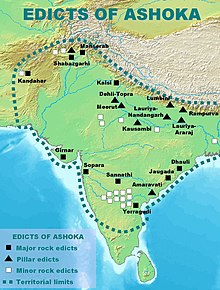
 Antefixes in position.
Antefixes in position.
 "Flame palmette" design (center) at
"Flame palmette" design (center) at 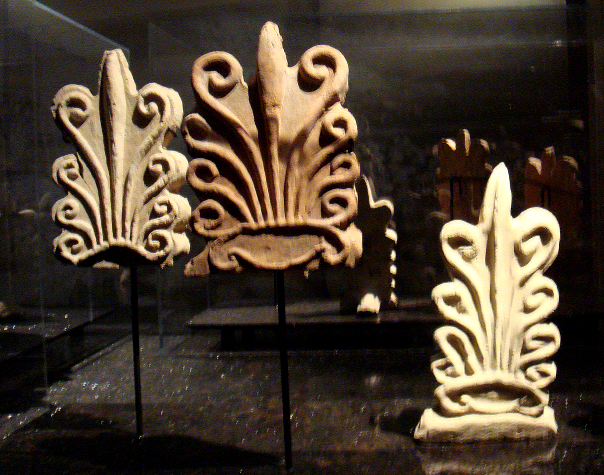



 The four lions of
The four lions of 

 The pillar at Sanchi also has a similar but damaged four-lion capital. There are two pillars at Rampurva, one with a bull and the other with a lion as crowning animals.
The pillar at Sanchi also has a similar but damaged four-lion capital. There are two pillars at Rampurva, one with a bull and the other with a lion as crowning animals. 



 A later imitation, the
A later imitation, the  A gateway decoration built by the
A gateway decoration built by the  Another imitation, an
Another imitation, an  The
The 


























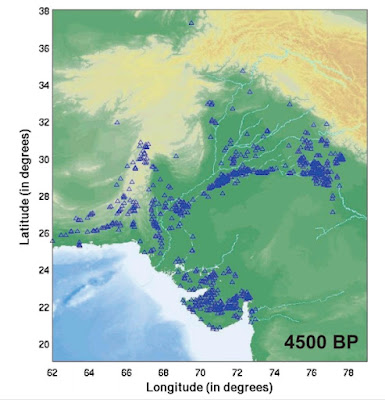 Meluhha settlements.
Meluhha settlements.
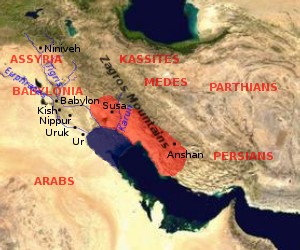 Location of Anshan in Elamite empire.
Location of Anshan in Elamite empire. Shahi Tump. Lead weight.
Shahi Tump. Lead weight.




 ayo'fish' rebus: aya'iron'ayas'alloy metal'
ayo'fish' rebus: aya'iron'ayas'alloy metal'


 eruvai 'eagle' rebus: eruvai 'copper'
eruvai 'eagle' rebus: eruvai 'copper'










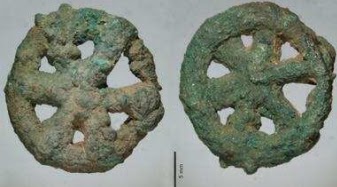 Cire perdue.
Cire perdue. 






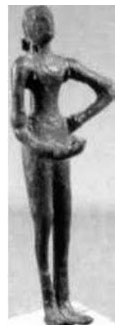 B
B


 Image: Courtesy: Kenoyer.
Image: Courtesy: Kenoyer.





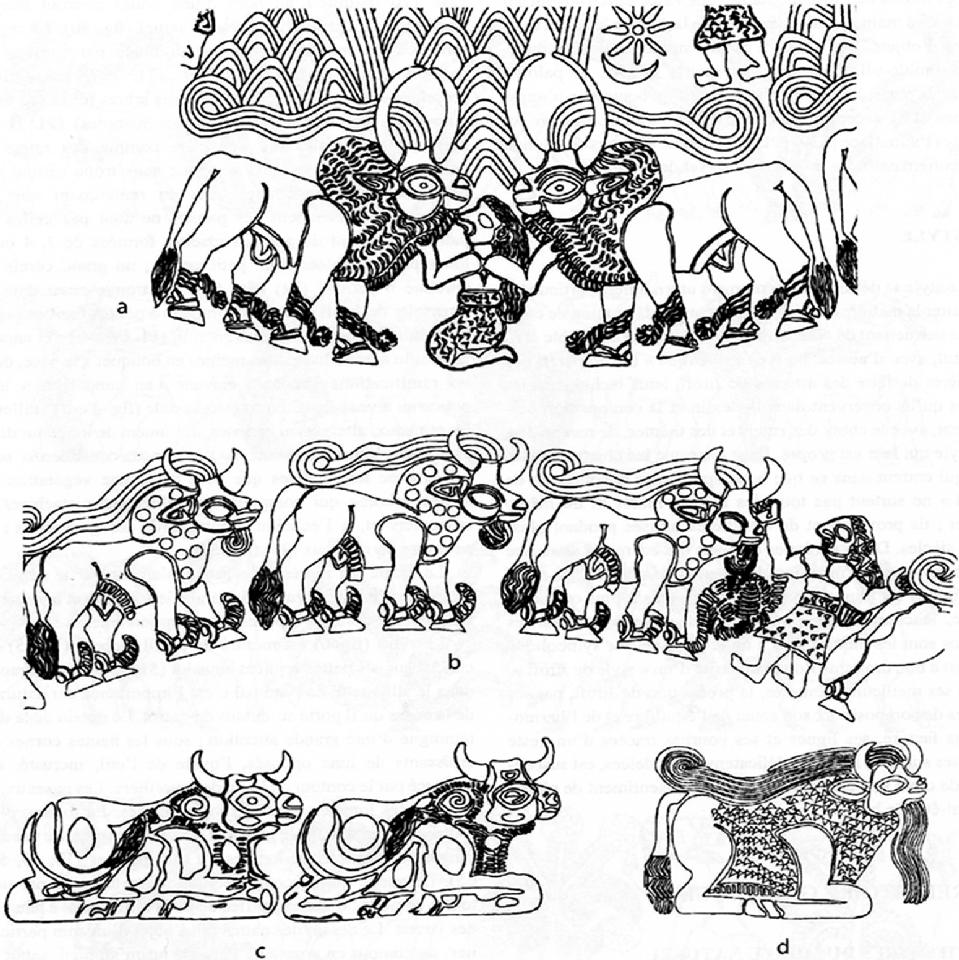























































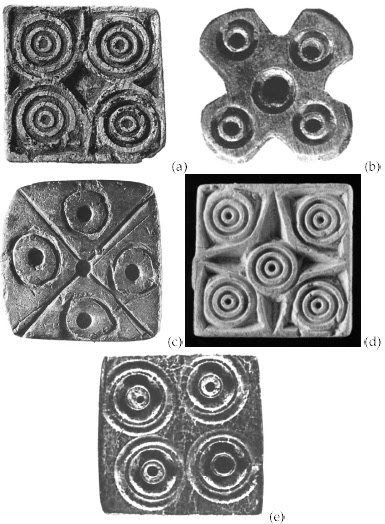
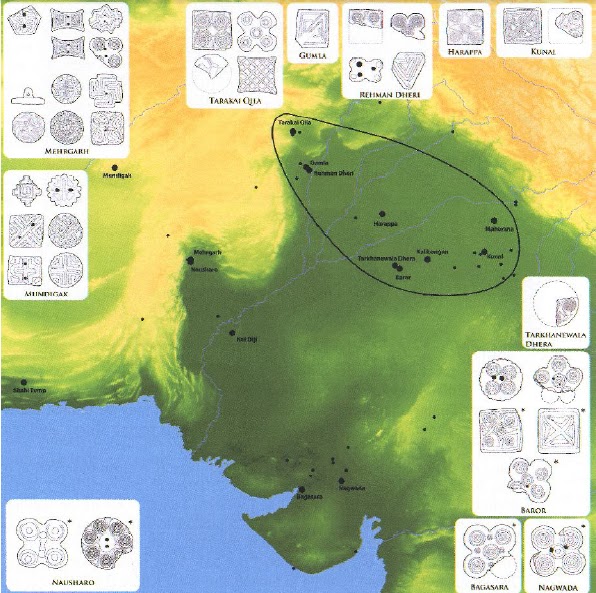
 Button seal. Harappa.
Button seal. Harappa.





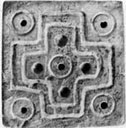




 Elamite bird (eagle?) with spread wings on an axe-head from Tepe Yahya (Lamberg-Karlovsky, C.C. and D.T. Potts. 2001. Excavations at Tepe Yahya, Iran, 1967-1975: The Third Millennium. Cambridge: Peabody Museum of Archaeology and Ethnology, Harvard University, p.216).
Elamite bird (eagle?) with spread wings on an axe-head from Tepe Yahya (Lamberg-Karlovsky, C.C. and D.T. Potts. 2001. Excavations at Tepe Yahya, Iran, 1967-1975: The Third Millennium. Cambridge: Peabody Museum of Archaeology and Ethnology, Harvard University, p.216).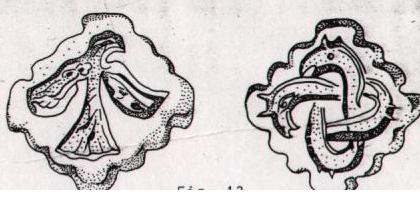 Two seals from Gonur 1 in thee Murghab delta; dark brown stone ((Sarianidi 1981 b: 232-233, Fig. 7, 8) eagle
Two seals from Gonur 1 in thee Murghab delta; dark brown stone ((Sarianidi 1981 b: 232-233, Fig. 7, 8) eagle 

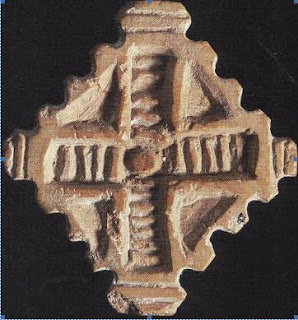
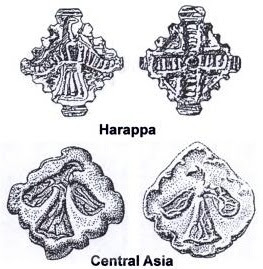 Hieroglyph: eruvai 'kite' Rebus:
Hieroglyph: eruvai 'kite' Rebus: 





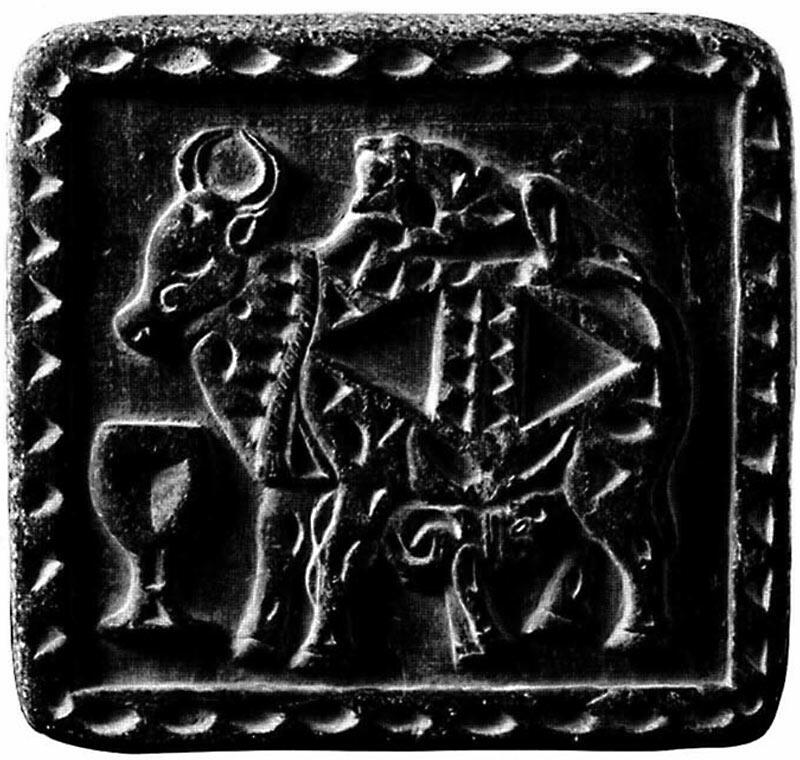








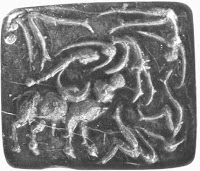



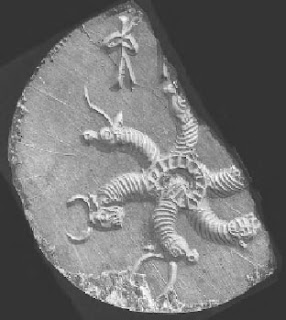







 The Function of a Chlorite Hand-Bag of the Halil Rud Civilization as Inferred from Its Wear Traces
The Function of a Chlorite Hand-Bag of the Halil Rud Civilization as Inferred from Its Wear Traces




















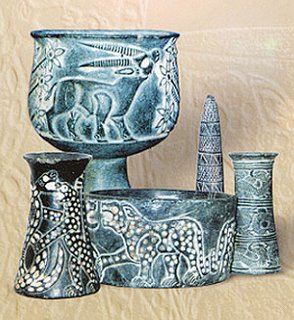
 Jiroft. Vase. Basket-shaped wallet.
Jiroft. Vase. Basket-shaped wallet. 
 m0301 Mohenjo-daro seal.
m0301 Mohenjo-daro seal.




 Stairs of Konar Sandal Ziggurat
Stairs of Konar Sandal Ziggurat





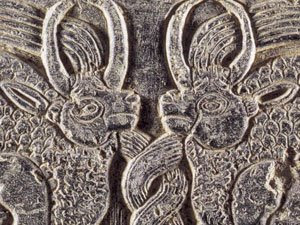





 Toy animals made for the Pola festival especially celebrated by the Dhanoje Kunbis. (Bemrose, Colo. Derby - Russell, Robert Vane (1916). The Tribes and Castes of the Central Provinces of India: volume IV. Descriptive articles on the principal castes and tribes of the Central Provinces. London: Macmillan and Co., limited. p. 40).
Toy animals made for the Pola festival especially celebrated by the Dhanoje Kunbis. (Bemrose, Colo. Derby - Russell, Robert Vane (1916). The Tribes and Castes of the Central Provinces of India: volume IV. Descriptive articles on the principal castes and tribes of the Central Provinces. London: Macmillan and Co., limited. p. 40).


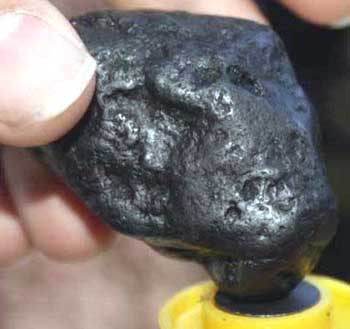


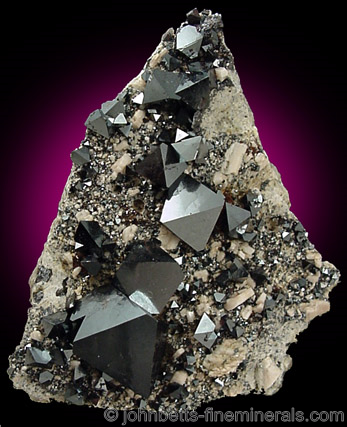
 Slip painted cylindrical jar, Kulli.
Slip painted cylindrical jar, Kulli.  The earliest animal figurines from Harappa are Early Harappan (Ravi Phase, Period 1 and Kot Diji Phase, Period 2) zebu figurines. They are typically very small with joined legs and stylized humps. A few of these zebu figurines have holes through the humps that may have allowed them to be worn as amulets on a cord or a string. One Early Harappan zebu figurine was found with the remains of a copper alloy ring still in this hole.
The earliest animal figurines from Harappa are Early Harappan (Ravi Phase, Period 1 and Kot Diji Phase, Period 2) zebu figurines. They are typically very small with joined legs and stylized humps. A few of these zebu figurines have holes through the humps that may have allowed them to be worn as amulets on a cord or a string. One Early Harappan zebu figurine was found with the remains of a copper alloy ring still in this hole.

 "Bull seal, Harappa. The majestic zebu bull, with its heavy dewlap and wide curving horns is perhaps the most impressive motif found on the Indus seals. Generally carved on large seals with relatively short inscriptions, the zebu motif is found almost exclusively at the largest cities of Mohenjo-daro and Harappa. The rarity of zebu seals is curious because the humped bull is a recurring theme in many of the ritual and decorative arts of the Indus region, appearing on painted pottery and as figurines long before the rise of cities and continuing on into later historical times. The zebu bull may symbolize the leader of the herd, whose strength and virility protects the herd and ensures the procreation of the species or it stands for a sacrificial animal. When carved in stone, the zebu bull probably represents the most powerful clan or top officials of Mohenjo-daro and Harappa. Harappa Archaeological Research Project."
"Bull seal, Harappa. The majestic zebu bull, with its heavy dewlap and wide curving horns is perhaps the most impressive motif found on the Indus seals. Generally carved on large seals with relatively short inscriptions, the zebu motif is found almost exclusively at the largest cities of Mohenjo-daro and Harappa. The rarity of zebu seals is curious because the humped bull is a recurring theme in many of the ritual and decorative arts of the Indus region, appearing on painted pottery and as figurines long before the rise of cities and continuing on into later historical times. The zebu bull may symbolize the leader of the herd, whose strength and virility protects the herd and ensures the procreation of the species or it stands for a sacrificial animal. When carved in stone, the zebu bull probably represents the most powerful clan or top officials of Mohenjo-daro and Harappa. Harappa Archaeological Research Project."































 Slip painted terracotta jar. Kulli.
Slip painted terracotta jar. Kulli. 



















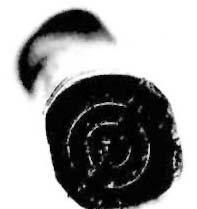
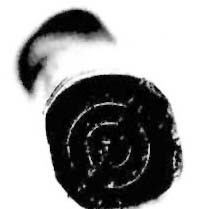


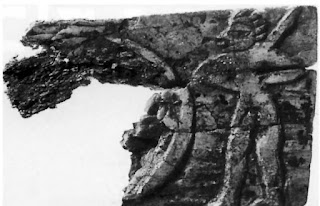













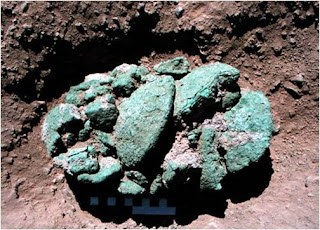








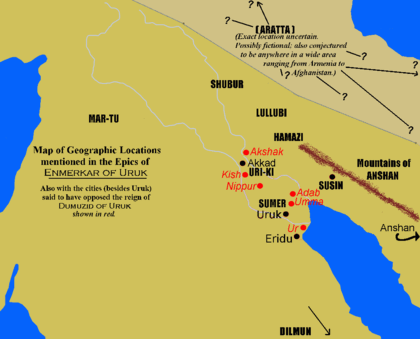









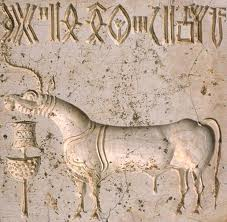
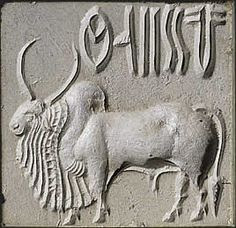
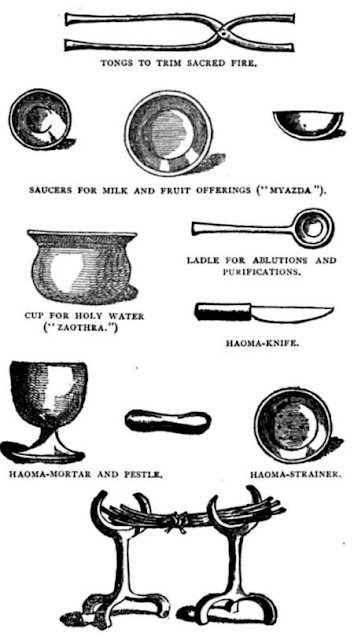
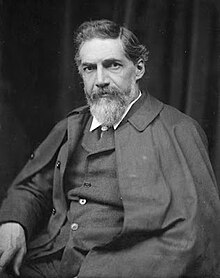

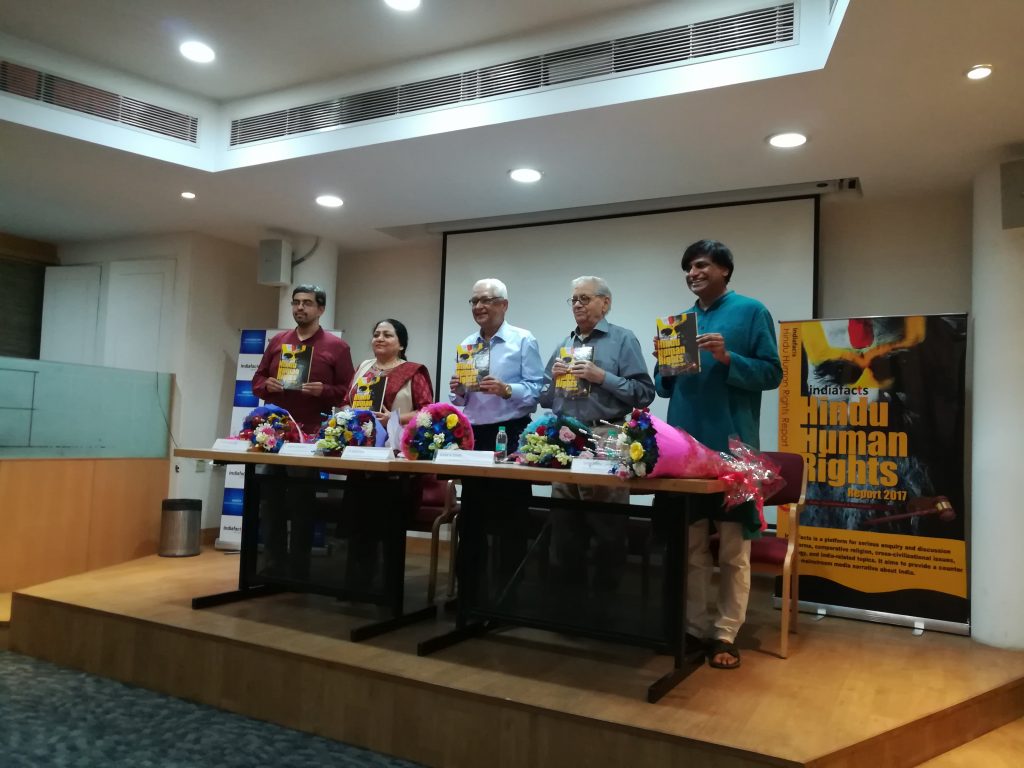
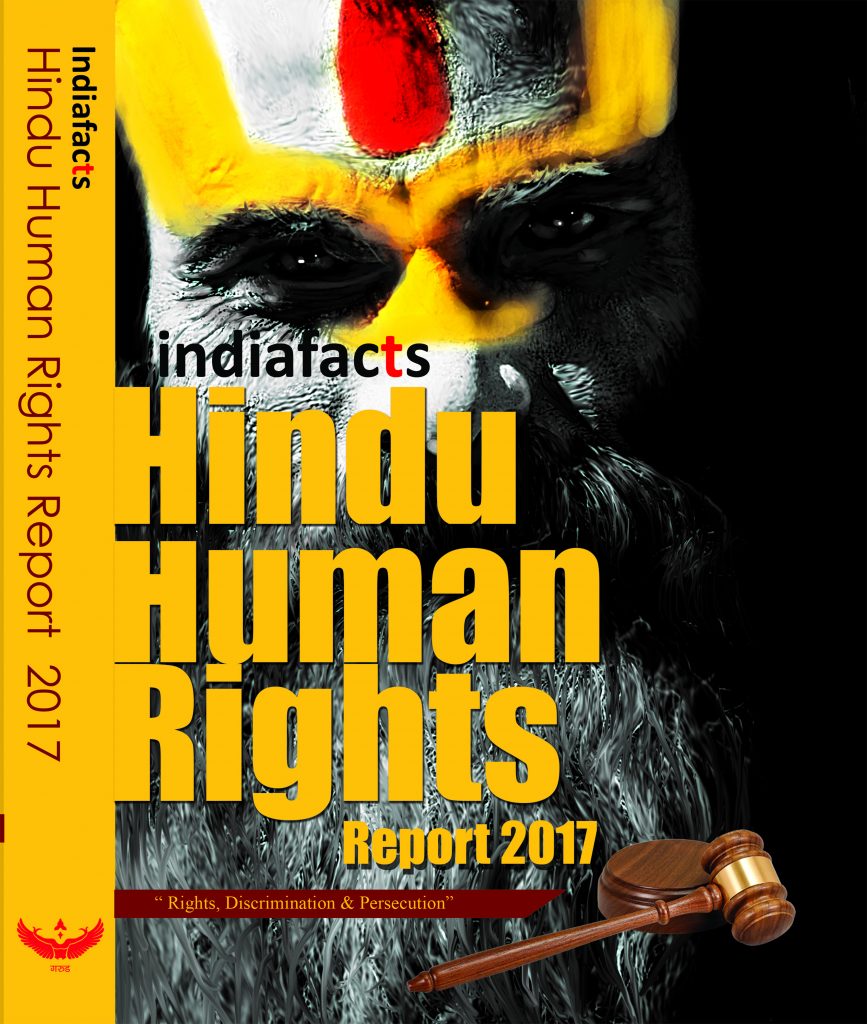
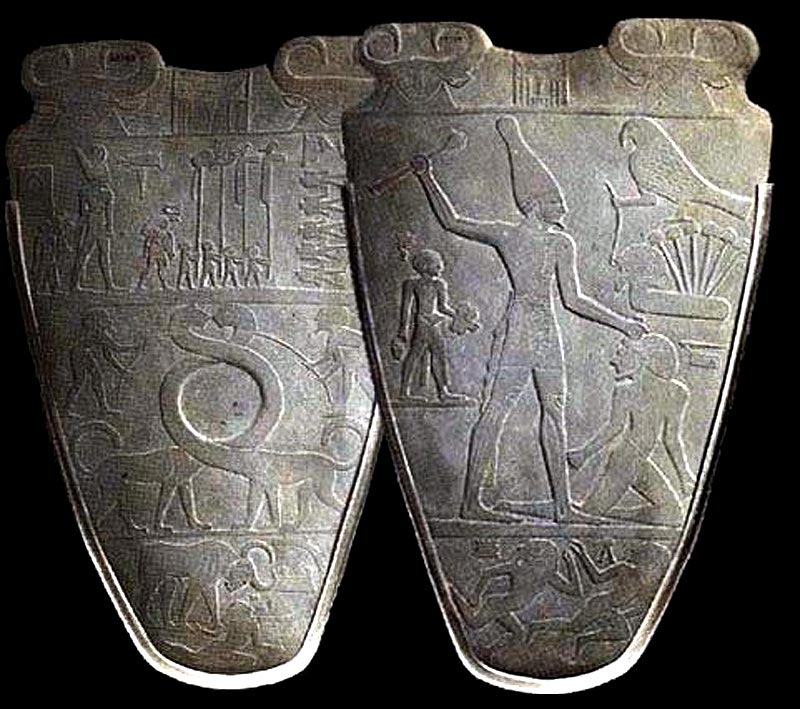


 Daimabad seal.
Daimabad seal. Source:
Source: 
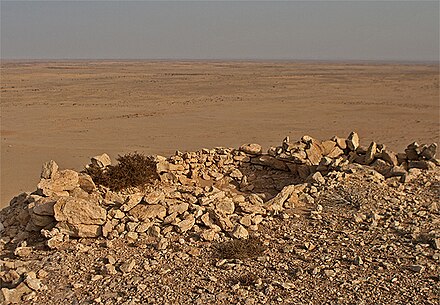
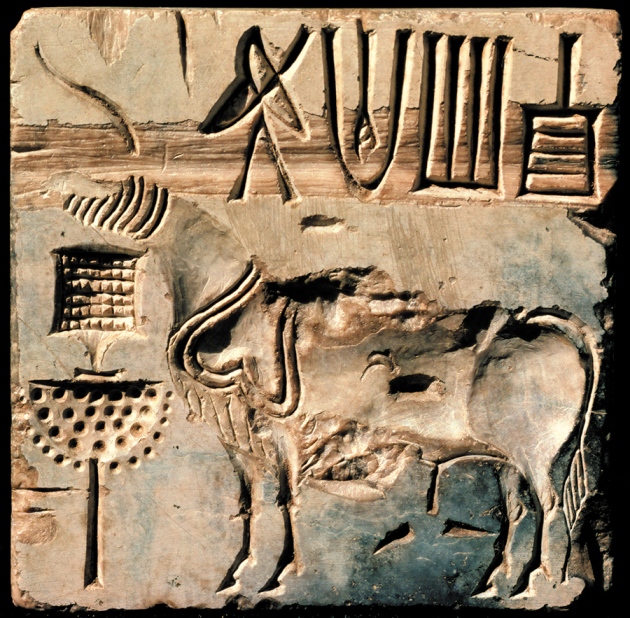

 Kondana caves near Karjat, Maharashtra.
Kondana caves near Karjat, Maharashtra.








